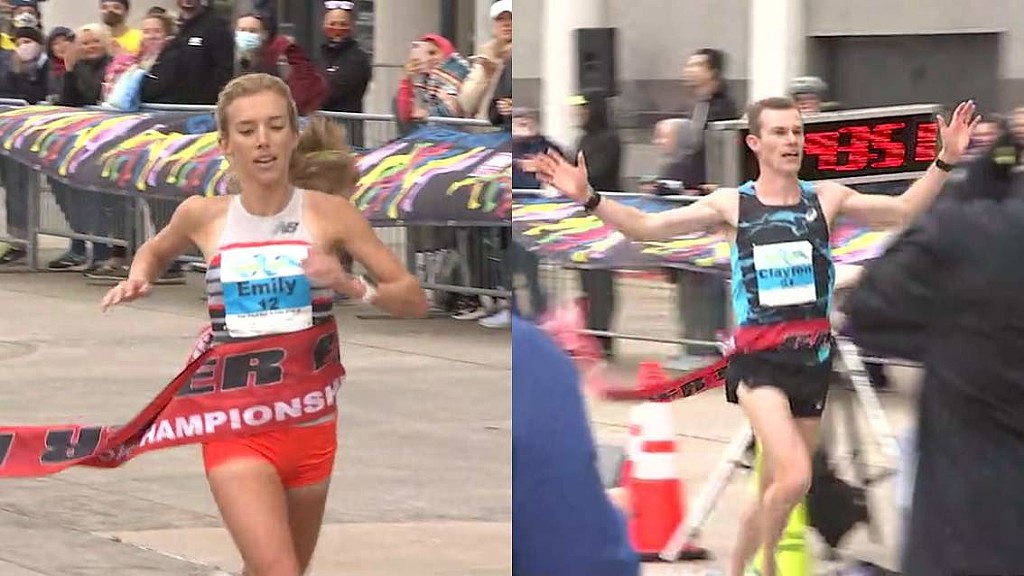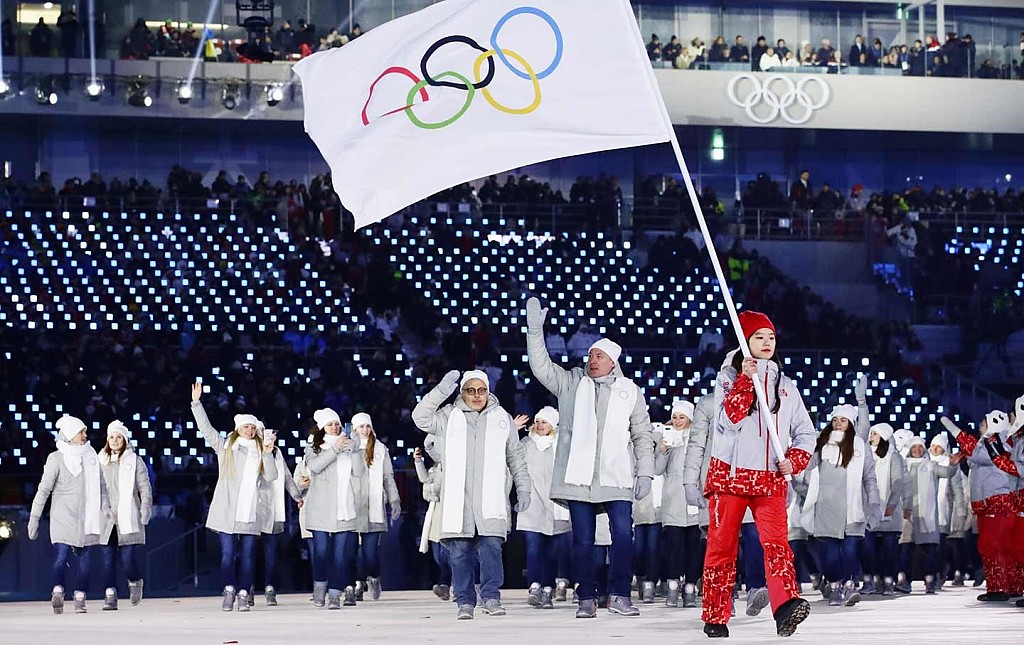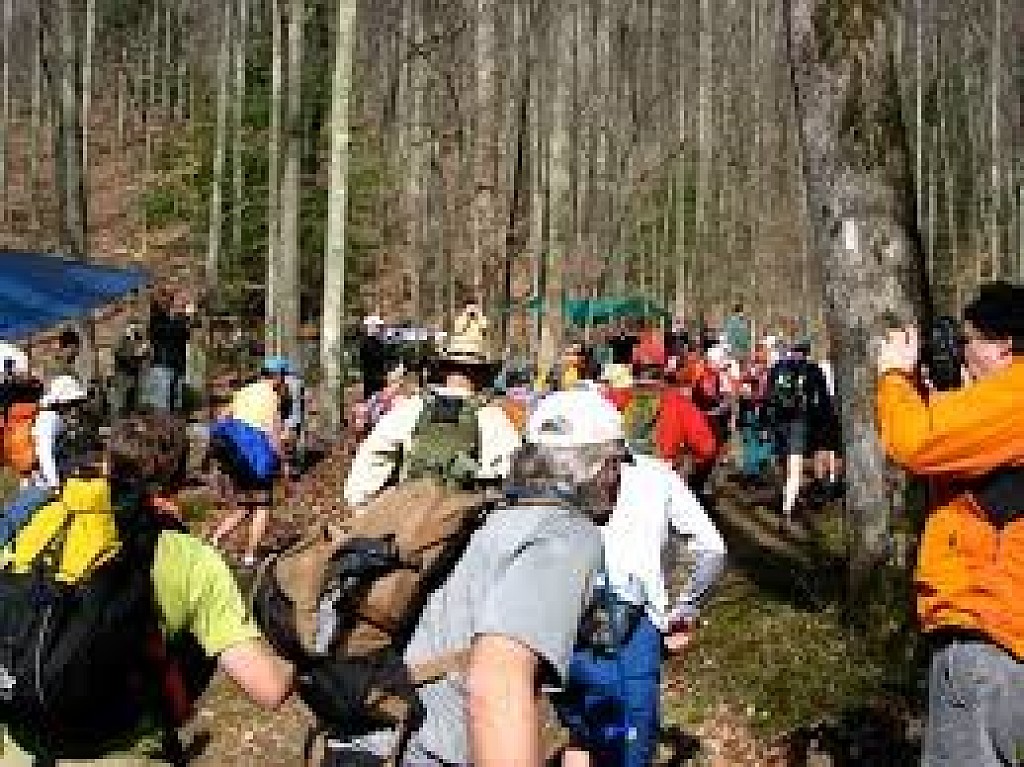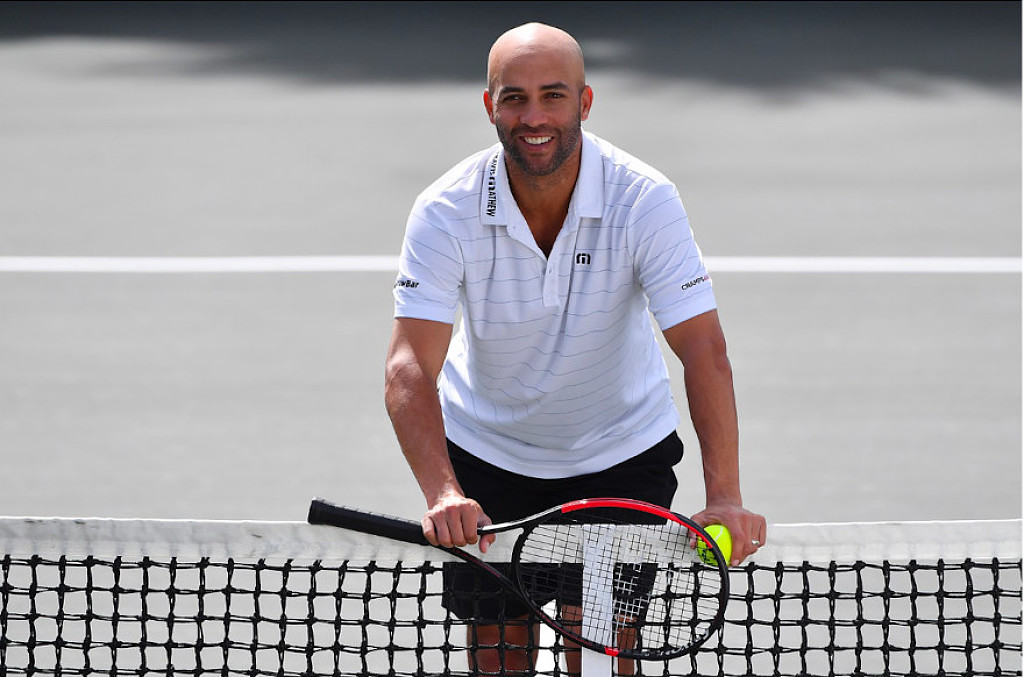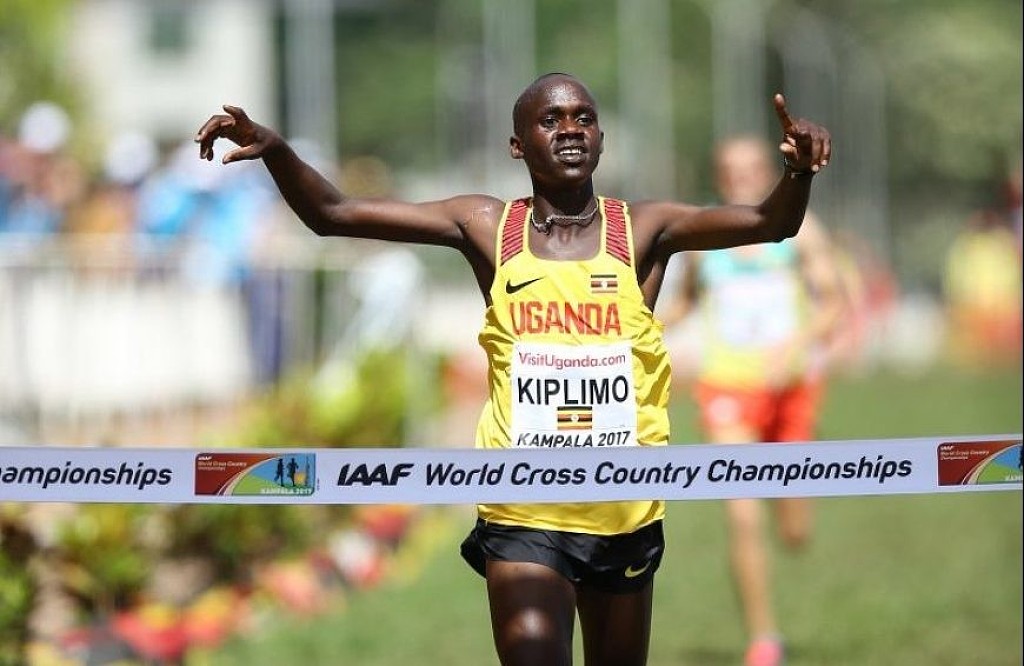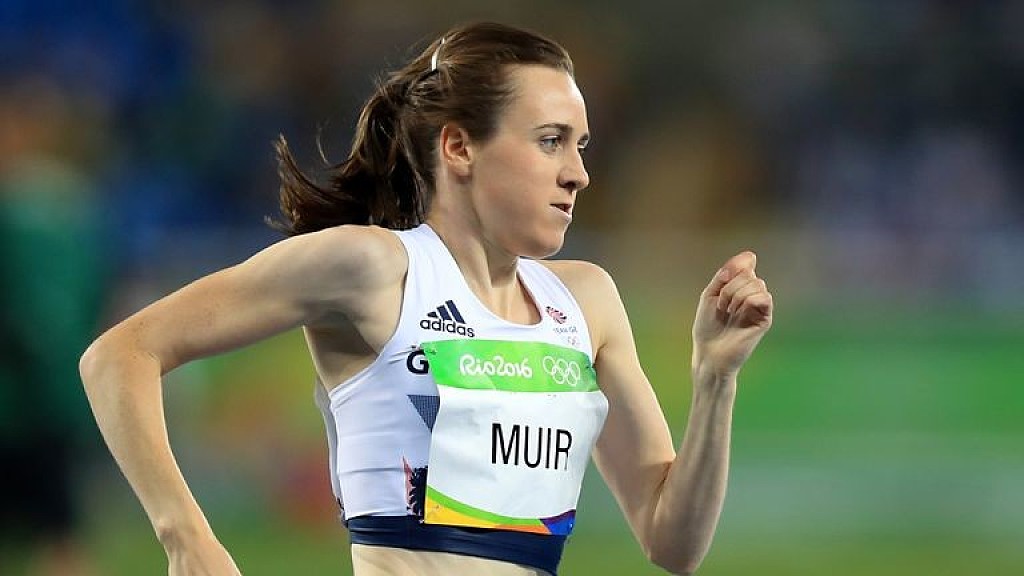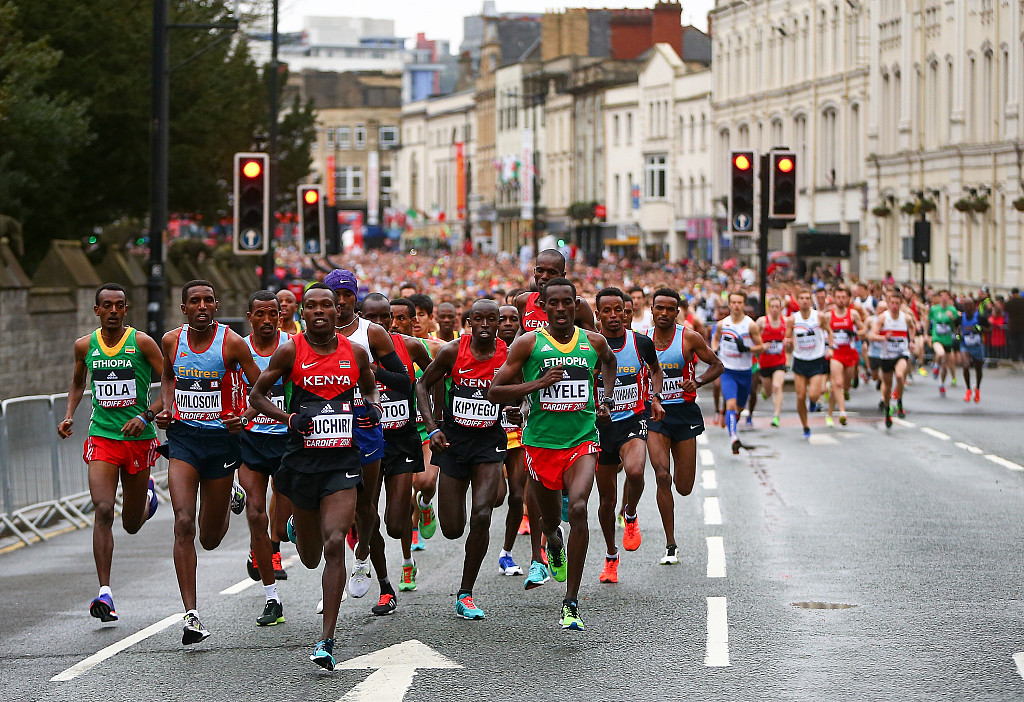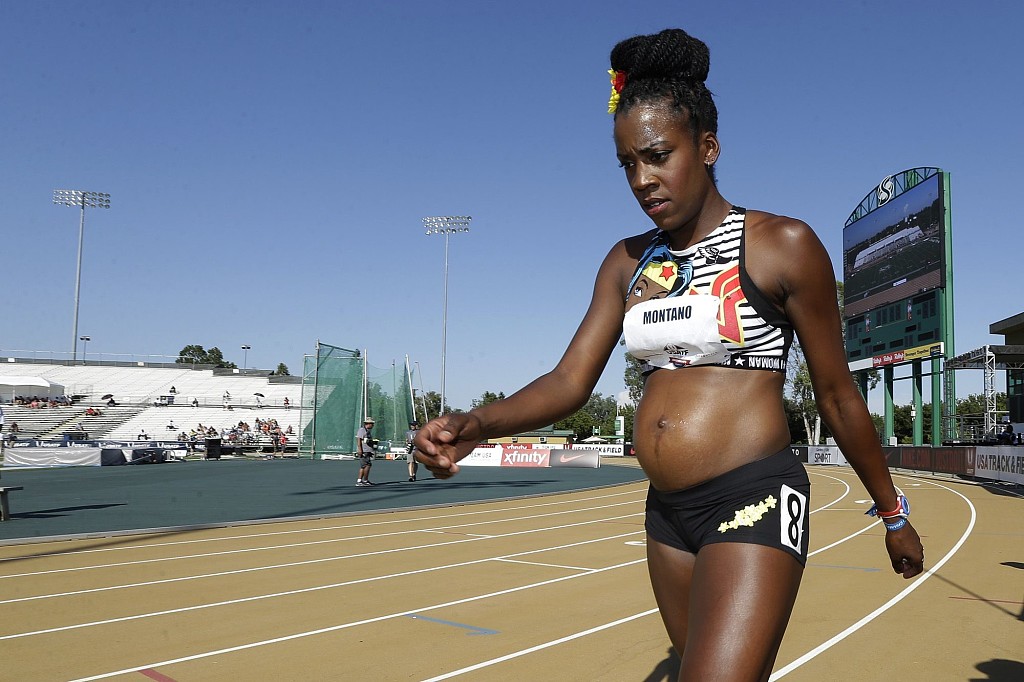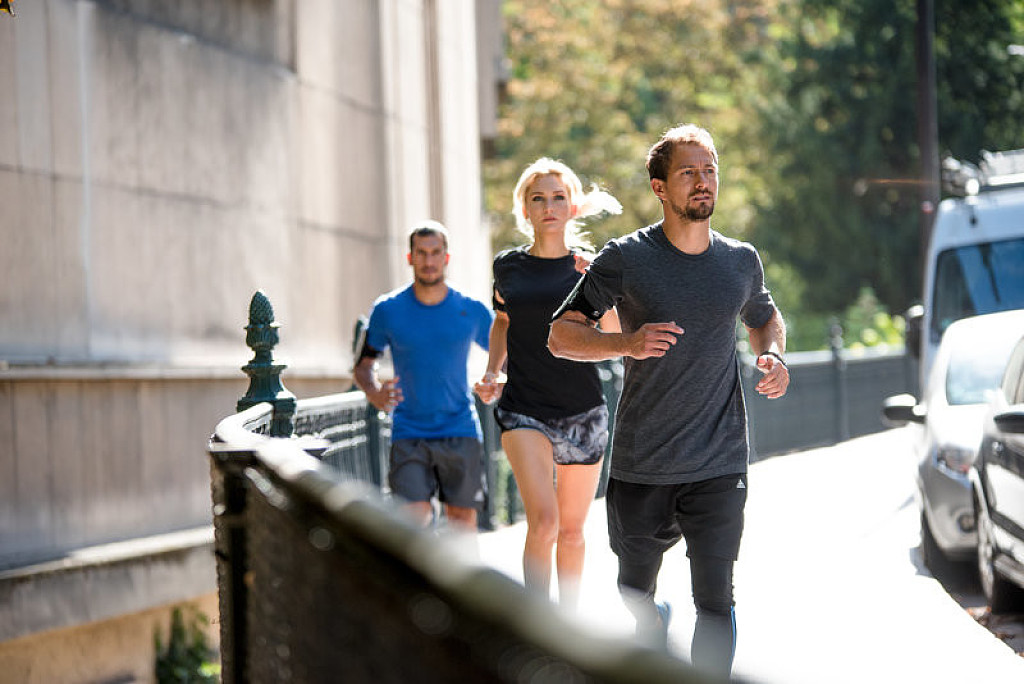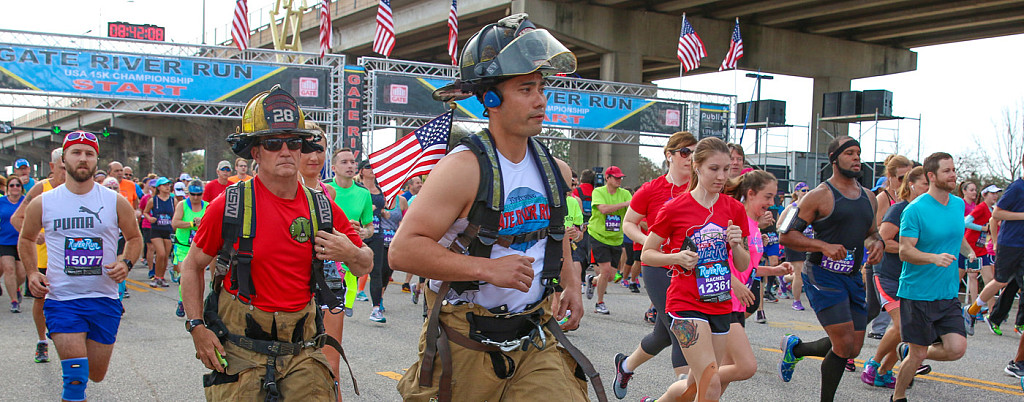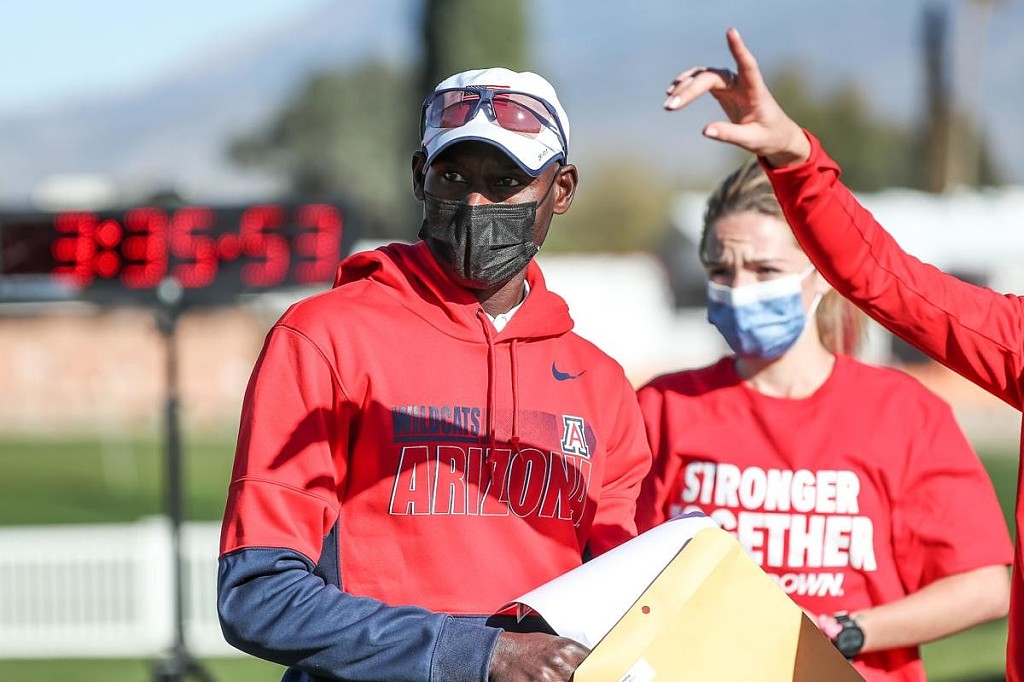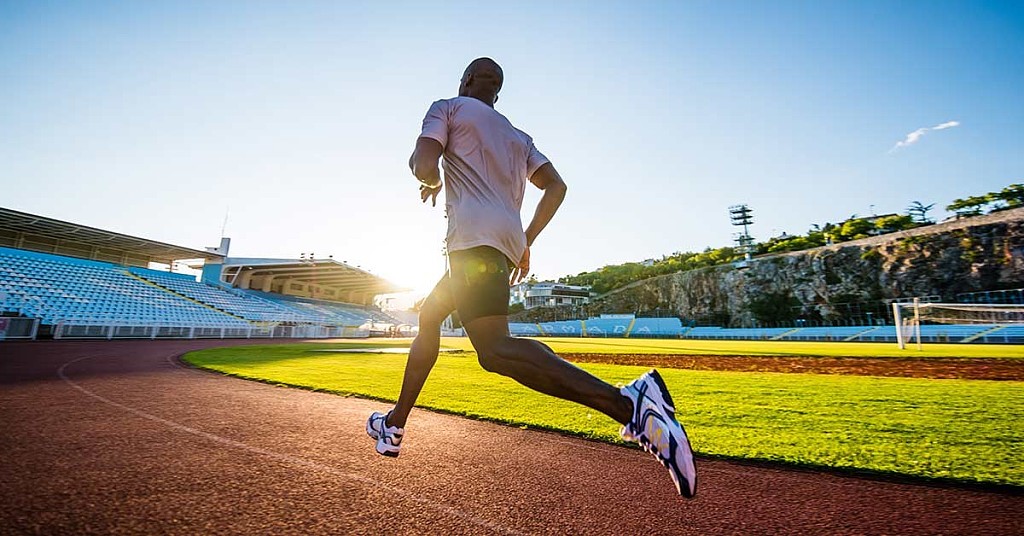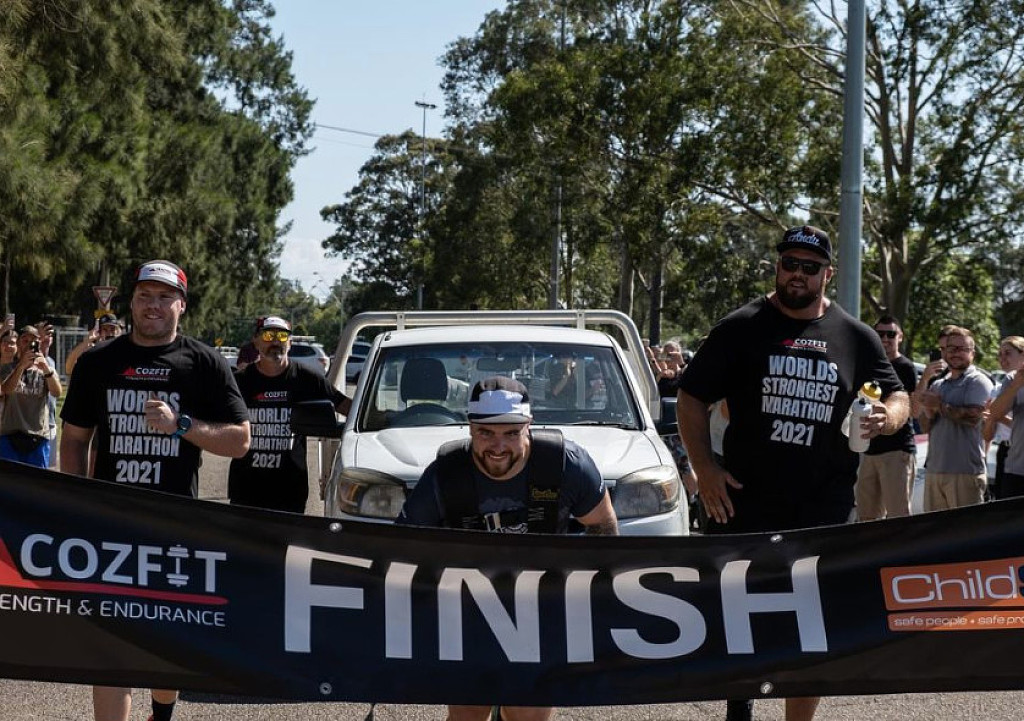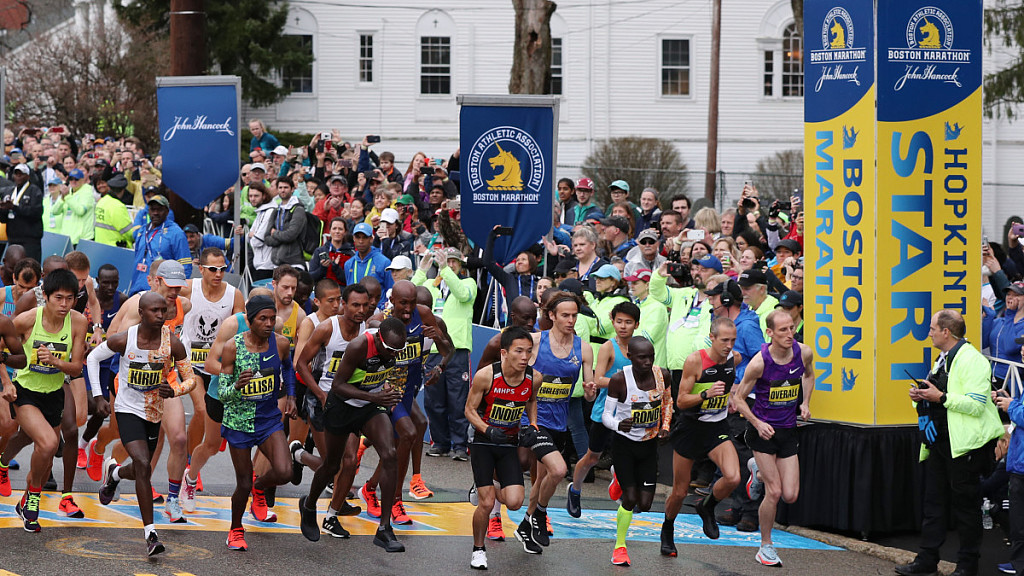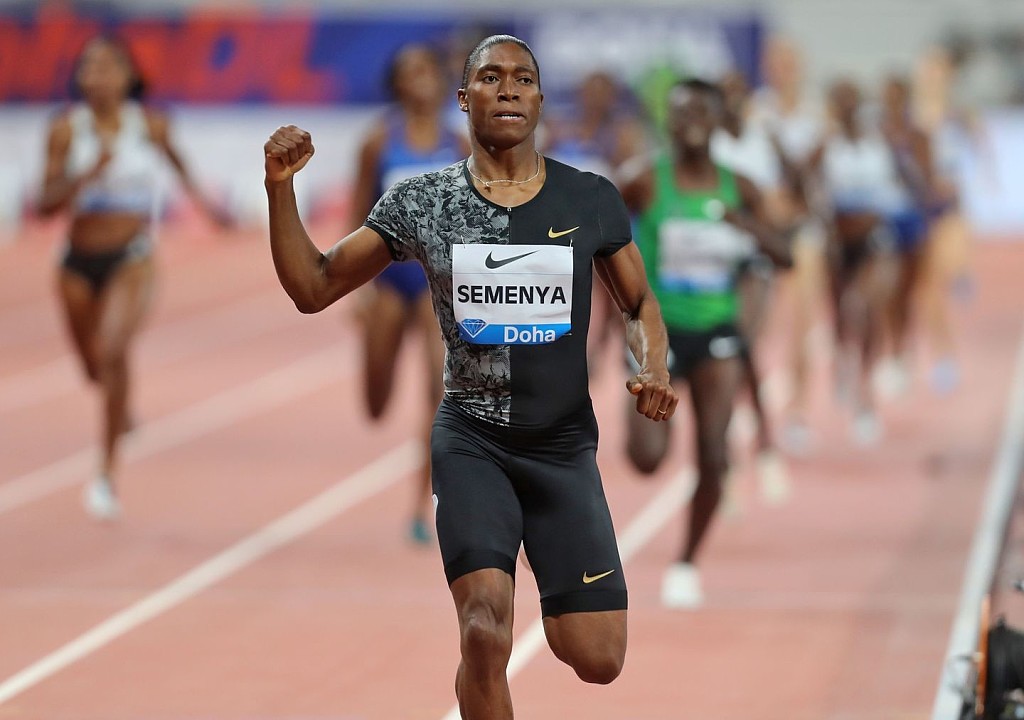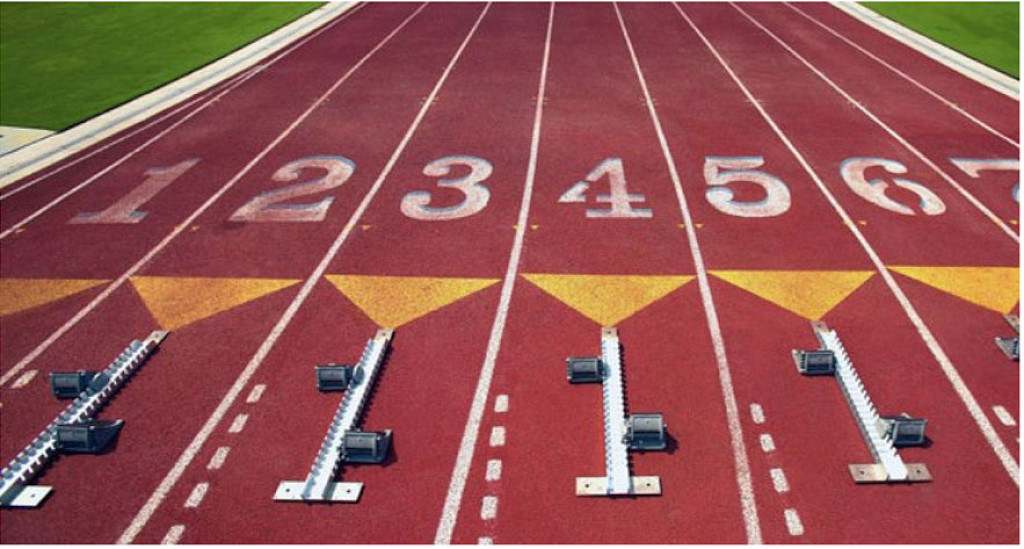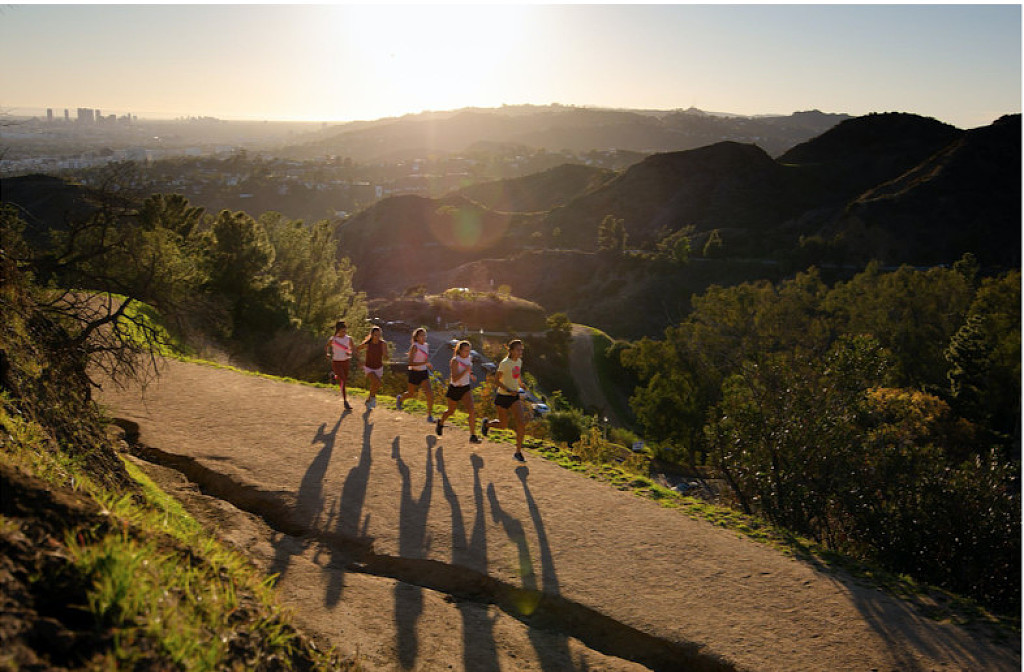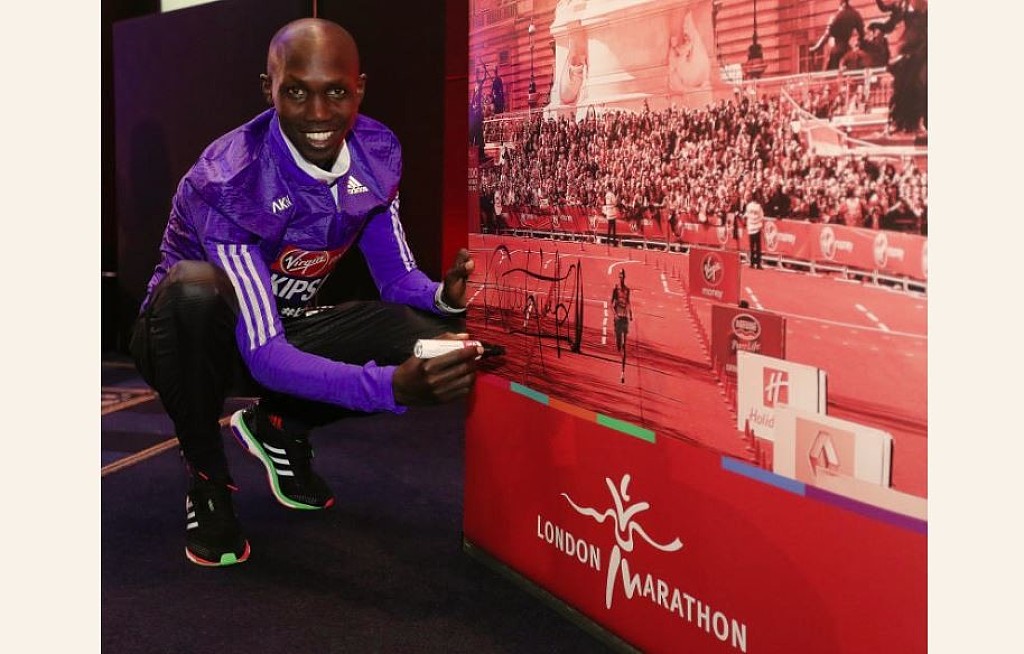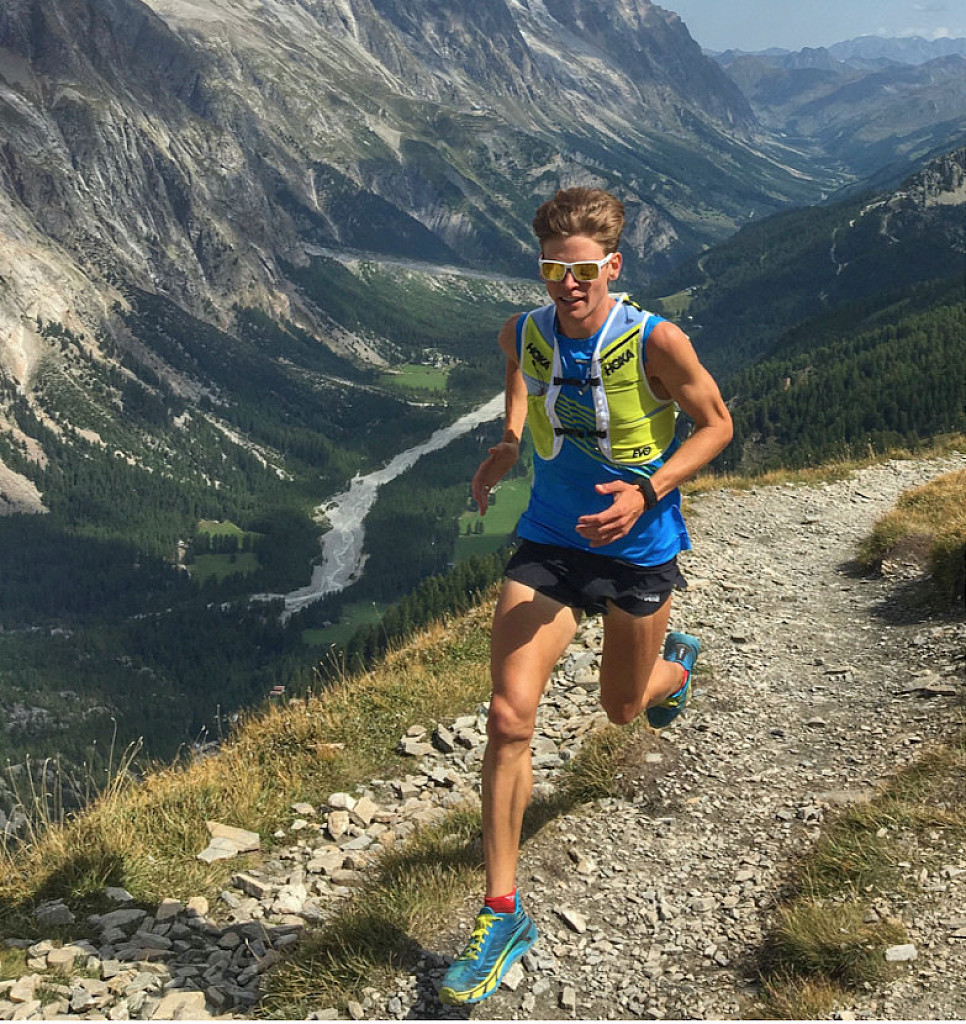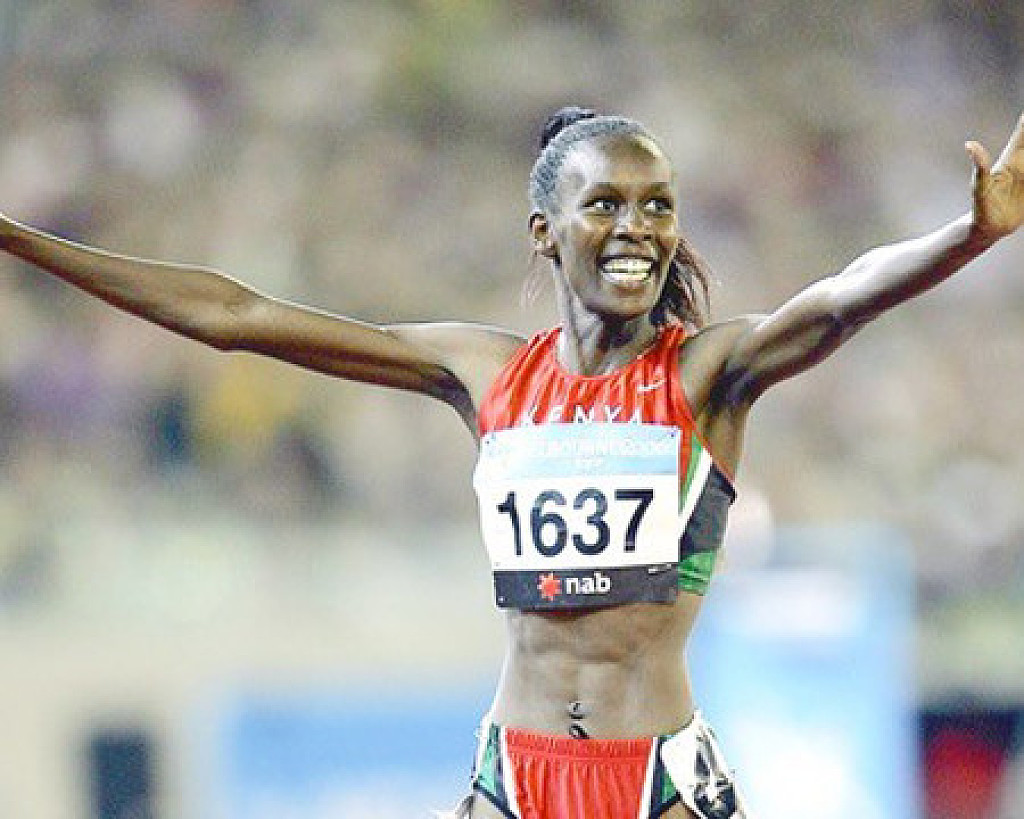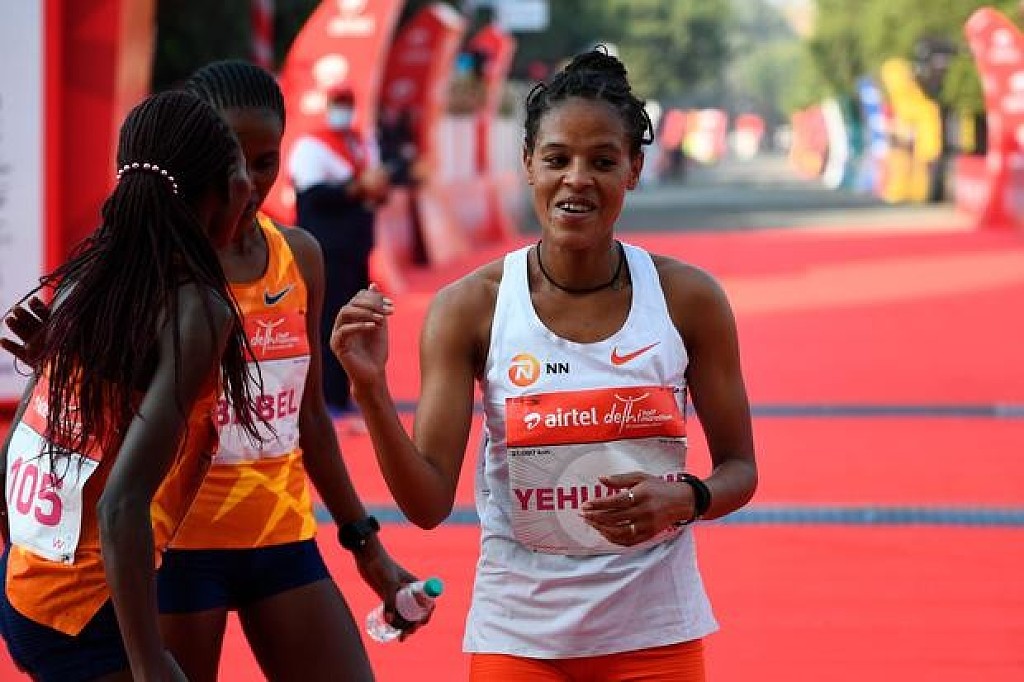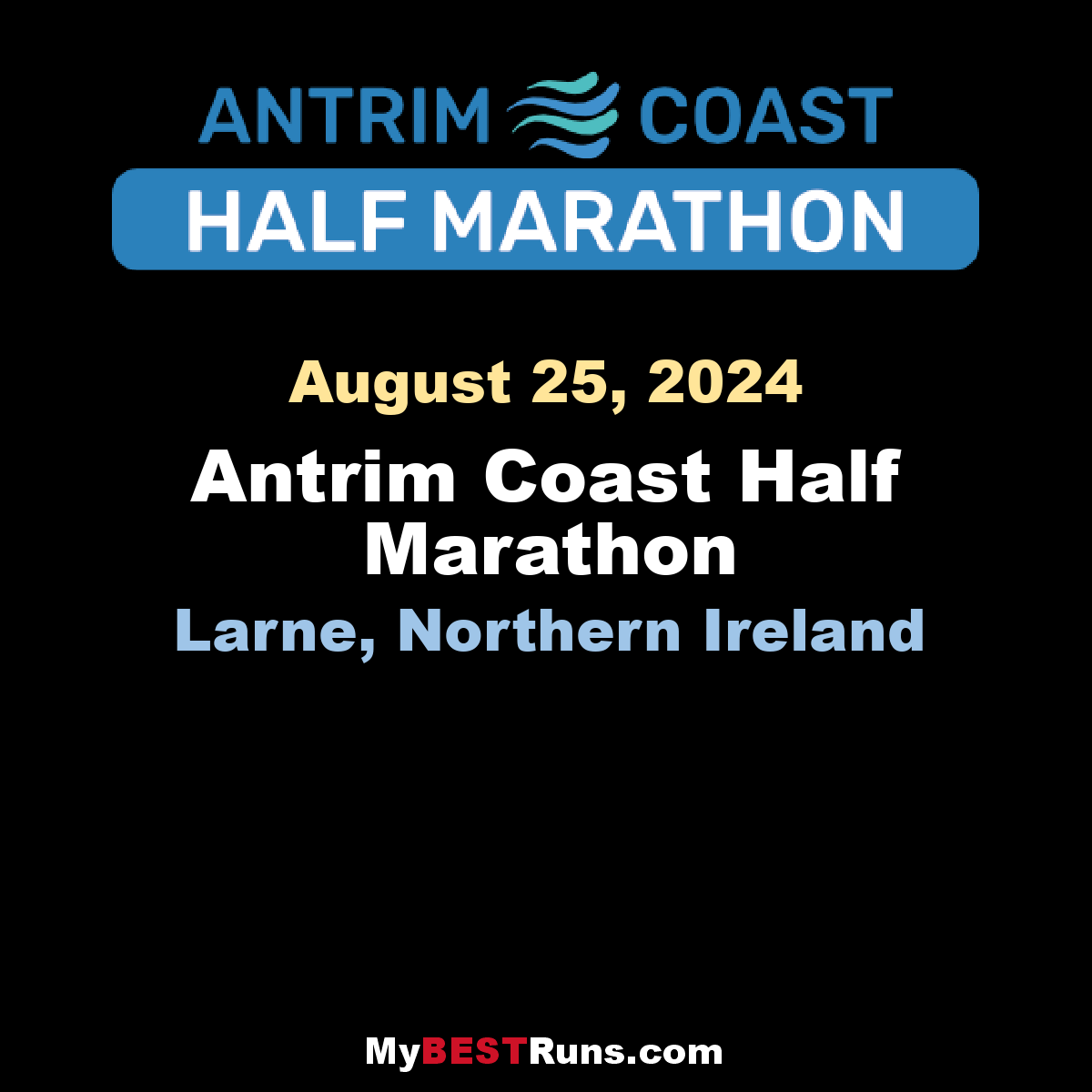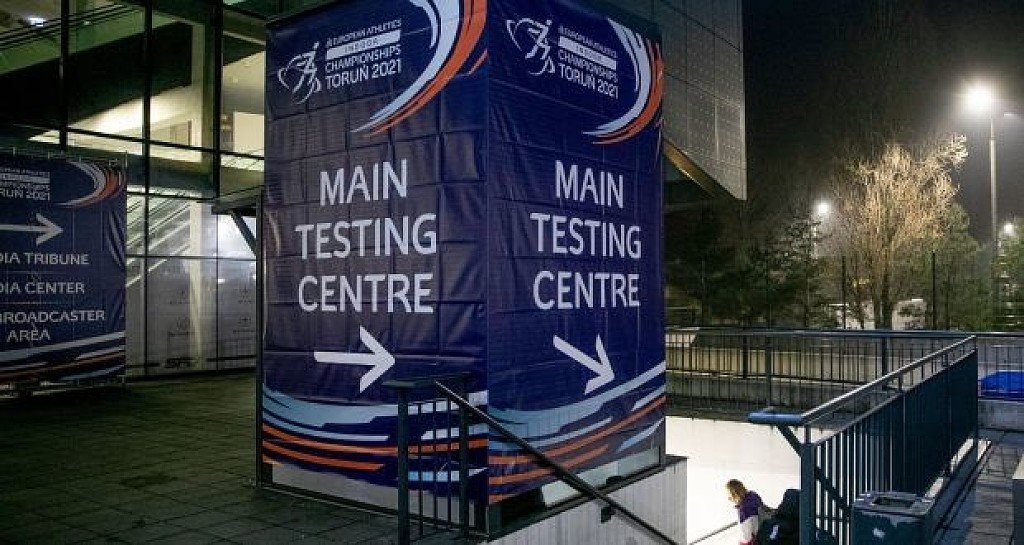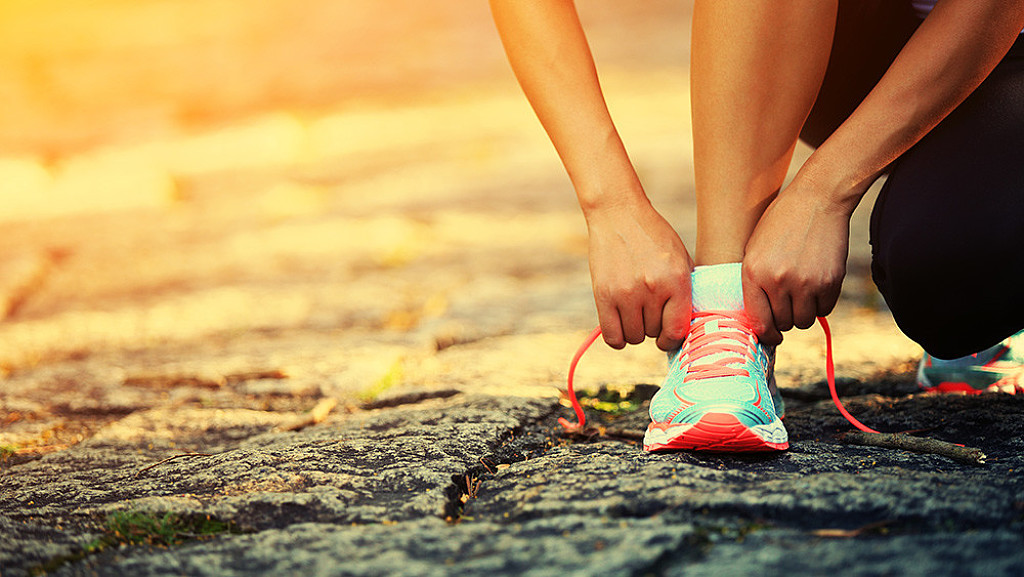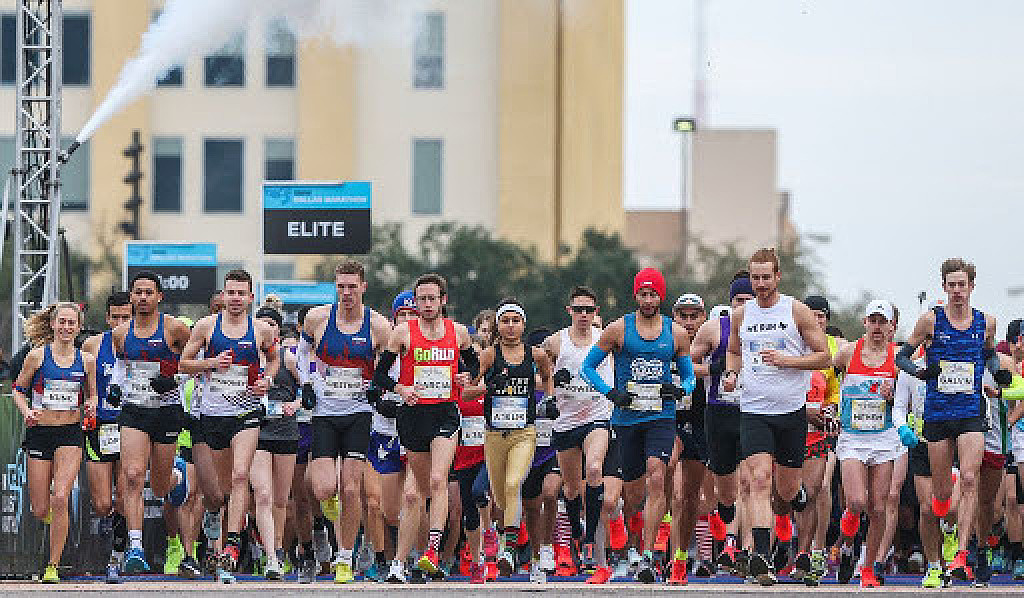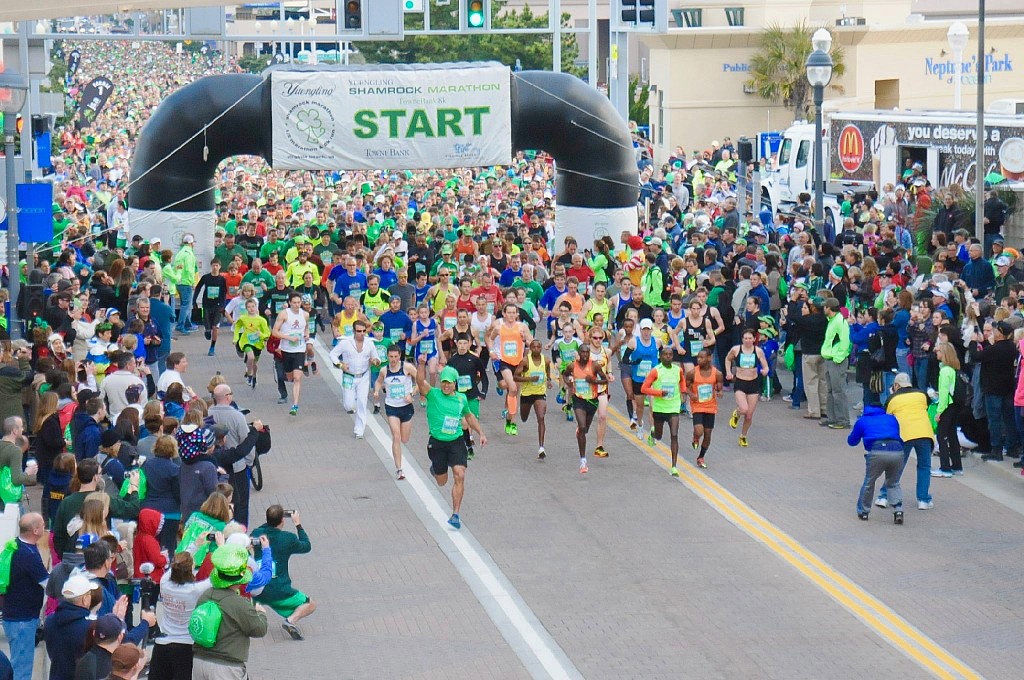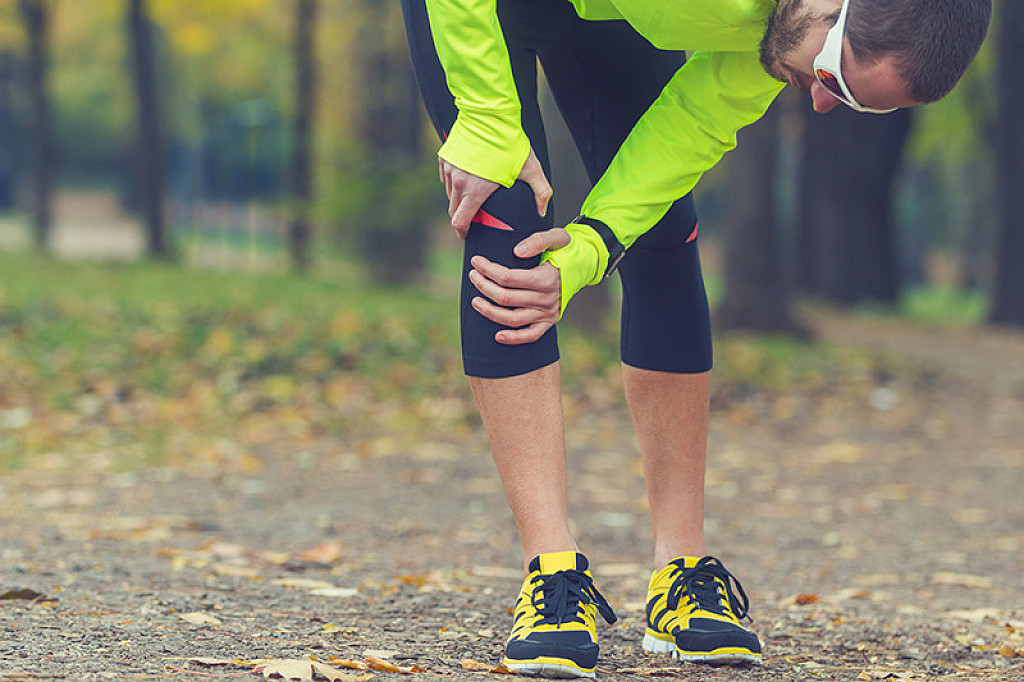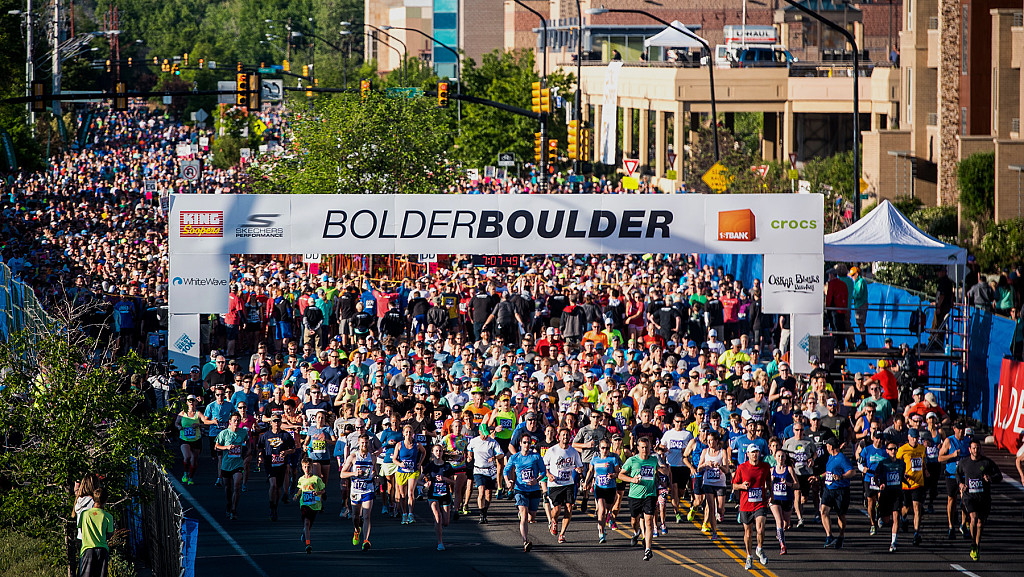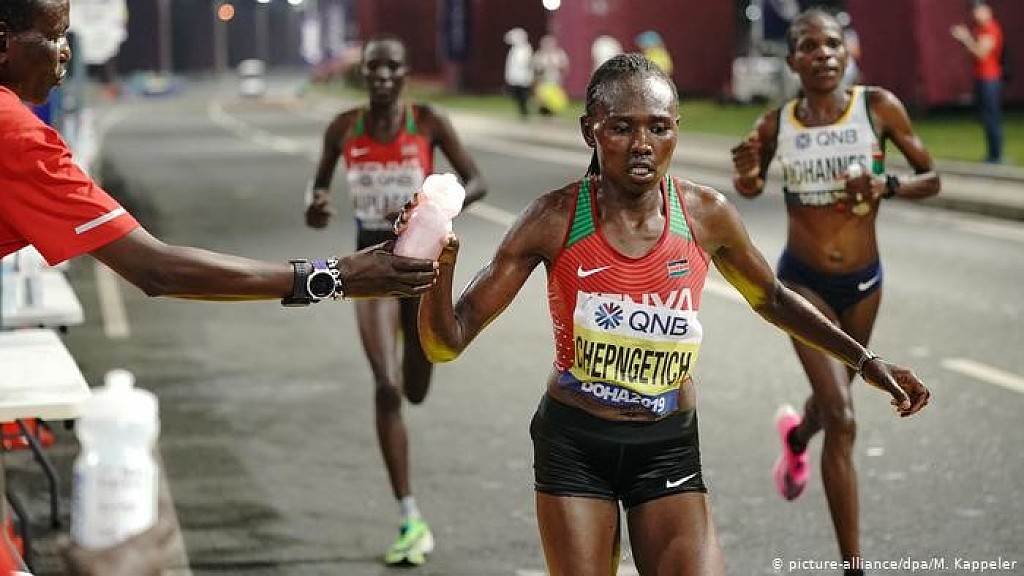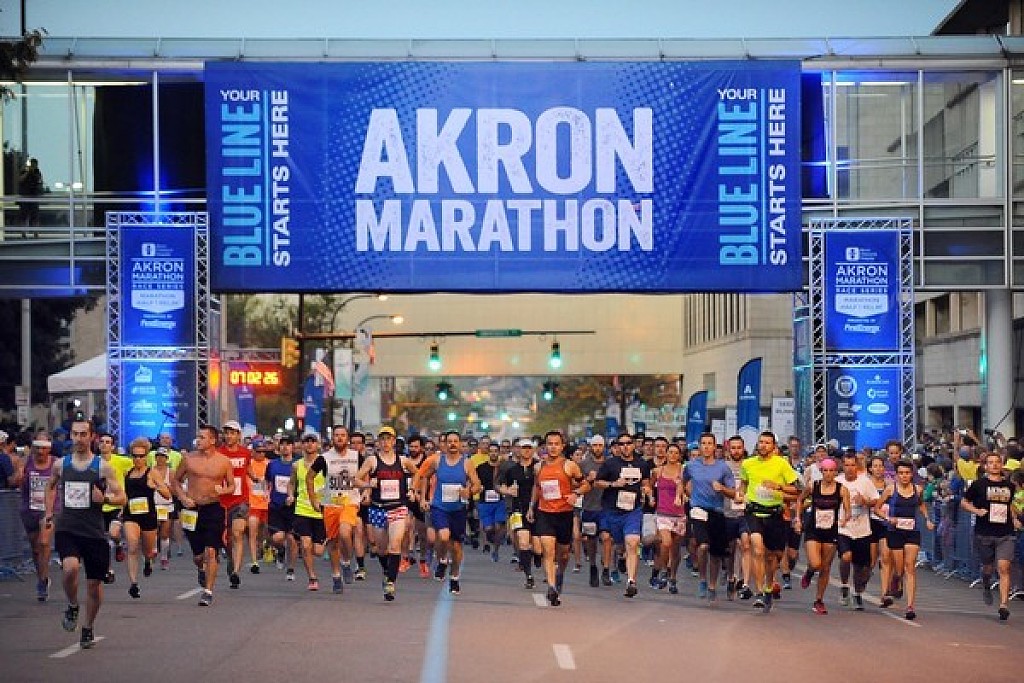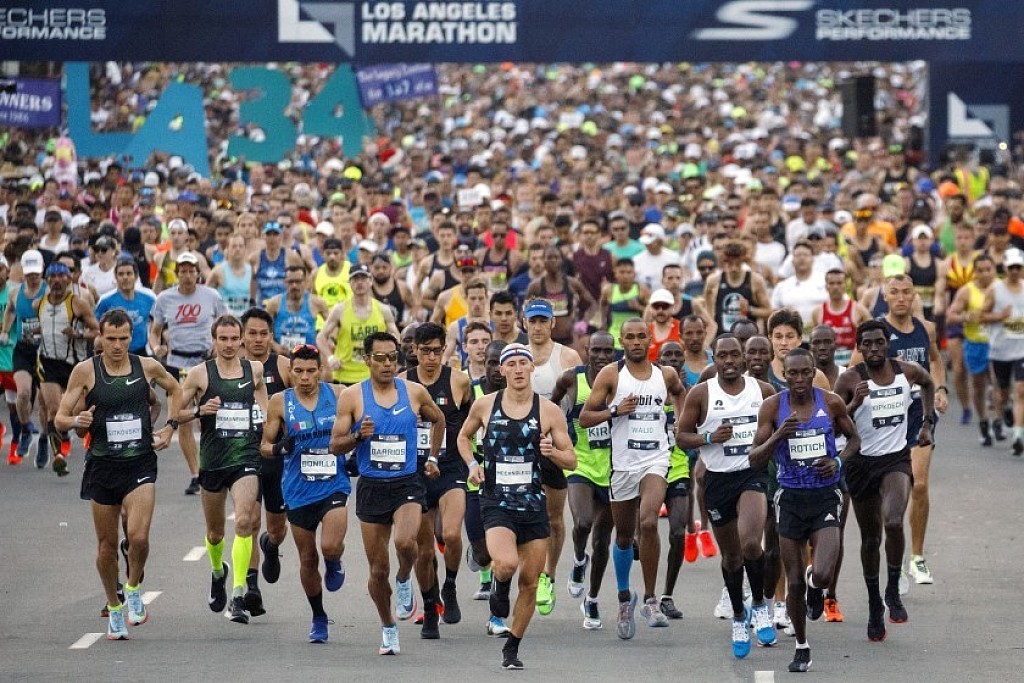Running News Daily
Running News Daily is edited by Bob Anderson in Mountain View, California USA and team in Thika Kenya, La Piedad Mexico, Bend Oregon, Chandler Arizona and Monforte da Beira Portugal. Send your news items to bob@mybestruns.com Advertising opportunities available. Over one million readers and growing. Train the Kenyan Way at KATA Running Retreat Kenya. (Kenyan Athletics Training Academy) in Thika Kenya. Opening in june 2024 KATA Running retreat Portugal. Learn more about Bob Anderson, MBR publisher and KATA director/owner, take a look at A Long Run the movie covering Bob's 50 race challenge.
Index to Daily Posts · Sign Up For Updates · Run The World Feed
Emily Sisson and Clayton Young winners at Gate River Run
Emily Sisson started fast and never looked back.
On a blustery, windy Saturday morning in Jacksonville, Sisson turned in a dominant effort to win the 44th Gate River Run in dominant fashion.
Sisson, a professional runner who competes for New Balance, was superb in her first 15K. She built a lead not long into the Gate and stretched it throughout. Clayton Young, the men’s winner, didn’t have nearly the buffer as Sisson. He overcame a bunched pack in the final mile and won by two seconds in 43 minutes, 52 seconds.

Sisson finished in 48:09, nearly a minute in front of Lindsay Flanagan. It was the fifth-fastest women’s time in the race history.
Sisson was coming off of a personal-best 14:55.82 in the 5K at the Sound Running Invite earlier this month in Los Angeles, but a 15K was not a distance in her wheelhouse.

“I wanted to run pretty aggressively from the start. With the win, that was kind of an unexpected element so I had to run a bit off field,” Sisson. “It was such an amazing field. They did a great job putting this on. I had a great time.”
Sisson’s win earned her $10,000, and she picked up an extra $5,000 for being the first person across the finish line with the five-minute equalizer bonus.
“The only part I found really tricky was the last bridge at the end,” I was going up into the wind on it and I felt like I was nearly walking,” Sisson said. “Then we had the downhill to the finish so that was nice.”
John Raneri led at the 5K split, but that 18-second margin dissipated by the time the Hart Bridge. Young, in a pack of runners at the Green Monster, slowly began chipping away inside that final mile and a half. A newcomer to the race, Young said that he didn’t know when to start his final kick until he saw the finish line not far in the distance.
Young pulled away in the final mile and turned in a 43:52. He was two seconds in front of Abbabiya Simbassa (43:54). The top 11 men’s finishers were stacked together and separated by just 23 seconds. The race’s 2019 winner, Shadrack Kipchirchir was third in 43:55. Last year’s winner, Frank Lara finished seventh in 44:02.
“They don’t call it the Green Monster for nothing. I was surprised there was such a pack at the top of that gigantic overpass,” Young said. “I hadn’t done this last mile before so I didn’t know when to make my move but I saw the finish line and I was like, now or never, and so I made my move and just didn’t look back.”
(03/20/2021) ⚡AMPby Justin Barney
Gate River Run
The Gate River Run (GRR) was first held in 1978, formerly known as the Jacksonville River Run, is an annual 15-kilometer road running event in Jacksonville, Fla., that attracts both competitive and recreational runners -- in huge numbers! One of the great running events in America, it has been the US National 15K Championship since 1994, and in 2007...
more...A maximum of 10 Russian track and field athletes will be able to compete at this summer’s Tokyo Olympics
Ten Russians to compete in Tokyo Olympic as World Athletics restored its Authorised Neutral Athlete (ANA) scheme after a council meeting.
The council has decided to allow ANAs “to start competing again, subject to a cap of 10 for the Olympic Games”, said Rune Andersen, chair of the Russian Taskforce overseeing the country’s reinstatement efforts.
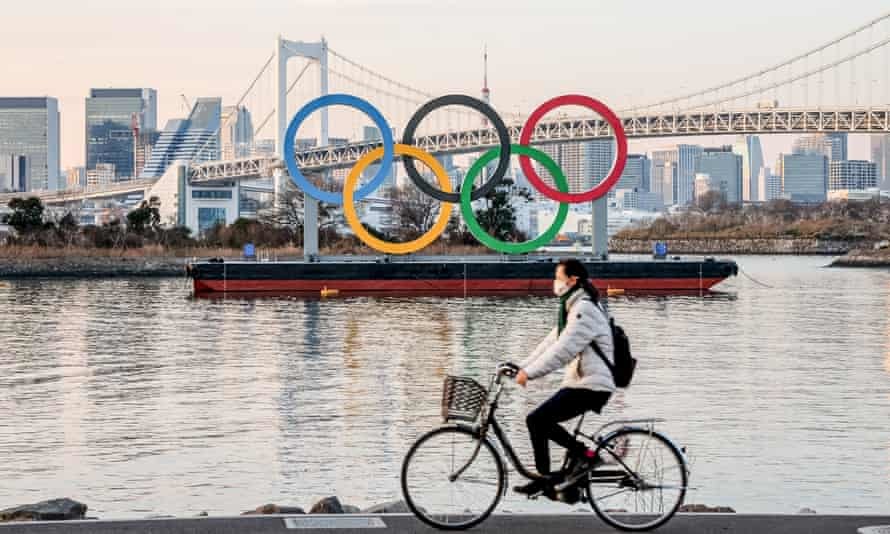
The ANA scheme allows Russian competitors who meet strict anti-doping criteria to participate in global track and field events, but under a neutral flag and in neutral clothing.
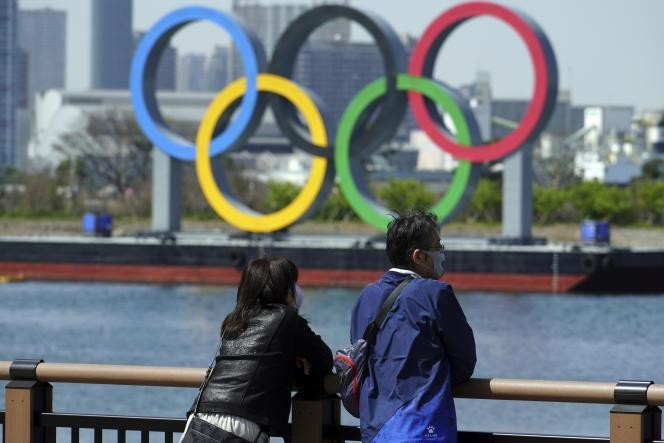
World Athletics temporarily suspended the ANA scheme in November 2019 as part of the suspension of the Russian athletics federation (RusAF) reinstatement process following charges by the track doping watchdog Athletics Integrity Unit (AIU) that RusAF helped cover up missed tests by Russian high jumper Danil Lysenko.
That decision meant that there were no Russian athletes at this month’s European indoor championships in Torun, Poland.
There had been 29 Russians competing as ANAs at the Doha world champs in September/October 2019, winning two golds, three silvers and one bronze medal.
(03/20/2021) ⚡AMPTokyo 2020 Olympic Games
Fifty-six years after having organized the Olympic Games, the Japanese capital will be hosting a Summer edition for the second time, originally scheduled from July 24 to August 9, 2020, the games were postponed due to coronavirus outbreak, the postponed Tokyo Olympics will be held from July 23 to August 8 in 2021, according to the International Olympic Committee decision. ...
more...No winners in 2021 Barkley Marathons
Only 15 people have finished the Barkley in the past 35 years.
Officials said the Barkley Marathons were over at around 4:30 p.m. on Friday. They said that there were no winners.
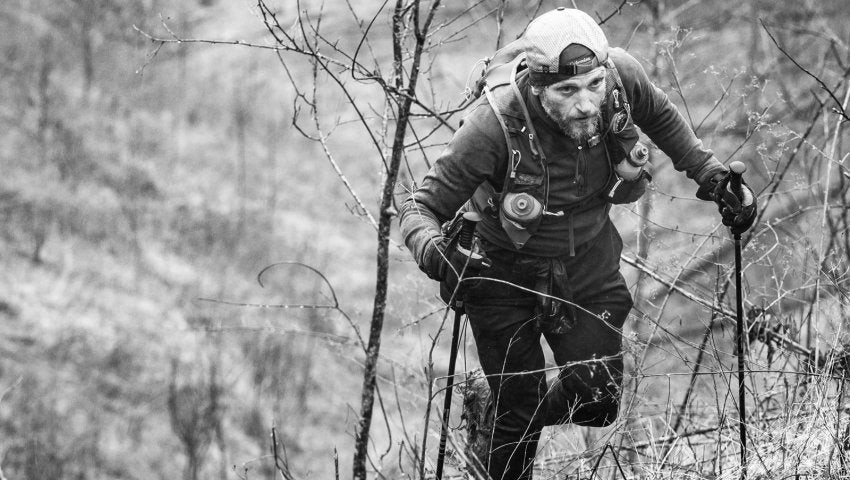
Keith Dunn said that runners dropped out as temperatures were expected to drop overnight.
A single marathon usually goes for around 26 miles, but not the Barkley Marathons. It takes participants through a 100-mile unmarked, off-trail course through Frozen Head State Park instead.
On Thursday, runners took off and started the event. The marathons have fans all around the world, but only 15 people have finished it in the past 35 years. There were no finishers in the 2020 marathons after the COVID-19 pandemic closed Tennessee State Parks, effectively canceling the race.
Runners have 60 hours to finish the 100-mile race. There is no online registration and participants must figure out how to apply through word-of-mouth.
"After a bride memorial for the members of the Barkley family who no longer are with us, the cigarette was lit at 3:04 a.m.," said Keith Dunn, an official with the race.
They must also find books on the course and tear out the page corresponding with their race number to prove they ran a full loop. They are given a new race number for each loop.
Officials said that the Morgan County Cattleman's Association provides food for participants to purchase through the race, and the Morgan County Tourism Alliance offers field guides for runners. They are designed by locals and explain fauna and flora in the area.
Runners are also issued a standard watch set to the race time, and no other watches are allowed. This year's watch was an analog pocketwatch.
Dunn also said that one person dropped out of the race five and a half hours into the race. He also said that this year's marathons feature more newcomers than veterans, because of travel restrictions.
A documentary was also made about the race in 2014 — The Barkley Marathons: The Race That Eats Its Young.
(03/20/2021) ⚡AMPFormer top tennis pro runs David Goggins's 4 x 4 x 48 ultra challenge
James Blake, an American retired professional tennis player who climbed as high as fourth in the world rankings in his career, recently completed ultrarunner David Goggins‘s 4 x 4 x 48 Challenge. Blake has been running for a few years, and since retiring from professional tennis, he has competed in a few races. The 4 x 4 x 48 was unlike any running event the former tennis pro had ever attempted before, though, and he was understandably exhausted after the two-day challenge.
4 x 4 x 48

The 4 x 4 x 48 Challenge is simple to explain, but far from easy to complete. Participants run four miles (6.4K) every four hours for 48 hours. This works out to 48 miles (77K) and a lot of short naps (or very little sleep at all) in two days. Goggins has turned this into an official event, and the 2021 edition ran from March 5 to 7.
“Goggins, thank you. I just finished my 4 x 4 x 48,” Blake said in a video he posted to Twitter. “Thank you for coming up with this challenge and putting me to the test. I dug deep plenty in my career to win tennis matches, but nothing like this.”
Blake said he had “no real rest, no real sleep” over the course of the 48-hour event. He added that he questioned himself during each of the 12 four-mile legs, but he pushed through those tough moments and and eventually made it to the finish two days after he started.
Not a new runner
While this was Blake’s first time running the 4 x 4 x 48 Challenge, it wasn’t his first time completing a running event of any kind. After retiring from tennis in 2013, he got into running, and in 2015, he ran the New York City Marathon. He crossed the finish line in 3:51:19.
In 2020, Blake ran 21.1K in the virtual NYC Marathon as part of a relay with running legend Meb Keflezighi. The pair of former professional athletes teamed up to raise funds for a couple of charities. Blake ran to support his own charity, the James Blake Foundation, which raises money for cancer research, while Keflezighi ran for the NYRR Team for Kids.
(03/20/2021) ⚡AMPby Running Magazine
7 things not to do on a run
1. Don’t stop because your watch dies
We get it, it’s super annoying when you’re out for a run and your watch conks out, but that’s no reason to walk home. A lot of people like to say, “Strava or it didn’t happen,” meaning that if your run isn’t on Strava, you might as well have skipped the workout altogether. Here’s a little secret, though: even if you can’t upload your run to Strava or track it on your watch, it’s still worth doing. There might not be documentation of the work you’re putting in, but your body doesn’t care about that, and as long as you continue to train, you’ll get faster.
2. Don’t run sick
If you’re sick, take a few days off and rest. Running while sick could make you more tired than you already are, and that could turn a two-day cold into a week-long illness. It’s unfortunate that you’ll have to miss a few days of training, but if you don’t rest now, you’ll probably end up missing even more days later.
3. Don’t race in training
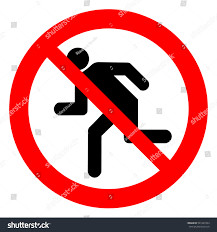
Running with other people can be a great motivator, but don’t get too obsessed with who’s faster in training. If you push yourself too hard, whether on easy days or during speed sessions, you could end up injured. Training is not the time to let your ego cloud your judgment (well, there’s really no good time to let that happen), and if you do, your training session could turn into a race with your running buddies. This might be fun in the moment, but it could ruin you for future training sessions and real races.
4. Don’t train without a goal
Whether your goal is to run a PB, to be active a certain number of days each week or anything else, it’s good to have something to work toward. If you don’t go into your runs without a specific goal in mind, it will get easier and easier to skip training sessions.
5. Don’t eat something new before a run
In training and racing, don’t try eating something new before you go out for your run or during your run. This is especially important in racing, but it’s even worth keeping in mind during training, too, as a new food before your workout could ruin your session. Stick to the foods you normally eat before or during training to avoid any stomach issues mid-run.
There is an exception to this rule. If you want to work a new food into your pre- or mid-run nutrition plan, then you of course have to test it out in training. Be very intentional about this and try testing it on easy runs to start, then add it to workouts before making it part of your race plan. The last thing you want is surprises at the track or on the race course.
6. Don’t forget to go to the washroom
Speaking of surprises, always go to the bathroom before your run. Even if you don’t think you have to go, please, just try. This has always been important, but it’s especially necessary now, as many public washrooms are closed due to the pandemic. Be safe. Avoid surprises.
7. Don’t hog the trail
If you’re on a trail, share the space with everyone else. Remember that there are other people out there, so be aware of your surroundings. If you see someone coming or hear movement behind you, make room and let them pass. No one likes a trail hog.
(03/20/2021) ⚡AMPby Running Magazine
International spectators to be barred from entering Japan for Olympics
International spectators will not be allowed to enter Japan for this summer’s Olympic Games amid public concerns over coronavirus, organisers said on Saturday, setting the stage for a drastically scaled-back event.
Some 600,000 Olympic tickets purchased by overseas residents will be refunded, as will another 300,000 Paralympic tickets, Toshiro Muto, the chief executive of the Tokyo 2020 organising committee told a news conference.
He declined to say how much the refunds would cost.
The Olympic Games were postponed last year due to the COVID-19 pandemic. While the outbreak has chilled public opinion toward the event, both organisers and Prime Minister Yoshihide Suga have vowed to press ahead with the Games.
The decision on international spectators will “ensure safe and secure Games for all participants and the Japanese public,” Tokyo 2020 organisers said in a statement following five-way talks that included the head of the International Olympic Committee, Thomas Bach, and the Tokyo governor.

“People who are involved in the Olympics in some way may be allowed to enter the country, whereas regular visitors will not be able to,” Tokyo 2020’s Muto said.
He said costs for hotel cancellations would not be covered. Organisers may also consider cutting the number of staff members who will participate in the Games.
The Games are scheduled for July 23 to Aug. 8, and the Paralympics from Aug. 24 to Sept. 5.
Media polls have shown that a majority of the Japanese public are wary about letting in international spectators to watch the Games as the country grapples with the tail-end of a third wave of the pandemic.
STRIPPED-DOWN GAMES
A stripped-down Games means the government will not get the tourism boom it had long counted on. Japan has grown increasingly reliant on foreign tourists, particularly from Asia, to bolster its weak domestic economy.
Like other countries, it has seen tourism unravel with the pandemic and its hotels and restaurants have been hit hard.
Saturday’s decision did not cover local spectators. Muto said organisers will decide next month on caps for spectators in venues.
“It’s very unfortunate,” Tokyo Governor Yuriko Koike said of the decision on international spectators, speaking to reporters after the meeting.
But she added that the conclusion was “unavoidable” given that the main priority for holding a successful Games would be the health of the athletes and the Japanese public.
Kyodo news service earlier reported that organisers were leaning towards barring overseas volunteers from helping at the Games.
Sources told Reuters earlier this month that the Japanese government had concluded it will not be able to allow spectators from abroad.
Reporting by Sakura Murakami; Editing by William Mallard, David Dolan and Frances Kerry
(03/20/2021) ⚡AMPUsain Bolt says that, the best thing about his life is being able to give back, as he donates 150 laptops to schools
The Usain Bolt Foundation focuses on children at the basic and primary school level.
IN A bid to help Jamaican youngsters with their education during the pandemic, the greatest sprinter of all time – Usain Bolt – has shown his generosity once more.
The Usain Bolt Foundation has made a donation of 150 laptops to schools in rural Jamaica. Several schools will benefit from this initiative, valued at forty thousand USD (US$40,000).
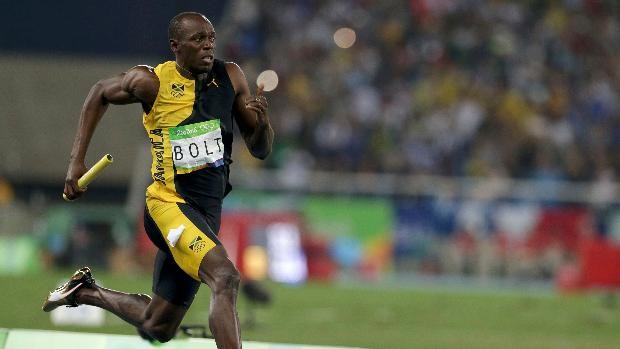
The legend’s official website reports that the eight times Olympic champion said that these initiatives through the Usain Bolt Foundation are pivotal to honour his commitment in ensuring that the children of Jamaica benefit from his hard work.
Bolt said: “The best thing about my life is being able to give back, especially to the children. The current global pandemic has forced many children to do only online classes and highlights the need for technology in schools. We will keep working to provide much needed equipment and support the education of the next generation.”
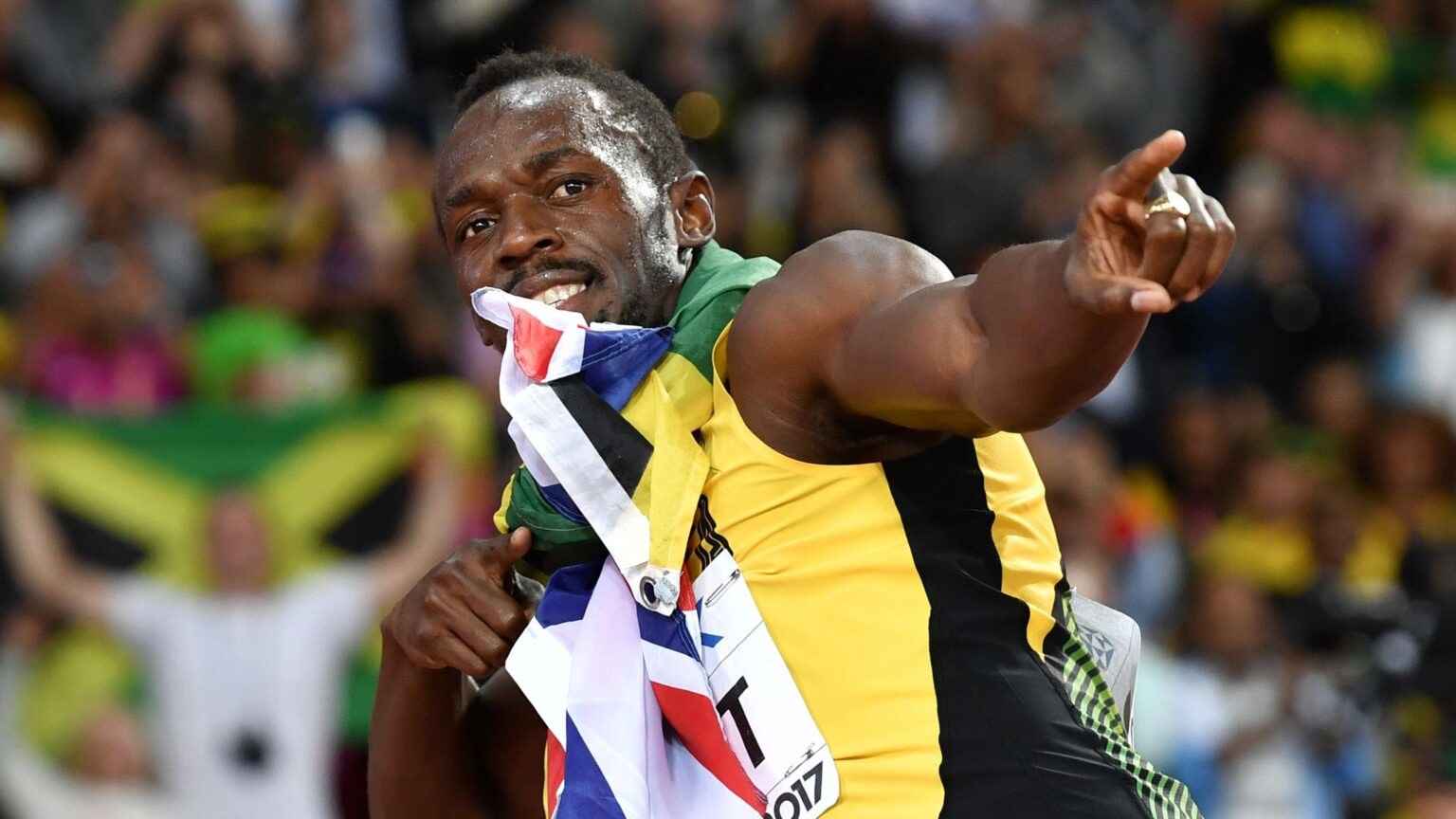
The Usain Bolt Foundation focuses on children at the basic and primary school level. It continues to impact children across the country and that its caring hands will continue to ignite hope and assist, where possible. Last year, the Usain Bolt Foundation donated printers and other supplies to twenty-one (21) Early Childhood Institutions in rural Jamaica and seven schools in his home parish of Trelawny received computers or tablets.
Bolt became a father himself last summer when he and his girlfriend, Kasi J Bennett, welcomed their child. The couple named their baby, Olympia Lightning Bolt, her first and middle name a nod to the sprinter’s career, signature celebration and record-breaking speed.
Just after the new arrival, via a post on Instagram, Bolt, 33, said: “Now we have started a new chapter together with our daughter Olympia Lightning Bolt I look forward to what the future will bring for us but be reassured that I will be the rock for this family.”
Olympia shares her name with the daughter of another Olympic champion. Tennis player Serena Williams and her husband, Alexis Ohanian, officially named their daughter Alexis Olympia but refer to her simply as Olympia.
(03/19/2021) ⚡AMPby Rodney Hinds
2021 Tokyo Marathon plans to go ahead in October with reduced field of 25,000
The organizers of the Tokyo Marathon held a special board meeting Mar. 19 to discuss plans for staging this year's race on Oct. 17. As a measure to combat the spread of the coronavirus, the decision was made to reduce the field size from 38,000 to 25,000 participants. The race's slogan will be "The Day When Tokyo Once Again Becomes One." Entries will be open Mar. 22 to 31.
Rough guidelines were also established for the process by which the final decision on whether the race can go ahead will be made. If a state of emergency is declared within a month prior to the marathon, it will be cancelled at that time. "Holding a safe and secure event is our number one priority," commented an official. International entries will be accepted.

Because the 2020 edition of the race was held with only elite athletes, mass-participation runners were given the option of transferring their entries to either the 2021 or 2022 editions. Roughly 7,000 people opted to run 2021, meaning about 18,000 further entries will be accepted. Part of the course will be changed, and there will also be an uncertified 10.7 km run.

This year's Tokyo Marathon was originally scheduled for Mar. 7, but amid the ongoing coronavirus crisis organizers decided last October to postpone it., prioritizing holding it close to its usual capacity over holding it on-schedule with a drastically reduced field again.
Because Tokyo was rescheduled for October when elite marathons are scheduled to take place around the world and Japanese athletes are in the middle of ekiden season, it is expected that there will be problems with attracting elite athletes from abroad and within Japan. Race director Tadaaki Hayano commented, "With the Paris Olympics on the horizon I hope that young athletes and newcomers will come into sight." With Kengo Suzuki (Fujitsu) having set a new men's national record at the Lake Biwa Marathon last month at age 25, hopes are high for a race where the next generation will shine.
(03/19/2021) ⚡AMPby Brett Larner
Tokyo Marathon
The Tokyo Marathon is an annual marathon sporting event in Tokyo, the capital of Japan. It is an IAAF Gold Label marathon and one of the six World Marathon Majors. Sponsored by Tokyo Metro, the Tokyo Marathon is an annual event in Tokyo, the capital of Japan. It is an IAAF Gold Label marathon and one of the six World...
more...Ugandan Jacob Kiplimo is set to star at Campaccio cross country the first leg of the World Athletics Cross Country Permit series takes place on Sunday
Reigning world half-marathon champion Jacob Kiplimo from Uganda will be in the spotlight at the 64th edition of the Campaccio in San Giorgio su Legnano when the first leg of the World Athletics Cross Country Permit series takes place on Sunday.
The popular Northern Italian cross-country race was originally scheduled for its traditional 6 January date, but it was postponed until the end of March due to the global Covid-19 pandemic. For the first time in its long history, the Campaccio will be held in spring.
Kiplimo won the world half-marathon title in Gdynia in 58:49 last October and ran the second-fastest time in history over the 21.1km distance with 57:37 in Valencia last December. The 20-year-old also set PBs on the track last year, clocking 7:26.64 in the 3000m in Rome and 12:48.63 in the 5000m in Ostrava. In 2019 he won the world cross-country silver medal in Aarhus. In the build-up to the Campaccio, Kiplimo dominated the men’s race at the Italian Cross Country Club Championships in Campi Bisenzio near Florence in rainy conditions.
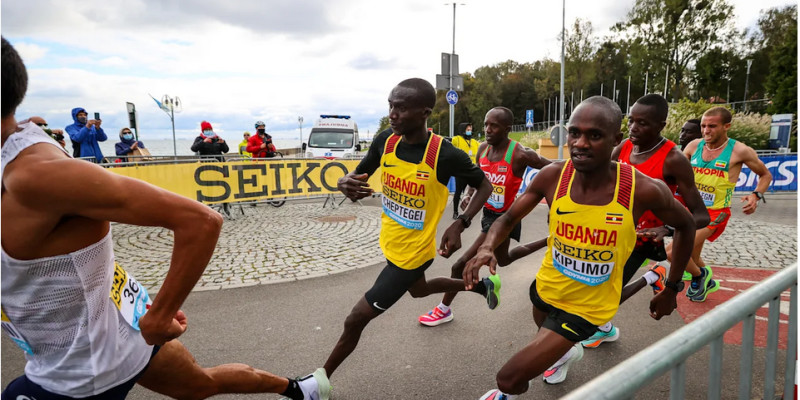
Kiplimo will race against his younger brother Oscar Chelimo, who won the BOclassic 5km World Athletics Label road race in Bolzano last December. In 2018 Chelimo finished seventh in the 5000m at the World Athletics U20 Championships in Tampere and won the 3000m at the Olympic Youth Games in Buenos Aires. One year later, the 19-year-old won the world under-20 cross-country bronze medal in Aarhus and finished fifth in the 5000m at the African Games in Rabat.
Another Ugandan runner in the line-up is 2017 and 2018 world mountain running silver medallist Joel Ayeko.

Last year’s surprise Campaccio winner Mogos Tuemay will return to San Giorgio su Legnano to defend his title. The Ethiopian runner set his 10,000m PB in Hengelo in 2019 with 27:23.49 and finished 18th at the World Athletics Cross Country Championships in Aarhus in 2019.
The top Italian runner is Eyob Faniel, who broke Stefano Baldini’s national marathon record with 2:07:19 in Seville last year. Faniel improved Rachid Berradi’s long-standing Italian half-marathon record with 1:00:07 at the Tuscany Camp Half Marathon in Siena at the end of February. Faniel also won the 2019 BOclassic road race and equalled Daniele Meucci’s 10km national record with 28:08 at the San Silvestre Vallecana in Madrid last December.
“I have always used cross-country competitions as preparation for the marathon,” said Faniel. “I finished ninth in 2017 and 10th in 2018 in my previous two appearances at the Campaccio. This year I am in different form, as I trained for shorter distances to prepare for the half-marathon. The turning point in my career was my win at the Boclassic in Bolzano in 2019.”
Faniel will battle for top place among Italian runners against Iliass Aouani, who won the national individual cross country title in Campi Bisenzio last week. Aouani, who graduated in engineering at the Syracuse University in New York, finished fourth at the 2019 World University Games in Naples in the 10,000m and equalled the national indoor mile record with 4:00.07 last year in Boston.
Other Italian runners to watch out for are Yohanes Chiappinelli, who won the European bronze medal in the 3000m steeplechase in Berlin in 2018, plus 2017 European indoor 3000m finalist Yassin Bouih, 2019 world mountain running silver medallist Cesare Maestri and 2017 world mountain running gold medallist Francesco Puppi.
(03/19/2021) ⚡AMPby World Athletics
Eliud Kipchoge ready for Hamburg Marathon redemption
Kenyan Olympic champion and marathon world record holder Eliud Kipchoge, is hoping to return to the top of the podium at the NN Hamburg Marathon on April 11 to redeem his stature following his shock London defeat last year.
The distance running star will be featured at the elite-only marathon for those looking to secure an Olympic qualifying time after few chances to compete in 2020 because of the pandemic.
Kipchoge saw his 10-marathon winning streak ended at the 2020 London Marathon on Oct. 4 but has had the time to recover and build back up at his training camp in Kaptagat, Kenya.

He will be running in Germany to gauge his shape ahead of a planned Olympic title defense in the summer.
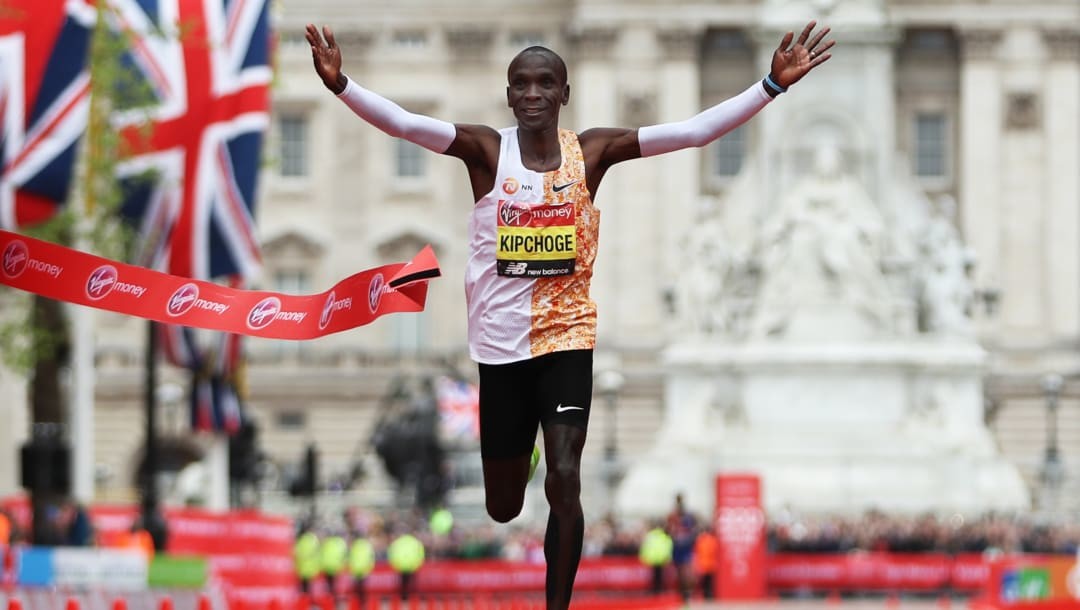
"My number one goal is to run a beautiful race in Hamburg. A beautiful race will give people hope. It is another step that we are on the right track to normality," Kipchoge who ran the standing 2:01:39 world record at the 2018 Berlin Marathon tweeted on Thursday.
According to his management, NN Running, the Rio 2016 gold winner is hoping to reignite his marathon supremacy at the city where he made a victorious debut over the distance in April 2013.
"Hamburg has a lot of memories for me, it was my first exposure to the marathon and I remember thinking I didn't know what would happen at 25km, 30km, 35km and 40km. That memory of 'will I hit the wall' is still there. It was the beginning of my life in the marathon," Kipchoge told the NN Running website on Wednesday.
The impressive 2:05:30 win at the 2013 Hamburg Marathon sparked off a career switch from track running that yielded 11 wins in 13 marathons started for the Kenyan.
Prior to London 2020 where he clocked 2:06:49 for eighth, Kipchoge's only other loss at the distance came at the 2013 Berlin race where he was beaten to second by compatriot Wilson Kipsang who ran a then world record of 2:02:32.
Kipsang has since been banned for four years for Whereabouts Rules violations.
"Winning there gave me confidence that I could run the marathon and it played a big role in my career. Now I am running Hamburg again in a very different situation. We have very few races globally and it is a good opportunity to test myself, run well and offer hope to the world," Kipchoge remarked.
On Oct. 12, 2019, he became the first man to cover the classic 42.192km marathon distance in under two hours at the specially arranged INEOS 1:59 Challenge in Vienna, Austria where he stopped the timer at 1:59:40.
However, like every other sportsperson around the world, Kipchoge was affected by the pandemic, admitting to NN Running that life has been "very hard."
Forced for several months to stay within his compound because of restrictions on movement implemented by the Kenyan government to control the virus, it was not an easy period for the first man in history to run a sub-two-hour marathon.
He spent the lockdown months by organizing a food distribution drive in partnership with several local companies and individuals to feed other affected runners who have not been as fortunate as him.
"It was really hard to go training and not mix with people to fight the virus. I am happy to have since resumed training with the team, but we continue to make sure we do so safely within the protocols because the virus is still with us.
"Life has been hard but that is the way of the world - we need to get through it but I think we are on the right track to a brighter future," the three-time London marathon winner underscored.
After suffering an untimely ear blockage, Kipchoge suffered his first marathon defeat in seven years in London but insists he is in "great mental and physical shape" and is looking forward to competing on the streets of Hamburg.
(03/19/2021) ⚡AMPby Xinhua News
World Athletics Council opens Tokyo 2020 door for Russian athletes
World Athletics Council today agreed to reinstate the Authorised Neutral Athlete (ANA) scheme, suspended since last March, allowing individual Russian competitors to qualify for this summer’s scheduled Tokyo 2020 Games.
The scheme - which allows Russian athletes who meet anti-doping criteria to take part in international competition - was suspended in March last year following the latest scandal involving the Russian Athletics Federation (RusAF), which has been banned since November 2015 following the revelations of state-sponsored doping.
Rune Andersen, the World Athletics' Russia Taskforce chairman, said that Russian athletes would be able to apply for ANA status immediately, but there will be a cap of 10 athletes for the next Olympics and at World Athletics Championships.
He added that this was dependent on RusAF continuing to satisfy the requirements agreed for their eventual return.

RusAF faced expulsion from World Athletics last year for obstructing an anti-doping investigation into world indoor high jump champion Danil Lysenko and failing to pay outstanding fines.
After missing its July 1 payment deadline RusAF stood on the brink, but a last-minute intervention by Russian Sports Minister Oleg Matytsin, who made an "unconditional" offer to pay the outstanding fine of $6.31 million (£4.52 million/€5.28 million), saved them.

On March 1 this year a final plan for the reinstatement of the RusAF was unanimously approved by the World Athletics Council following the recommendation of Andersen.
World Athletics President Sebastian Coe warned at the time that the initial approval was "not the end but the beginning of a long journey, with an incredible amount of work for RusAF to do to rebuild trust."
Reflecting upon the original creation of the ANA scheme earlier this month in a Sports Law Q&A podcast, Coe told British lawyer Jonathan Taylor: "I didn’t for all sorts of reasons want to visit the sins of the parents upon the children in our Russia challenge.
"What in simple terms does that mean?
"If I could identify clean athletes that were untainted but in a tainted system then my responsibility was to try and find a construct that would allow them to compete.
"That’s where we got our Authorised Neutral Athletes from, and many of them have maintained international competition in the last few years.
"They don’t have the panoply of uniforms and national anthems but most of them are just relieved to be competing."
One Russian track and field athlete was able to compete at the Rio 2016 Olympics under the recently instituted ANA scheme - long jumper Darya Klishina.
(03/18/2021) ⚡AMPby Mike Rowbottom
Runners will turn their neighborhood streets green for the Bank of America Shamrock Shuffle
The Bank of America Shamrock Shuffle, one of the city’s most celebrated running events, is set to kick off in neighborhoods across Chicago and around the world this weekend. For more than four decades, runners have participated in this popular road race to commemorate the start of the outdoor running season and continue the city’s St. Patrick’s Day celebrations.
This year’s virtual race will continue the tradition as runners compete in a variety of distances from Friday, March 19 to Sunday, March 21.
“We’re thrilled to see so many runners continue the tradition of the Bank of America Shamrock Shuffle in a new and unique way this year,” said Executive Race Director Carey Pinkowski. “As a past participant, I know the energy and excitement the Chicago running community brings to this event and while we can’t be together this year, we look forward to returning to the streets of downtown very soon.”
More than 8,000 participants, including seven past champions, are expected to bring the spirit and celebration of the Bank of America Shamrock Shuffle to their own communities this weekend. While this classic road race is known for its 8K run, Shufflers will also have the opportunity to participate in the 2-Mile Walk or The Mile.
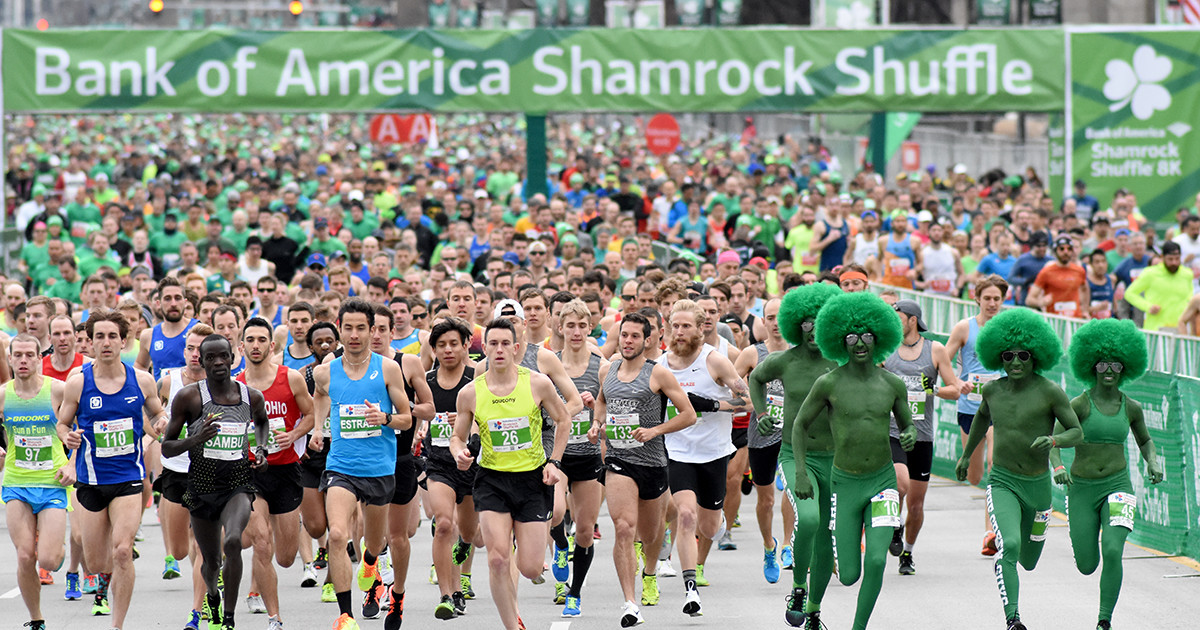
Participants can download a personalized digital event bib number and will have access to a unique finisher certificate once they submit their event results.
Registered participants are also invited to add some extra excitement and competition to their race weekend experience by competing in The Deloitte Team Competition. The Team Competition is a fun way to bring the camaraderie of race day to running clubs, groups of friends, and corporate teams during this unique time. Teams will be scored in one of five divisions based on the average finish times submitted by the team over the weekend.
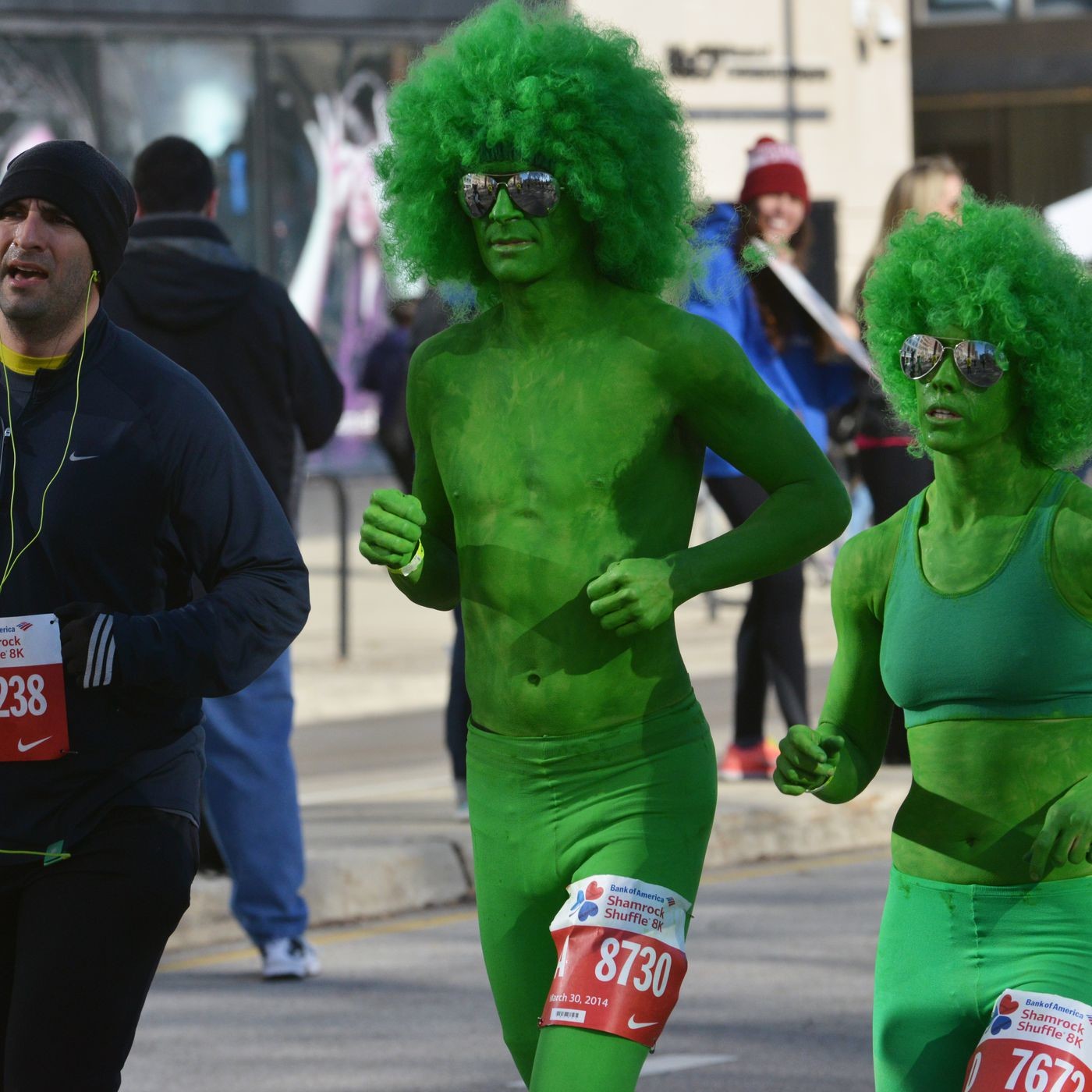
In addition to the run and walk, event organizers are also excited to launch a virtual Health & Fitness Expo.
The digital marketplace will feature event partners and exhibitors offering the public an opportunity to explore the latest in running footwear, apparel and nutrition.
Individuals still interested in taking part in the 2021 Bank of America Shamrock Shuffle can sign up today through 11:59 a.m. (Central Time) on Sunday, March 21. The cost of an entry is $30 for United States residents and $55 for participants residing outside of the United States.
For additional information on the 2021 event, visit shamrockshuffle.com.
(03/18/2021) ⚡AMPB of A Shamrock Shuffle 8K
The Shamrock 8k is a huge celebration of the beginning of running season. It is the world's largest timed 8k, starting and finishing in Chicago's Grant Park. Runners feel the energy of over 30,000 runners and a big cheering crowd (present during the entire course.)The excitement lasts throughout the after-party, where participants find beer, food and live music. The flat...
more...Laura Muir believes that the delay of the Tokyo Olympics could help her chances of winning medals
Laura Muir says she is more robust ahead of Tokyo Olympics; the 1500m British record holder opted to not compete at the European Indoor Championships to focus on the outdoor season and Olympics in July.
British middle-distance runner Laura Muir believes delaying the Olympics has given her a better chance of glory.
The British record holder over 1500 metres insists she is now more "robust" ahead of the rescheduled Games in Tokyo this summer.
Her 2019 season was disrupted by calf and Achilles problems when she finished fifth in the 1500m at the World Athletics Championships in Doha, despite running her second-fastest time.

But, after the enforced delay amid the coronavirus pandemic in 2020, the double European Indoor 1500 and 3000m champion has reaped the benefits.
"I'm certainly in a better position than had the Olympics been last year," Muir told the PA News agency.
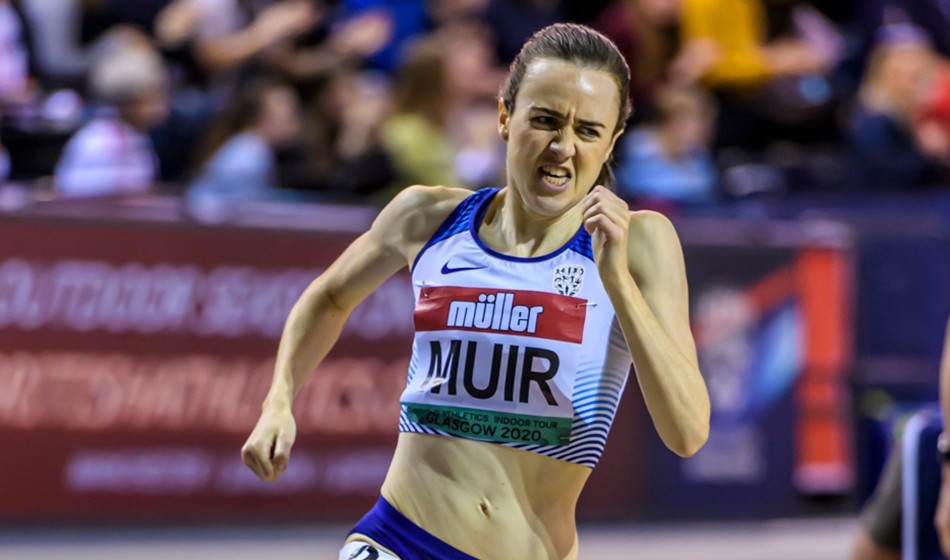
"As much as it was disappointing for everything to be postponed, the overall picture has worked out for me, luckily.
"It's helped me, I had a lot of issues heading into Doha and off the back of it, the issue with my Achilles, and I wasn't in spikes for a number of weeks.
"This time last year I was just getting back into things but now I'm in a much stronger position than I was. Luckily having the last year we were able to build on things to make me more robust.
"We've incorporated more strength and conditioning into training, specific areas which I'm targeting. You don't want to fatigue yourself too much but if there was an area where I was weaker I could strengthen it so I'm not so susceptible."
Muir, 27, finished seventh in the 1500m at Rio 2016 after slipping out of medal contention with 200m left.
This year she has focused on training and her only indoor race came in the World Indoor Tour Lievin in February where she set a new British 1500m indoor record of three minutes 59.58 seconds.
Muir opted not to compete at the European Indoor Championships in Poland this month for a second defence of her titles to focus on the outdoor season and Olympics.
(03/18/2021) ⚡AMPTokyo 2020 Olympic Games
Fifty-six years after having organized the Olympic Games, the Japanese capital will be hosting a Summer edition for the second time, originally scheduled from July 24 to August 9, 2020, the games were postponed due to coronavirus outbreak, the postponed Tokyo Olympics will be held from July 23 to August 8 in 2021, according to the International Olympic Committee decision. ...
more...Sebastian Coe claims he went out of his way to keep competitive options open for differences in sexual development athletes
World Athletics President Sebastian Coe has defended the decision his Federation took over athletes with differences in sexual development (DSD), claiming he had sought to keep competitive options open in the female category even though a different alternative may have been open to him.
The World Athletics rules, which went into effect in 2019, cap athlete testosterone levels in women’s events from the 400 metres through the mile for athletes with DSD such as South Africa’s Olympic 800m champion Caster Semenya.
World Athletics said that no female athletes would have a level above the cap - five nanomoles per litre - unless they had a DSD or a tumour, and that in the case of athletes in the DSD category testosterone-suppressing medication would need to be taken in order to bring levels into the agreed range.
Semenya has lost appeals at the Court of Arbitration for Sport and the Federal Supreme Court of Switzerland against the World Athletics regulations over the past two years.

But earlier this month the South African Government’s Department of Sport, Arts and Culture pledged R12 million (£576,600/$803,000/€671,500) to help her appeal to the European Court of Human Rights against her testosterone ruling.
Speaking in a Sports Law Q&A podcast, Coe told British lawyer Jonathan Taylor: "If I’m being hard-nosed about it, if I’d stuck simply to the definitions around biology then I would probably have got support for preventing those athletes from competing at all in a female category,
"I didn’t want to do that."
Coe added: "So finding the right level of controllable testosterone over a period that allowed them to compete at those distances was for me absolutely in alignment with every philosophy, every principle that I went into the sport for.
"But then you get the next challenge about human rights.
"I am very acutely conscious of human rights.

"But the question I then ask is whose human rights are we talking about here?
"Are we talking about the millions of girls that enter athletics and want to feel that they are competing at least on a level footing, do I have a concern about them?
"Yes I do.
"But I also wanted to preserve that in a way that didn’t stigmatise and cause hurt to other athletes.
"It was a difficult decision to make.
"The easier decision would frankly have been to have sat there and done nothing at all, which if I’m being honest is where pretty much the most of sport has gone now.
"We have a similar challenge around transgender and our policy there was in large part driven and in alignment with what we have done around DSD.
"So you don’t come into any sport at the level I chose to get elected at and think you are going to make a lot of friends.
"You do have to do what you think is in the best interests of the sport and possibly that judgement is made way beyond the term that you are serving."
Referring to the decision taken in 2016 to ban Russian athletes competing in the wake of the scandal over organised doping in that country, Coe added: "I know that the approach we took about Russia didn’t leave us in a position of unalloyed joy with other sporting organisations out there.
"When we all went to the Rio Games you could feel the icy blast about what we’d done.
"But I don’t want athletics to ever be on the wrong side of history."
(03/18/2021) ⚡AMPby Mike Rowbottom
One of the legends of the Boston Marathon Dick Hoyt dies at 80
Boston Marathon legend Dick Hoyt, has died at the age of 80, his family confirmed to WCVB.
Hoyt passed away in his sleep Wednesday morning, according to longtime Boston Marathon race director Dave McGillivray.
For close to 40 years, Dick Hoyt was a fixture of the marathon course, pushing his son, Rick, a quadriplegic with cerebral palsy, from 1981 until 2014.
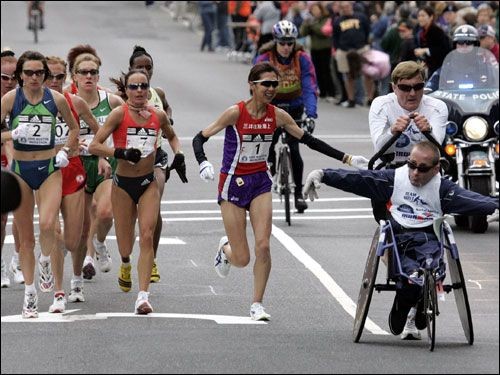
“The message is: Yes, you can. There isn’t anything you can’t do as long as you make up your mind to do it," Dick Hoyt told WCVB in 2016. "There is no ‘No’ in the Hoyt vocabulary.”
In addition to Boston, the pair competed in more than 1,100 marathons and triathlons.

"We are tremendously saddened to learn of the passing of Boston Marathon icon Dick Hoyt. Dick personified what it means to be a Boston Marathoner, finishing 32 races with son Rick. We are keeping his many family & friends in our prayers," the Boston Athletic Association said in a statement after news of his passing.
Hoyt was a lieutenant colonel in the Air National Guard for more than 30 years.
Originally planning to retire after the 2013 race, Dick Hoyt returned in 2014 to honor those killed and injured in the Boston Marathon bombings. Team Hoyt was stopped at the 25-mile mark when the explosions halted the event.
A bronze statue of Dick and Rick Hoyt was dedicated near the Marathon's start line in Hopkinton in 2013. Dick Hoyt served as the Grand Marshal of the race in 2015.
(03/17/2021) ⚡AMP
Boston Marathon
Among the nation’s oldest athletic clubs, the B.A.A. was established in 1887, and, in 1896, more than half of the U.S. Olympic Team at the first modern games was composed of B.A.A. club members. The Olympic Games provided the inspiration for the first Boston Marathon, which culminated the B.A.A. Games on April 19, 1897. John J. McDermott emerged from a...
more...Twelve cities from around the globe have expressed interest in hosting the inaugural World Athletics Road Running Championships in 2023
The strong international interest in hosting this new event, which will combine elite and mass races in a unique format, is a ringing endorsement of a festival concept designed to unite the international road running community.
The creation of the World Athletics Road Running Championships, incorporating the World Half Marathon Championships, was approved by the Council in December, and cities around the world were asked to indicate their interest in hosting the event.
The 2023 event will include elite races over both 5km and the half marathon, accompanying mass races, and a week-long festival of supporting events, including parkrun events across the host city, a global running conference, health and fitness expos and clinics.

Potential hosts will have to submit formal bids by 1 June and the World Athletics Council will select the host city in July.
World Athletics Continental Tour
The World Athletics Council has approved a greatly expanded Continental Tour calendar for 2021, including 85 Gold, Silver and Bronze meetings, after the new international series was launched successfully last year.
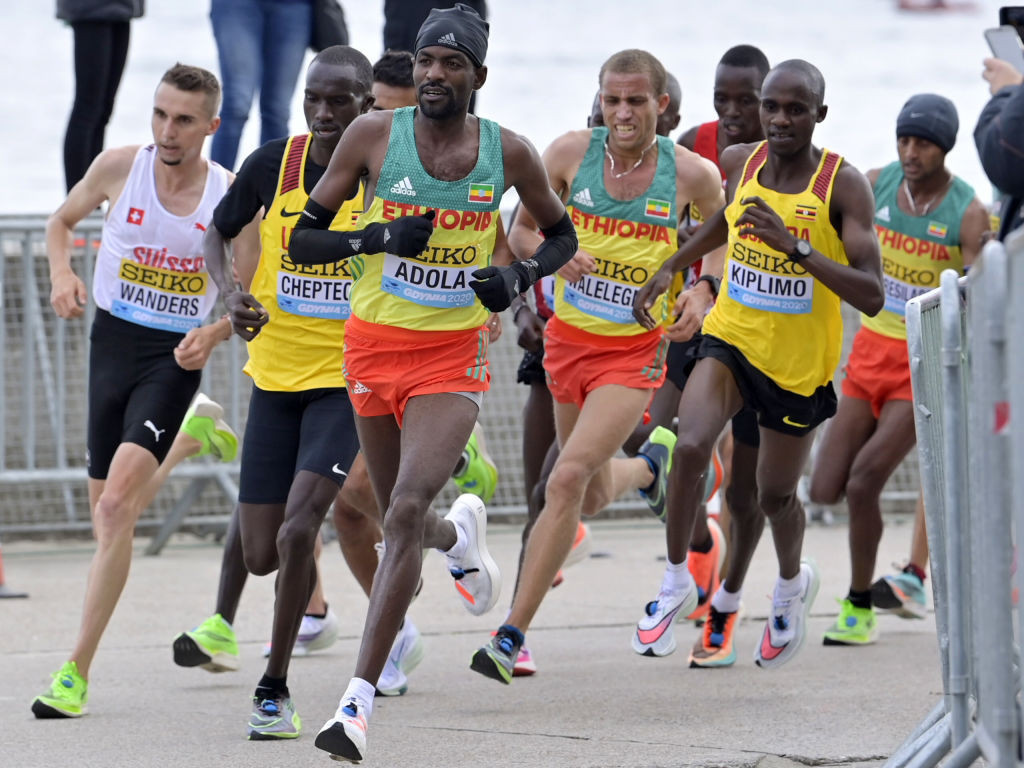
Despite the challenges created by the pandemic, 29 Continental Tour meetings were held last year, including seven Gold meetings (of the 10 that were originally scheduled).
This year’s calendar includes 15 Gold meetings, with two in Africa following the addition of a second meeting to join Nairobi, and three Gold meetings to be held in the United States. The venues for the new meetings will be confirmed shortly.
World Athletics president Sebastian Coe welcomed the commitment of meeting directors and Member Federations across the six continental Areas to create new competition opportunities for the athletes.
“We wouldn’t have chosen to launch a new global athletics tour on the eve of a pandemic, but the Continental Tour proved to be such a strong concept that it thrived even in these adverse circumstances,’’ he said.
“The tour has expanded substantially in 2021, and we’re delighted that it has been embraced so enthusiastically across the world. I’m particularly pleased to see that the US has stepped up to stage three Gold meetings as well as at least nine other Silver and Bronze meetings. These will provide new and vital competition opportunities and prize money for athletes and strengthen our sport both in the USA and internationally. We see the expanded US calendar as an early legacy of the decision to take our flagship event, the World Athletics Championships, to Oregon in 2022.
“We will continue to drive innovation and boost the competition opportunities available to our athletes around the world, with our immediate focus on the World Athletics Relays Silesia 2021, to be held in Poland in just six weeks’ time.”
Competition dates
The Council confirmed the dates for the 2022 World Athletics U20 Championships, which will be held in Cali, Colombia from 2-7 August, 2022, and the 2023 World Athletics Indoor Championships, which will be held in Nanjing, China from 17-19 March, 2023.
(03/17/2021) ⚡AMPby World Athletics
Running improves your brain function
Having a brain block at work? Going out for a mid-day run may have more effects on your brain than just a psychological break in the day.
While the immediate benefit of running, the release of dopamine and other endorphins, is oh-so-good for a stressed-out brain, recent studies have shown running causes more profound, long-lasting changes to brain function. Curious researchers are working hard to uncover how and why aerobic exercise stimulates the brain.
Running to Remember
Two studies this year, published only a week apart, showed that aerobic exercise improved memory.

One of the studies, from the American Academy of Neurology, looked at 206 adults before and after a six-month exercise program. By the end of the program, the participants saw blood flow to the brain increase by 2.3 percent on average, which is what the researchers believe led to a 5.7 percent improvement on executive function tests and 2.4 percent improvement on verbal fluency.
“Our study showed that six months’ worth of vigorous exercise may pump blood to regions of the brain that specifically improve your verbal skills as well as memory and mental sharpness,” said study author Marc Poulin in a press release.

Other study, published in the Journal of Alzheimer’s Disease, also looked at blood flow to the brain, but over a year’s worth of aerobic exercise. The exercise group saw a remarkable 47 percent improvement in their memory scores. However, these were among individuals who had memory issues to begin with, which could account for the more staggering results.
Osteocalcin, a hormone, is another reason memory can be improved by running, among many other incredible functions it helps with.
Brain Health and Brain Function is Boosted
One study that came out of the Beckman Institute for Advanced Science and Technology found an association between cardiorespiratory fitness and the brain’s ability to produce N-acetyl aspartic acid (NAA). According to Tartar, NAA is a marker of exactly how active the brain is.
“A central question raised by this work is whether we can modify NAA through physical activity and fitness interventions, providing an effective method to enhance cognitive performance and brain health across the lifespan,” said researcher Ryan Larsen in a press release.
At the Kavli Institute for the Brain and Mind in California, they’re looking at how running improves motor skills, starting with mice. One of their studies, published in Nature Communications, examined how mice running on a wheel over the course of a week performed better on several tests for motor skills, including walking quickly along a balance beam or staying on a rotating rod. The researchers believe that the type of plasticity they saw in mice brains can easily be translated to humans. By incorporating running, athletes may see performance enhancement in other areas that require fine motor skills.
There are many other ways that scientists know that exercise can improve brain function. But they still don’t know why. “We can look at the after effect and see if somebody exercises for a few months, we can start to see changes in their cognitive functioning,” says Dr. Tartar. “They have better attention, better executive function, but we really want to see how.”
There are several chemical reactions that are set off by running and exercise that prove that brain health is better off, but the ‘why’ is still yet to be determined. Dr. Tartar would like to find the mechanisms behind things like brain-derived neurotrophic factor (BDNF) and Irisin.
She calls BDNF, a protein released during muscle activity, food for the brain. It supports neuron survival and health, while promoting overall neural health and cognition. Irisin is a hormone secreted from muscles during exercise that also promotes neural health and cognition. But exactly how these proteins and hormones work needs further study to be truly understood.
Remember that hormone, osteocalcin? It also plays a role in emotion, by increasing serotonin and dopamine, and it’s been shown to decrease anxiety and depression.
Anecdotally, psychologists have known for years that exercise boosts mood by having study participants self-report their feelings. But with the combined efforts of exercise scientists and neuroscientists, there is data from the brain that corroborates that.
(03/17/2021) ⚡AMPby Malissa Rodenburg
Athletes have reacted to Nike's pregnancy announcement
Decorated Olympic sprinter Allyson Felix calls it "beautiful and heartbreaking".
Nike’s latest advertisement is receiving mixed reactions from athletes and sports fans on social media. The ad, which includes the caption, “To every mother, everywhere: you are the toughest athlete,” features several clips of pregnant women and mothers participating in sports, and appears to be the company’s way of showing their support to pregnant athletes.
While the ad is a step in the right direction for the company, many athletes, including Allyson Felix, Kara Goucher and Alysia Montaño, are criticizing Nike for not acknowledging their past treatment of pregnant female athletes.
In 2019, Felix, Goucher and Montaño publicly criticized Nike for its treatment of sponsored athletes during and after pregnancy, and they called the company out for having no pregnancy protections in their contracts. Since then, Nike has announced a new pregnancy policy that protects female athletes from pay reductions for 18 months surrounding pregnancy. This new ad showing support for pregnant women is a welcome change and a step in the right direction, and while many athletes are supportive of it, they are pointing out one thing it’s missing: an apology.
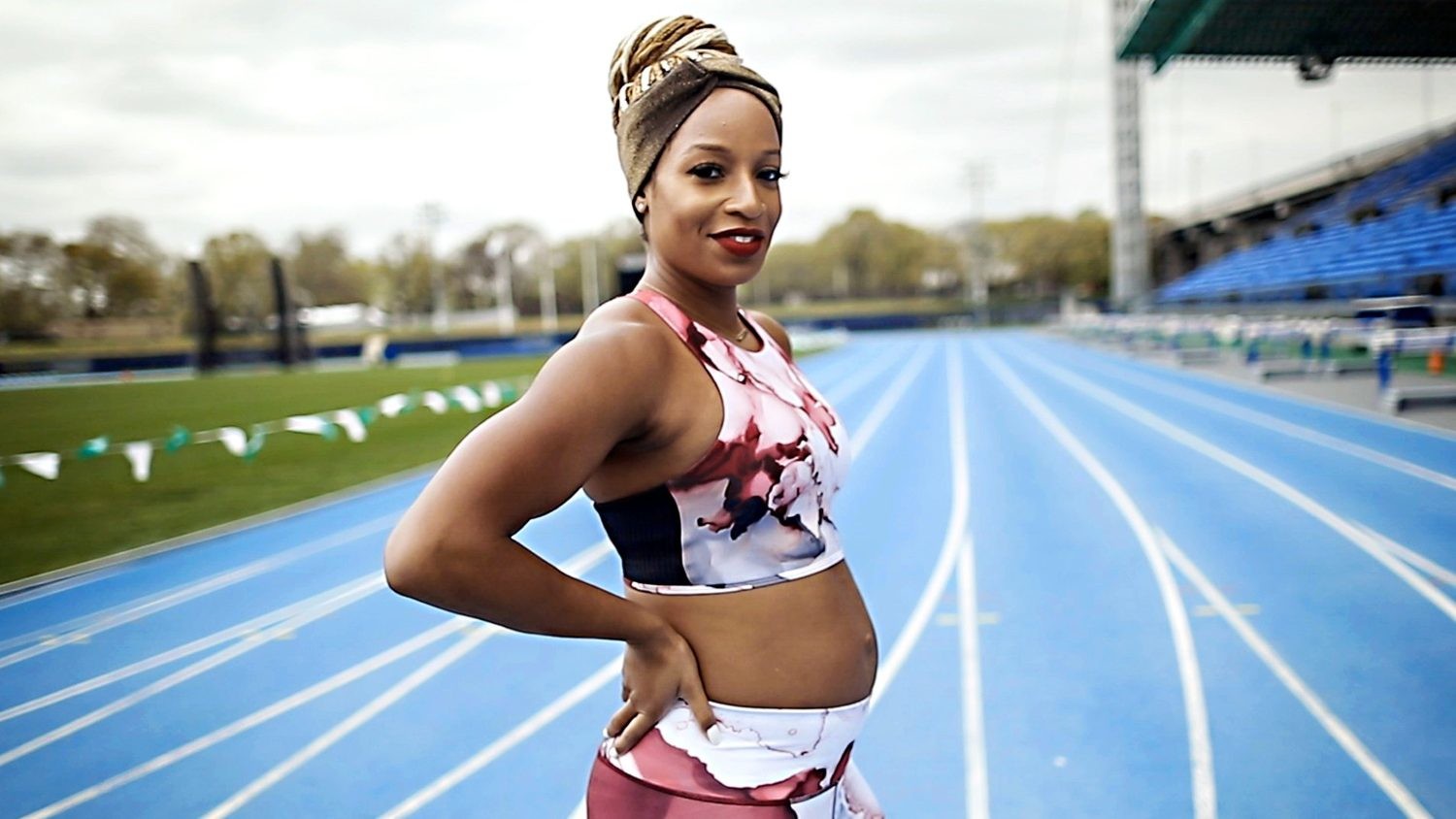
Felix was among the first to express her opinion, which she shared in a Twitter thread. She began by praising the ad for its content, calling it powerful and saying it celebrates mothers and reminds them that they are athletes. She goes on to encourage her followers to watch the ad, but for a different reason.
“I agree with every word in this ad,” she said in a Tweet. “I also think you should watch this ad so that you will hold Nike accountable for it.”
She continues by saying that the ad was hard to watch, given her personal experience as a formerly Nike-sponsored athlete. She points out that it was she, along with several other athletes, who pushed Nike to support athletes’ maternity — a fact the ad fails to mention. Felix calls the ad “beautiful and heartbreaking,” saying that while it celebrates all the right things, it ignores the struggle it took to get to this point.
Goucher echoed Felix’s statements in a response to her thread, saying she appreciates the ad’s sentiment, but this level of support was not a reality for her or dozens of other mother runners.
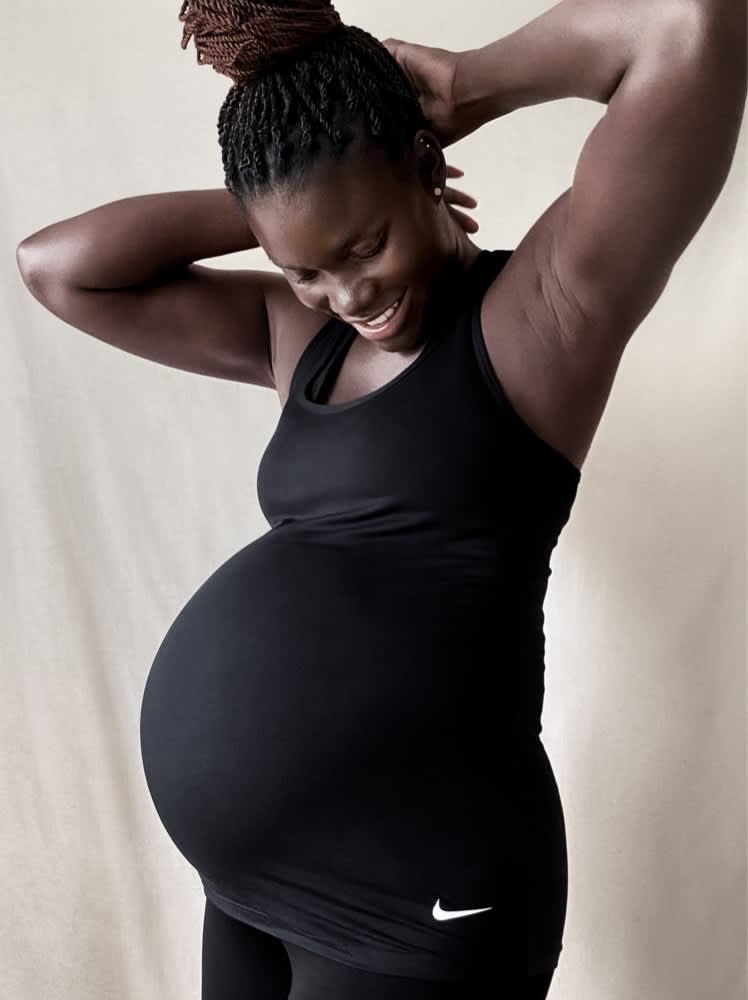
“Acknowledging the way we were treated and receiving an apology (let alone the money withheld from us) would go so far,” she added.
Montaño added her comments in an Instagram post, saying while she is grateful for all the positive changes happening in the world of women’s sports, it is infuriating to watch Nike seemingly dismiss the past and fail to apologize for the experiences of past athletes.
“Yes. We want Nike to sponsor athletes and support them through pregnancy, and thereafter, but we want them to acknowledge the fight and the struggle that it took to get them to make a change,” she said. “We DO NOT WANT them to use our women to make money and while doing so forcing their athletes that have been mistreated to post advertisements as a way of sweeping their struggles under the rug.”
She goes on to highlight the work of other companies, organizations and brands who have a history of supporting women, including her own nonprofit, &Mother, and her partner brand, Cadenshae. Montaño concludes by saying that she and other athletes welcome Nike’s desire to support female athletes, but says they must rectify their former actions if they wish to do that.
Many others on Twitter and Instagram are commenting with support for the athletes, while also acknowledging the beauty and the power of the ad. This new ad by Nike is exactly the type of imagery we need to see, but coming on the heels of controversy over their treatment of pregnant athletes, it comes across as disingenuous to those who are familiar with the backstory.
(03/17/2021) ⚡AMPby Brittany Hambleton
Tips for running in March
The weather this month can get weird — here's how to deal with it.
We’re about half-way through March, and depending on where you live, you’re (hopefully) beginning to see the first signs of spring. Of course, in some parts of Canada, winter is still in full-force, in others, April showers have already begun, and some places seem to experience all four seasons in one day.
This can make it pretty hard to figure how to prepare properly for a run, so here are our best tips for running during a Canadian March.

Check the weather
In the summer, you can safely assume it’s going to be hot and dress for the occasion. In the winter, you pretty much always know you’re going to need a hat, gloves and at least a couple of layers of clothing. The same cannot be said about March. As we gradually make the transition into spring, the temperature from one day to the next can vary significantly, so always check the weather before heading out so you know what you’re in for.

Consider more than just the temperature
Ambient temperature is important, but if that’s all you look at, you might be in for an unwelcome surprise once you get outside. For example, 10 C on a sunny, windless day will feel very different than 10 degrees on a rainy day with gusting winds, so always pay attention to the ‘feels like’ temperature, wind, rain and any other factors that might affect your run.
Watch out for wind
Not only can wind make your run feel a lot colder, it can also make it more dangerous. Strong winds can blow things like tree branches, recycling or garbage bins and other loose items onto your path as you’re running, so if you choose to go running on a particularly windy day, make sure you stay vigilant, and avoid running through a residential neighbourhood on garbage day.
Dress for the rain
A rainy run in the middle of July can be a refreshing relief from the constant heat, but rain in March is just downright cold. If you’re running in the rain this month, make sure you invest in a good water-resistant jacket to keep you from getting soaked, and don’t hang around in your wet clothes too long once your run is over.
Check the trail conditions
With the weather starting to warm up and the days starting to get longer, many runners will be itching to get back on the trails. If you decide to do this, try as best you can to get an idea what the trail conditions are like before you head out.
As the ground starts to thaw, the trails could be pretty slick, and at this time of year, a warm few days followed by another cold snap can make them icy as well. Additionally, if you start out on the trails and the conditions are looking treacherous, you’re better off turning around and trying again another day.
(03/17/2021) ⚡AMPby Brittany Hambleton
The 44th annual Gate River Run will take place this weekend with little changes prompted by coronavirus pandemic
Race Director Doug Alred said the race will be a little different this year because of the coronavirus pandemic.
“We’re going to have a lot of social distancing guidelines in place,” Alred said.
The field is limited to 8,000 runners for the 15K. There will also be two different start lines. One start line will be at the corner of Duval and A. Phillip Randolph streets. The second start line will be at the corner of Adams and A. Phillip Randolph streets. The runners will merge just before the Main Street Bridge. Masks are required except while running.

“It’s requiring a lot more things,” explained Alred about the preparations. “We’ve been doing some smaller races and we’ve been kind of using some of the guidelines that we would use at the River Run and see how they go, so those things have worked really well.”

Despite the changes, Alred said runners will still feel a sense of tradition.
“We’re going to have hands on the course. Most of the water stations will still be there, they’ll be run a little bit differently, and the finish line is going to look exactly the same,” said Alred. “As long as people cooperate and wear their mask when they’re supposed to, I think it’ll go great. It’ll be a safe event for everybody, and most people who come will feel like this is a traditional run.”
The Gate River Run said it is expecting one of the best elite fields in recent years because of the limited number of races last year.
(03/16/2021) ⚡AMPby Jennifer Ready
Gate River Run
The Gate River Run (GRR) was first held in 1978, formerly known as the Jacksonville River Run, is an annual 15-kilometer road running event in Jacksonville, Fla., that attracts both competitive and recreational runners -- in huge numbers! One of the great running events in America, it has been the US National 15K Championship since 1994, and in 2007...
more...Bernard Lagat wants to stay with Wildcats after impressive first year on staff
Bernard Lagat had been called a lot of different things: Olympian. All-American. World champion. At Washington State, his alma mater, he is simply “Lagat,” which translates to legend in any language.
A few weeks ago, Lagat was called something totally unfamiliar: Coach.
“I feel like I’m still an athlete, so when someone would say ‘Hey, Coach,’ I sometimes wouldn’t respond,” Lagat says with a laugh. “But then it was, ‘Oh, wait, that’s me.’”
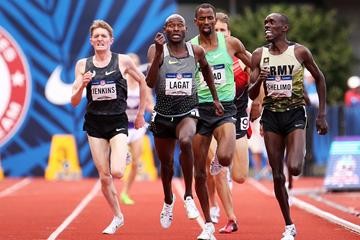
Lots of prominent Tucson athletes have become coaches: Terry Francona, Adia Barnes, Steve Kerr, Stacey Iveson. But few broke into the coaching business like Lagat, the 46-year-old five-time Olympian who moved to Tucson 19 years ago and soon won the 1,500-meters silver medal at the 2004 Athens Olympics.
A few days before Thanksgiving, Lagat was named the interim cross country coach at Arizona, replacing his coach of 25 years, James Li, who chose to retire; Li recently moved to Shanghai, where he now coaches elite distance runners.
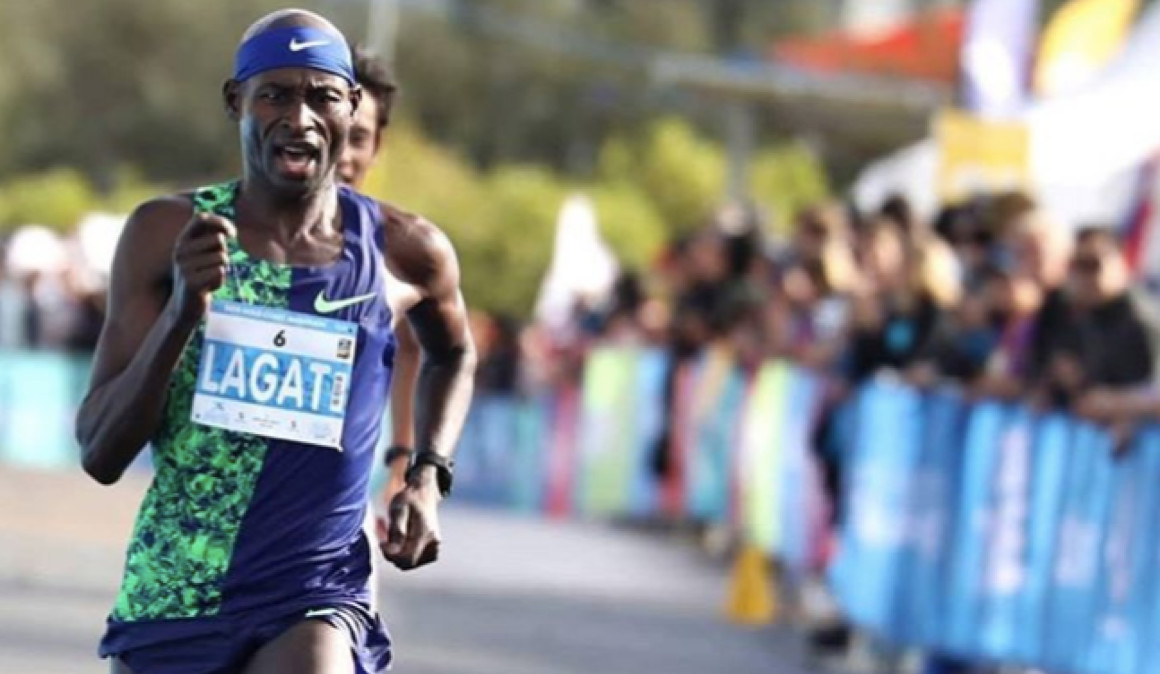
Until that day, Lagat’s only coaching was that of his son, Miika, a freshman at Rincon/University High School, and a few of Miika’s friends interested in running. But Miika has since become an emerging tennis prospect and Lagat’s coaching days appeared to be over.
The timing couldn’t have been better. For the first time since his Olympic debut in 2000, Lagat is not absorbed by trying to qualify for the Summer Games. He doesn’t view his quick introduction to coaching as anything related to his title of interim coach.
Asked if he would like to be hired as Arizona’s full-time cross country coach, Lagat didn’t hesitate.
“I would, I’d like this to be long term,” he says. “Funny, if you had told me about this even a year ago — if you asked if I could see myself coaching — I’d be like, ‘Ah, no.’ But that has changed 100%. I would love to continue. The job grows on you. I want to see my relationships with the athletes grow.”
(03/16/2021) ⚡AMPby Greg Hansen
Four smart ways structuring your routine can Increase focus
Generally speaking, the focus is the ability to collect and direct your attention. Those who have an excellent focus are typically very successful. This typically applies to academic accomplishment, different work results, athletic performance, skill acquisition, and many other things.
Now, it seems like these days it’s pretty hard to have a good focus. Many studies have shown that an average individual has attention that normally lasts about eight seconds. This is not good news. Even a goldfish has a longer attention span.
People should work on enhancing it because when they do, they become much more productive and manage to do every single task for a particular day. If you’re dealing with this issue and you’re not sure how can you improve it, here are some tips that are very helpful!

Wake up earlier
A lot of research has been done on Presidents and CEOs of companies, and what these studies often show is that these successful and driven people often have many traits and habits in common, and one of them is waking up early. HuffPost co-founder and power-woman Ariana Huffington, Facebook creator and informal leader of the online world Mark Zuckerberg, and business magnate Richard Branson are all early-risers. As the author of this Inc.com article notes, “The average U.S. individual wakes up between 6:00 and 7:30 a.m., which means when I’m up at 5 a.m., I have a good one to two hours before my phone starts buzzing.” Imagine the productivity you could have during all that quiet time. Even if you start the day slowly with a cup of coffee and the morning paper or you enjoy have a bit of music playing in the background to offset the silence, you’ve still got quite a head start on the competition. You can also be more productive if you leave this time for exercise, as you won’t be able to come up with the many excuses that often go with sweat sessions that come later in the day. The brain children behind innovative San Diego-based beach accessory company Slippa make sure to get up to surf every morning before they start their day, as that’s how they clear their heads.
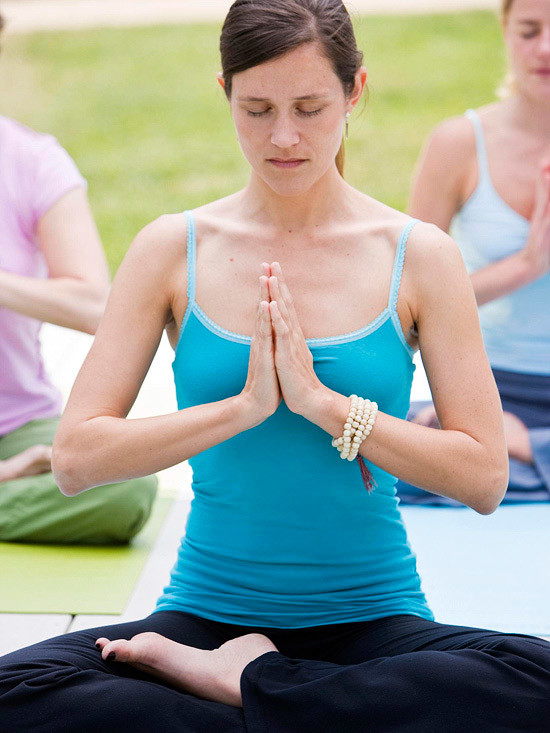
Now, we’re not saying that this will be an easy transition for you if you’re used to sleeping later but give yourself a gradual transition and watch the magic happen.
This one goes hand in hand with #1, as it’s easier to get up early day in and day out if you keep a regular routine. There have been numerous studies that show the health benefits of getting the proper amount of sleep each night, and that starts with going to bed and getting up around the same time as much as possible.
Meditate More
If you’re not a yogi or someone who goes to therapy on the regular, you might think this sounds like a lot of self-help bunk. But the harsh life reality is that you’re going to be thrown a lot of curveballs, and meditation will help you to be centered enough to handle them with no (or few!) problem(s). One of the biggest misconceptions about meditation is that it takes a long time and, if you’re already worried about your productivity and focus, this might seem counterintuitive. All you need to do is download a meditation app to realize that sessions can range anywhere from five minutes to over an hour. On top of the increase in focus, meditation has been shown to reduce stress, lessen the effects of aging, and increase happiness. Say it with us: “Ommmm…”
Eat Well and Exercise
You might think, “Duh,” in reaction to seeing this recommendation, but you’d be surprised by how many people let these things go by the wayside in the name of getting things done. But the thing is that all of these things are cyclical in that you might feel like you need more time to dedicate to your business so you neglect these things, but neglecting these things can lead to poor focus and energy levels, which leads to decreased productivity. Take the time to shop well at the grocery store to keep your body running at its best, and even if it’s just a daily 20-minute HIIT routine, you’ll reap the benefits ten-fold.
None of these suggestions on routine changes to increase focus is reinventing the wheel, but implementing these small tweaks will mean big improvements in your life.
(03/16/2021) ⚡AMPby Andy Sowards
Australian athlete Corey Philpott tows 1.5-ton truck 42K to complete World’s Strongest Marathon
Australian athlete Corey Philpott recently completed a challenge dubbed the “World’s Strongest Marathon” in a suburb of Sydney. Philpott travelled 42.2K while towing a 1.5-ton Ford Ranger pickup truck behind him, finishing the haul in 16 hours, 12 minutes and beating the car-pulling marathon world record by more than an hour.
World’s Strongest Marathon
As Philpott wrote on Instagram, he first learned about the World’s Strongest Marathon when he saw British athlete Ross Edgley complete the challenge in 2016. Edgley pulled a 1.5-ton Mini Countryman around a Formula One race track in the U.K., and although this piqued Philpott’s interest, he didn’t think it was a challenge he would ever attempt.
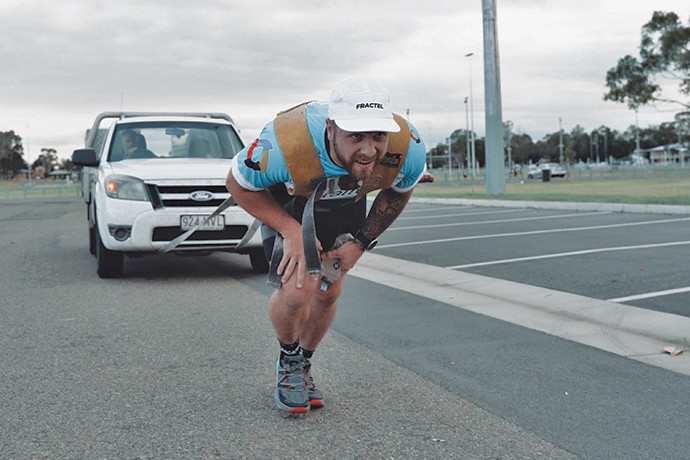
“It always seemed like an awesome concept to me but I never ever thought I was fit enough or had the courage to put it out into the universe and say I’m going to give it a crack,” Philpott wrote. Then COVID-19 hit, and Philpott decided to try it out after all.
“One night, I had just finished watching a video of Ross on YouTube,” he wrote. “Once that video finished, I walked out to the lounge room to my parents and told them in 2021 I will be completing the World’s Strongest Marathon.” For added accountability, Philpott announced his plans on social media, and from there, he had no choice but to power forward.

As Philpott told 7News Australia, he trained for eight months, and his schedule consisted of weight training, regular runs and car-towing practice. “I’d start at about one or two in the morning [and] get four or five hours [of] training in before work.”
When Edgley ran his marathon, it took him more than 19 hours to cover 42.2K. In 2019, an Oregon resident named Justin True beat Edgley’s time, pulling a 1.5-ton Suzuki SUV the length of a marathon in 17 hours, 36 minutes. Philpott lowered the record once again, beating True’s time by one hour, 24 minutes.
While Philpott admitted that he wanted to break the world record and use the World’s Strongest Marathon to launch his athletic career (he describes himself as a “hybrid athlete” on his Instagram page), the challenge was much more than just a chance to get his name in the news. He turned the event into a fundraiser for ChildSafe Australia, an organization that is dedicated to supporting children and putting an end to child sexual abuse.
This cause is close to Philpott’s heart, as he said his wife was abused as a child, and she continues to struggle today. “The whole time [during the marathon], I was just thinking about my wife,” he told 7News. “That’s what brought me to raise awareness for ChildSafe.”
(03/16/2021) ⚡AMPby Ben Snider-McGrath
2021 Boston Marathon set at 20,000 runners field size
The selection process will remain consistent with prior years: applications and qualifying times submitted next week will be verified and ranked based on the amount of time an athlete has run under their respective qualifying standard.
The qualifying window opened on Sept. 15, 2018. Any valid qualifying time run on or after that date may be used to submit a Marathon registration application.
The B.A.A. says that achieving a qualifying time does not guarantee acceptance into this year's race. Since 2014, some runners who have met their qualifying standard were unable to be part of the field due to the surge of interest in the race.
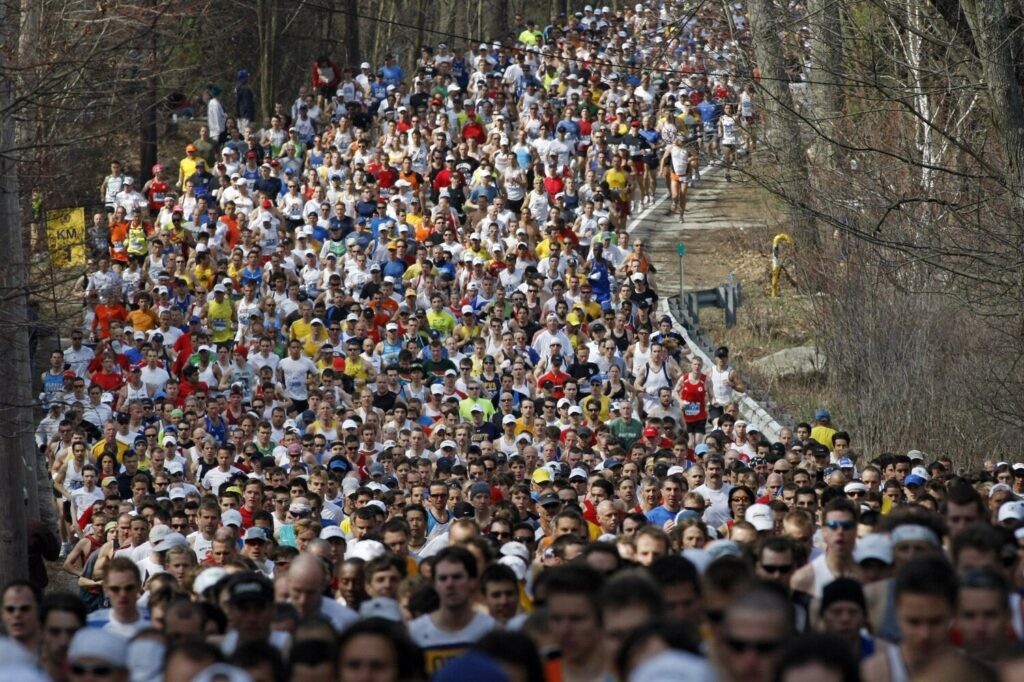
That year, nearly 2,000 runners were shut out because a cutoff time of 1 minute, 38 seconds faster than qualifying times was set to allow a cap of the field.
The number of runners who missed the cutoff time of 4:52 for the 2019 Marathon grew to 7,384, leading to the B.A.A. to make qualifying times 5 minutes faster.
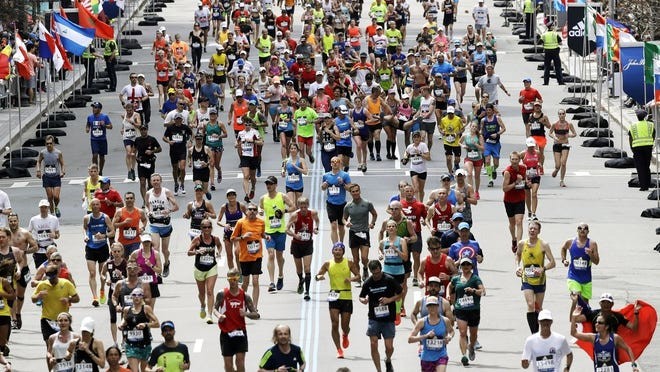
Because of the coronavirus, the B.A.A. last March decided to move the 2020 edition from its normal Patriots Day slot to Sept. 14. On May 28 last year, the Hopkinton-to-Boston race was scrapped entirely for the first time and the 124th Marathon became a virtual event.
The race was last run in 2019, when the entry field was 30,234.
Registration for this year's race will begin next Tuesday at 10 a.m. Eastern Time. Registration is not first-come, first-served and applications will be accepted until 5 p.m. Eastern on Friday, April 23.
In prior years, registration was held over the course of two weeks, with the fastest qualifiers registering first. Due to the shorter timeline this year, all qualifiers may register at any point during the registration week window.
Anyone interested in running for a member of the Boston Marathon Official Charity Program may apply to a team beginning on Tuesday, April 20.
For the second year in a row, the B.A.A. is also hosting a virtual Boston Marathon. The event will take place over race weekend (Oct. 8-10), and will be open to the first 70,000 registrants.
Registration for the virtual race will open on Tuesday, March 30 at 10 a.m. Eastern through the B.A.A.’s Athletes’ Village. Applicants who are not accepted into the in-person Boston Marathon and want to run virtually will have the opportunity to register for the virtual event.
(03/16/2021) ⚡AMPBoston Marathon
Among the nation’s oldest athletic clubs, the B.A.A. was established in 1887, and, in 1896, more than half of the U.S. Olympic Team at the first modern games was composed of B.A.A. club members. The Olympic Games provided the inspiration for the first Boston Marathon, which culminated the B.A.A. Games on April 19, 1897. John J. McDermott emerged from a...
more...Semenya has received financial backing in bid to overturn World Athletics' ruling
Two-time Olympic gold medalist Caster Semenya has received a significant financial boost in her bid to overturn World Athletics' rules to allow her to compete in her favored events at this year’s Tokyo 2020 Games.
The South African Government’s Department of Sport, Arts and Culture has pledged R12 million (£576,600/$803,000/€671,500) to help Semenya appeal to the European Court of Human Rights against her testosterone ruling, according to newspaper The South African.
The funding pledge comes after Athletics South Africa asked the department to support Semenya’s quest to defend her 800 meters Olympic title.
Semenya is hoping to reverse a rule that would force her to take testosterone-suppressing medication to compete in her best events.
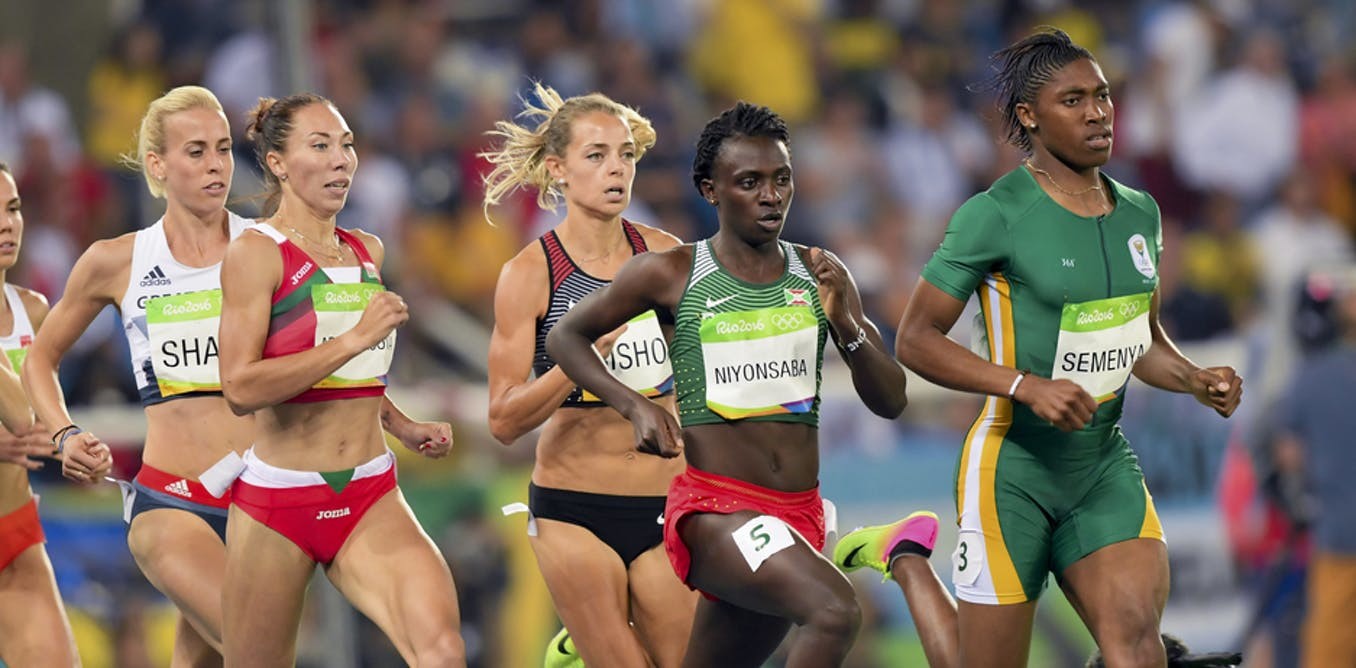
The World Athletics’ rules, which went into effect in 2019, cap athlete testosterone levels in women’s events from the 400m through the mile for athletes with differences of sexual development (DSD).
World Athletics said that no female athletes would have a level above the cap - five nanomoles per litre - unless they had a DSD or a tumor.

Semenya has lost appeals at the Court of Arbitration for Sport and the Federal Supreme Court of Switzerland against the World Athletics regulations over the past two years.
Last month South Africa’s Government confirmed it was planning to appeal to the European Court of Human Rights.
Yesterday, Sports Minister Nathi Mthethwa pledged to help fund Semenya’s efforts when answering parliamentary questions.
"The department has also been approached by the Department of International Relations and Co-operation (DIRCO) after they received a letter from the Commission for Gender Equality, which expressed interest in the matter and requested support from the Government to co-ordinate solidarity against World Athletics Female Athletes Classification Regulations," Mthethwa said in a report by The South African.
Mthethwa also said the Government had communicated with DIRCO to sponsor a resolution at the Human Rights Council.
"The hope that the appeal at the European Court of Human Rights may be successful is largely informed by this development and as a Government renowned for the protection and promotion of human rights, we should take an interest in the matter, moreover because our own shining star, Ms Semenya, is being targeted," added Mthethwa.
World Athletics has consistently said the rules are necessary to ensure female athletes can participate on fair and equal terms.
Semenya will be supported by a legal team led by Norton Rose Fulbright lawyers Gregory Nott and Patrick Bracher in Johannesburg, as well as Christina Dargham in Paris.
London based barristers Schona Jolly and Claire McCann, and Toronto-based lawyers James Bunting and Carlos Sayao are also part of Semenya’s legal team.
"I hope the European Court will put an end to the longstanding human rights violations by World Athletics against women athletes," said Semenya.
"All we ask is to be allowed to run free, for once and for all, as the strong and fearless women we are and have always been."
(03/15/2021) ⚡AMPby Geoff Berkeley
Social media is changing track and field for the better
Unlike sports such as basketball, football, hockey and soccer, track has never attracted the same attention in terms of viewership and, of course, money. Every four years when the Olympics come around, the world gets excited about the sport, but as soon as the closing ceremonies wrap up it fades into the background. With many of the big track meets only available on expensive subscription services like Runners Space and Flo Track, even fans of the sport have trouble accessing meet coverage — that is, until recently.
Social media, most notably YouTube, has transformed the sport of track and field over the last few years, with coverage of more and more high-level track meets becoming available on the free platform, and an increasing number of athletes and teams using it to promote themselves and give fans an inside look into their lives and training. In a recent YouTube video, several athletes, including Canada’s Justyn Knight, reflected on the change and how they think it is helping the sport progress.

“Involving social media in the sport does nothing but uplift it,” said Knight. “Our generation is in a social media time where it does nothing but make you more money and spread awareness on whatever your cause might be or bring awareness to your team.”
The other athletes in the video echoed Knight’s statements, adding that providing free spaces where fans (particularly young fans) can access content and keep up with their favourite runners creates more excitement around the sport, which ultimately helps brands (and therefore the athletes they support) make more money and improves the sport overall. New Zealand runner Nick Willis also commented on the differences he sees in the sport now compared to when he began his career 20 years ago, noting that social media has allowed smaller, more grassroots meets to flourish.
“Before, the highest-level athletes wouldn’t want to show up to meets that didn’t have any prize money [or] that weren’t on NBC or ESPN,” he said. “It’s good that those things are part of the sport but … it’s cool to be a part of both sides and having done the sport at the high level for 20 years it’s actually rejuvenating for me at the end of my career to be in more community-based events.”
He added that these smaller meets, where athletes pay their own entrance fees and put in a seed time, create a more level playing field for runners, and also allow fans to be a part of the business structure of the sport, in a way. The more people that log onto the YouTube channel to watch the meet, the more sponsors the meet is able to get, generating more revenue to help athlete cover their expenses and to allow meet organizers to put on other, similar events.
Social media in general, whether it’s YouTube, Instagram or TikTok, gives elite runners an opportunity to market themselves, to promote their personal brands and to connect with fans in a way that athletes of previous generations were unable to do. It provides greater access to the sport for fans of all ages, particularly young fans, which will help to inspire and motivate the next generation of elite runners. Running may not ever generate the same level of sports mania as football or hockey, but these changes will help the sport to grow by generating more support for athletes hoping to compete at a high level.
(03/15/2021) ⚡AMPby Running Magazine
The Long Run Prepares Your Body to Run More Efficiently No Matter the Distance
Going the extra mile(s) can help you run more efficiently at every distance—even if you dread it sometimes.
Ah, long runs: We love to hate ‘em. Or maybe we love to love ‘em—depends on who you ask. Either way, the long run is the cornerstone of any half marathon or marathon training plan, but it can be equally important to your 5K and 10K training. No races on your calendar? No problem. A long run can still be beneficial for your overall fitness and mental health.
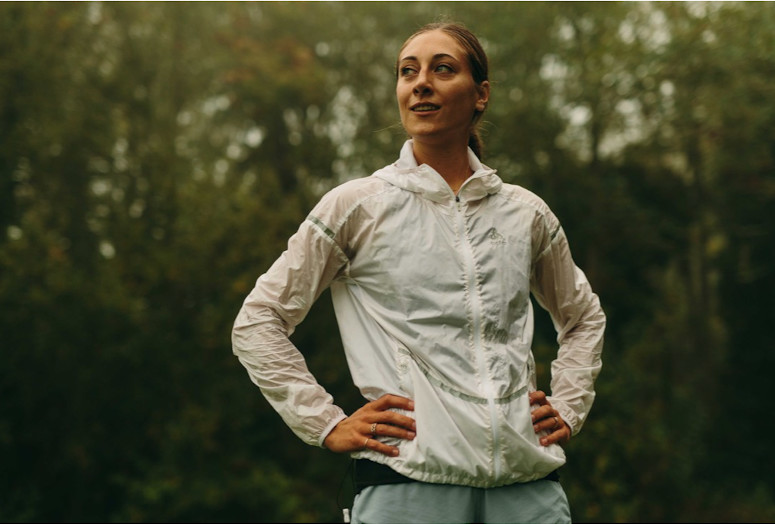
But if you don’t understand the long run, you may miss out on all of the magic it has to offer. So we put together this ultimate guide to one of the best training tools you have in your arsenal.
What’s the point of the long run?
The benefit of running long—regardless of the distance you’re training for—is the aerobic gain you’ll make during those miles. “Long runs force the body to become more and more efficient,” says Ben Rosario, head coach and founder of the HOKA NAZ Elite team in Flagstaff, AZ. “The heart learns to pump higher amounts of blood with each stroke, which then carries more oxygen to the body.”
Aerobic (or endurance) running also strengthens your slow-twitch muscle fibers, which can fire repeatedly with minimal fatigue (compared to fast-twitch fibers, which are used during short, explosive efforts but fatigue more quickly). These fibers are also important because they’re full of capillaries, mitochondria, and myoglobin (an iron- and oxygen-binding protein), all of which are crucial to getting a steady supply of oxygen and energy to the muscles.
“Long runs force the body to create new capillaries, giving the oxygen a smoother and faster path to the mitochondria—a.k.a. the ‘power plant’ of the cells—where energy is produced and stored. And when we run for long periods of time, the size of those mitochondria increases, allowing them to produce and store more energy,” explains Rosario.
One of the other major benefits of the long run is how it teaches your body to use fat as fuel over carbs, says Joe McConkey, a Boston-based exercise physiologist and USATF-certified running coach. “That allows you to be more efficient with your different forms of energy, so you can run faster without depleting your reserves.”
Translation: The long run prepares your body to run more efficiently no matter the distance—even in a short race, when you need energy to be produced and oxygen sent throughout the body fast.
And you can’t overlook the mental angle: To prepare for the psychological challenge of racing for hours, you have to train for hours. Even if you’re not racing, a long run offers your mind the chance to tap into the ever-elusive runner’s high, and research shows running can boost your mood and improve your mental health.
What to Watch Out for On a Long Run
A long run is, inherently, long. And the more time you spend on your feet, the more stress you put on your body. “The long run does ask a lot of our muscles, tendons, and ligaments due to the duration of exercise required for a run to be considered ‘long’,” says Rosario. 
​
Generally, your cardiovascular system adapts to changes more quickly than your musculoskeletal system. So if you start running long before your body is prepared to run long, you could put yourself at an increased risk for injury, including overuse injuries like plantar fasciitis, Achilles tendonitis, runners’ knee, iliotibial band (ITB) syndrome, and shin splints.
“If you’re experiencing any little niggles or asymmetries before the long run, the long run will only make those worse with the thousands and thousands of steps you’re putting on your body,” says McConkey. It’s super important to listen to your body and, if you feel like something is off during the long run, acknowledge that it may be more major than you think. “The only sensations you should feel during a long run are a slight challenge aerobically as it gets longer, and general fatigue or a sort of bilateral soreness,” he adds.
Gear You Need for a Long Run
Running is a pretty simple sport in terms of gear, but when you start clocking over 60 minutes, there are some important things you’ll want with you beyond a good pair of shoes.
The most important addition is a way to carry fuel and hydration, whether that’s a running belt, a handheld water carrier, or a pack.
How Long Should Your Long Run Be?
There’s a huge amount of variation in how long a long run should be, depending on the type of runner you are.
Some coaches suggest long runs cover one-and-a-half to two times the distance of what you consider a normal-length run. Most experts, like Jack Daniels, agree that a long run be about 20 to 25 percent of your overall weekly mileage. So if you’re running 40 miles per week, your long run will be 8 to 10 miles.
“I typically don’t like the long run to be more than twice the length of a regular recovery run,” says McConkey (in general, recovery runs last about 25 to 40 minutes). According to the Road Runners Club of America, a long run technically isn’t a “long run” unless it’s over 90 minutes, so the exact distance depends on your running pace.
But your long-run distance becomes more specific if you’re training for a certain distance. Remember: You need to go further (and slower) in order to run faster at shorter distances. Most experts recommend working up to the below peak long run for each distance:
5K: 5 to 6 miles for beginners; 10 to 12 miles for intermediate/advanced
8K/10K: 6 to 10 miles for beginners; 12 to 14 for intermediate/advanced
Half marathon: 12 to 13 for beginners; 16 to 18 for intermediate/advanced
Marathon: 18 to 22 for beginners; 18 to 30 for intermediate/advanced
Yes, some of those distances are longer than the race itself. “But logging those miles shows you’ve spent enough time at sub-max speeds to allow the necessary aerobic adaptations to happen,” he explains.
How Fast Should Your Long Run Be?
No matter the distance, your long run should be run at an easy pace, says McConkey. We will repeat: easy pace! What does that translate to? It’ll be different for every runner, but an easy pace should fall on the lower end of the rate of perceived exertion scale. Your heart rate should be 50 to 70 percent of your maximum heart rate, and you should be breathing naturally and able to hold a conversation effortlessly.
"I advise people to run as slow as possible, as long as it’s mechanically comfortable,” McConkey explains. “I challenge people to not look at pace until they’re done, but just focus on something comfortable. You shouldn’t feel like you’re doing slow-motion single-leg squats; there should still be some spring to your step.”
That pace is going to change as your fitness changes. “When you develop more strength and running efficiency, you’ll be able to run faster at the same RPE or heart rate,” says McConkey.
For shorter distances, long runs can generally be slow and enjoyable, says Rosario. But half marathoners and marathoners should approach their long runs with a little more structure. “Half marathoners and marathoners, in my opinion, should be adding faster-paced running into most of their long runs: things like alternating fast-pace and medium-pace miles, surging for two minutes at the beginning of each mile, or simply running the last 5K of their long run really fast,” says Rosario. This is important, because it helps train your legs to get used to running fast even with lots of miles on them—and that will help at the end of races.
How to Recover From a Long Run
You may run your long run at an easier pace, but the sheer amount of time you’re spending on your feet warrants more rest and recovery.
For starters, “the quicker an athlete can replenish after a long run, the sooner they will recover,” says Rosario. “Shoot for a mix of carbs and protein, preferably at a 4:1 carbs to protein ratio—that particular ratio has been shown in labs to be the most effective at replenishing muscle glycogen stores and thus limiting muscle damage.”
McConkey recommends taking the day off after a long run. “Instead of running, just walk around for 20 to 30 minutes and spend 10 minutes on a foam roller to open up your body,” he says. “Those two things can really expedite recovery.” In fact, foam rolling was shown to reduce delayed-onset muscle soreness while enhancing muscle recovery in a study published in the Journal of Athletic Training. 

As for other trendy recovery modalities, do what feels good to you. Compression boots can also lead to recovery benefits, a study in the Journal of Applied Physiology found. Ice baths were shown to reduce delayed onset muscle soreness in a scientific review by researchers at the Cochrane Library. And massage helped reduce pain intensity in runners’ quads in a study from the Journal of Physiotherapy.
Most importantly, prioritize a good night’s sleep—new research from the International Journal of Sports Medicine argues it may be the single most important factor in exercise recovery. After all, that’s where the real recovery magic happens, when your body truly has time to rest and rebuild.
(03/15/2021) ⚡AMPby Runner’s World
There’s a New Running Team, Angel City Elite, and It Wants to Increase BIPOC Representation in the Sport
“We didn’t want to simply educate and represent only ourselves, we want to do this for people who don’t have a voice.”
There’s a new elite running team, and it’s working toward bridging the diversity gap in the sport.

Angel City Elite is a Los Angeles-based team of five women who are Black, Indigenous, and people of color (BIPOC). The group—Sabrina De La Cruz, Andrea Guerra, Valerie Sanchez, Grace Gonzales, and Grace Graham-Zamudio—is determined to not only perform well, but be a voice in the running industry and community.
The team of women, all of whom are marathoners, is sponsored by Brooks Running, and each athlete will receive Brooks team gear and shoes, and have incentive bonuses in their contracts along with a travel budget. De La Cruz, Guerra, and Gonzales are coached by De La Cruz’s husband, Andres; while Sanchez and Graham-Zamudio will continue to work with their current coaches. All will continue to work full-time jobs on top of competing at an elite level.
“I’ve had this idea for years but was scared because I didn’t know how to start it,” De La Cruz, 31, a 2020 U.S. Olympic Marathon Trials qualifier with a PR of 2:41:16, told Runner’s World. “Right after college, I did see the lack of representation in the sport whenever I would travel to races. About two years I go, I did feel stereotyped when I went to other states. So that’s when I knew, I need to create this team.”
This was especially apparent to De La Cruz at the Olympic Marathon Trials where only handful of runners were BIPOC, and it inspired her to reach out to the other four women, all of whom are marathoners living in the Los Angeles area. Guerra (who has a marathon PR of 2:42:15), Sanchez (2:42:38), and Gonzales (2:41:52) also qualified for the 2020 Olympic Marathon Trials.
Each runner brings a different story to the team. Sanchez, 30, is Mexican-American and a friend of De La Cruz’s from the University of California-Los Angeles (UCLA). Gonzales, 31, is part Chicana and part indigenous Mexican, who mentors the team and teaches them about her culture. Guerra, 30, moved to the U.S. from Mexico when she was six years old. Graham-Zamudio, 27, is the youngest in the group and already a leader.
In the spring and summer of 2020, the women created a plan for their team, including mission statements and a clear vision. They didn’t want to just simply exist as a team that only runs and competes. They also wanted to be proactive in bridging the diversity gap in the sport.
“We didn’t want to simply educate and represent only ourselves, we want to do this for people who don’t have a voice,” De La Cruz said. “That’s really huge for us. Not only empowering each other, but empowering others by doing the work on our end to make running more inclusive.”
This part of their mission, in addition to the talent of each team member, caught Brooks’s attention. Julie Culley, a 2012 Olympian who started as the sports marketing manager for Brooks last August, said this was one of the first projects she worked on with Brooks.
“What made this so significant was these were five women who were already connected by location, they already do some training together, but beyond trying to get the most out of themselves was their unification on trying to change the landscape of the sport,” Culley told Runner’s World. “The callout that’s happened in the last year to focus on elevating voices and inviting more people in. They want to get the most out of themselves, but they want to do more than that. You just can’t not fall in love with that.”
The logistics starting a team—becoming an LLC, setting up a bank account, receiving nonprofit status—has taken several months. Brooks is paying for incorporation fees, logo creation, web hosting (you can find the team website here), and other requirements for creating and supporting the team.
When asked about team goals, De La Cruz’s passion for community comes flying out and running almost takes a backseat. She shares idea after idea of actions she wants to take, such as using social media channels and a podcast to amplify voices and tell others’ stories. Additionally, she wants to connect with local run clubs, shops, and crews like Blacklist LA, creating a L.A.-based group run for all races, genders, and ages, and even going to local high schools, when the pandemic ends, to help kids apply for college and federal student aid (FAFSA).
“When I was growing up, I was lucky to have my mom,” De La Cruz said. “She was the first one out of her whole family to attend college. She helped me, but I also had friends who had no idea how to apply for school or FAFSA. My mom helped all of the kids in my high school because many parents didn’t know how to apply for college. This is the education and resource we want to bring to and be in the community.”
The team’s race schedule is still up in the air because of the COVID-19 pandemic, but the women are looking forward to doing races ranging in distances from the 10K to the marathon all over the country to share their message and mission.
“I actually started to cry last week,” De La Cruz said. “I feel so supported and happy Brooks is helping us. It’s something we needed. Some of us with our backgrounds, we don’t have much money. It’s nice to have this help, and we want to keep building on this and help the next generation. I don’t want this team to be here for three years. It’s here for years to come we can help generation after generation.”
The move comes as a few teams have popped up in recent months. Back in August, the On Athletics Club debuted in Boulder, Colorado, and just this week, a Puma group was announced in North Carolina.
For now, there’s a lot of work still to be done, and Angel City Elite has the boundless vision and potential to make a vast change in the sport and the Los Angeles community for years to come.
(03/15/2021) ⚡AMPby Runner’s World
Sara Hall, motivated by motherhood and marathons
For athletics fans, Sara Hall is probably best known for her stunning marathon performances of 2020: the finishing kick to end all finishing kicks in London, where after 26 miles of hard running in the miserably grey and cold rain, she unleashed a stunning sprint gear, and hurtled past world champion Ruth Chepngetich to finish second. It was so impressive it achieved the ultimate 2020 accolade of becoming a meme. Then, just a few months later, there was her brilliant performance at the Marathon Project in Arizona, clocking another PB of 2:20:32 for the win and to become the second fastest marathon runner in US history.
But if all this was an unexpected late career renaissance for Hall, and an astonishing turnaround after the heartbreak of a DNF in the Olympic marathon trials, her personal story might be even more extraordinary. In October 2015 she and her husband Ryan went to bed one night as a couple, and woke up part of a family of six. The couple had adopted four Ethiopian sisters: Hana (15), Mia (13), Jasmine (8) and Lily (5) and brought them back to their home in the US.


“It was kind of surreal,” says Hall. “I felt like I was acting in a sitcom, playing the part of a suburban mom. All of a sudden I was driving them to school in our big old family car.” Of course, in reality the process was actually far from sudden – the couple had long had associations with Ethiopia, with many friends in the country, and had always enjoyed training there. Even once they had made the decision to adopt in Ethiopia and met the girls, they took their time. “We spent a lot of time in Ethiopia training, and we would visit the girls during that time. So we'd built a lot of trust with them and really got to know them. I think that really helped everyone's adjustment, but it was a surreal time for sure.”
For their daughters, the culture shock of moving to the US must have been huge. “They didn’t know any English when we met,” agrees Hall. “I learned their language – Amharic – and we were teaching them English in the orphanage on our visits. But when we put them in school in the US we didn't know if that would even work because they'd never been to school before. My 15-year-old was starting eighth grade having never been to school for a day in her life. But she – they all – just immersed themselves in it and I think that really helped them.”
In fact, for those who like to ponder the effects of nature vs nature, Hall’s eldest daughter Hanna is quite the study. Now a freshman at Grand Canyon University in Arizona, she is a three-time state champion and clearly a prodigious talent. Her sister Mia has also recently started running more seriously, and the girls both now join Sara for runs. Yet when the Halls first met their daughters, none ran so much as a single step. The orphanage where they had lived for three years was their entire world, and though they were cared for, opportunities for sport were non-existent.
“They definitely knew of their country’s running heroes, though,” recalls Hall. “They had seen some races on TV and when we told Hana that we were both runners, she said: ‘Oh I want to be a runner!’ That was cool because otherwise I think I would have wondered if it was, you know, kids trying to get their parents approval by doing the things they love.”
Of course, with a pedigree like Hall’s – not to mention husband Ryan’s 59:43 US record-holding half-marathon and 2:04:58 marathon – the girls clearly have big running shoes to fill. And, as with many parents, finding the right line between pushing and easing off has been tricky for the Halls.
“I think I’m still figuring that out, and I like to talk to other people whose parents ran, about their experiences,” she says. “When you see a kid has a talent, you want to be able to communicate to them: ‘Look, if you want to be good at this, you could be’, but also kind of leave it up to them, too. I think distance running takes a lot of internal drive to be good at it, and I think for me, that always came from within. I’ve always felt like if they have that fire, I will fan that flame – but I want to see their own fire for it first.”
Her two youngest daughters have yet to find what fuels their own fires, and that is absolutely fine with Hall. “There’s lots of different reasons to do sports, like just for fun,” she says. “Jasmine, who is 13, did cross country for two seasons and was undefeated, but was very much just seeing it as fun and hasn’t run for the last couple of years. I started myself in basketball and soccer and I think that’s actually a better way to become a good runner anyway, to do those sports early on. There’s just not as much pressure with team sports, and you learn teamwork.
“Typically, the professional athlete, everything’s kind of revolving around you – you’re eating, and sleeping, and training, and everything outside of training is all about rest, minimising energy expenditure at all costs,” muses Hall. “But then you become a parent and that's out the window. You can't just go into energy conserve mode – you're constantly tuning in with them and like, and seeing what they're needing.” Little surprise, then, that when the couple initially adopted the girls, Hall expected it to signal the end of her top-flight career.
Instead, that, and the move up to the marathon distance, seems to have revitalised it. So, did her new family life actually prove a new source of fuel for that fire? She laughs: “I think I’ve been able to improve despite it, definitely not because of it! It’s been difficult. That’s why I share stuff, because I think on the outside it could look like it’s been really easy but it hasn’t, by any means.
“I never thought I would want to do this with kids, just be torn in different directions. Having talked to other families who had adopted older kids, they’d all had a really difficult road, really life-altering for the family. And I was willing for these kids, willing to walk that road with them, do what they needed to heal from the trauma they've been through. But it turned out that wasn't really the case with them, they have just handled everything really remarkably so far. So it allowed me to continue to do what I'm doing”.
And that, these days, is quite definitely 26.2 miles, as fast as she can. “I’ve just loved marathon training. I think I should have been doing this a long time ago,” says Hall. “I just found my body had a lot of room to grow my aerobic capacity. Each build-up I'm able to add in more and absorb it better and so even though I'm getting older, I feel like I'm kind of young as far as the marathon goes. Maybe starting the marathon later just allowed me to have more mileage in my tyres.”
These days, Hall also has to contend with nerves from her daughters’ races as well as her own. Fortunately, she says she doesn’t suffer too badly for them. “But I do get really excited,” she adds. “I’m sprinting around the course trying to cheer for them 20 times!” But it’s important to Hall that her daughters also learn how to fail – and see her do it, too. “I think it’s really powerful for them to see me do something that makes me come alive – and see me fail and pick myself back up again after the biggest failure of my career – and train through a pandemic and then have the best race of my career. That’s the kind of stuff you want to instil in your kids and they learn more through watching you than from what you say.”
The girls certainly have two incredible role models to watch at home. And while she may not be at the Olympics, Hall’s marathon journey is far from over, she confirms. “I think I have some unfinished business there,” she says, “and I'm really looking forward to having some World Marathon Majors back in their normal glory, with the whole field.”
And if she can kick like she did in London on a miserable day with an elite-only field and no spectators, then surely with fair conditions, and the cheers of the crowd behind her, a sub-2:20 and that US record is well within her grasp.
(03/14/2021) ⚡AMPby World Athletics
Kenyan runner convicted of doping offense in criminal court
A female runner became the first athlete in Kenya to be convicted of a doping offense in a criminal court on Friday.
Distance runner Florence Jepkosgei Chepsoi, who finished second at the 2019 Jakarta Marathon, was sentenced to one year of community service after she was found guilty of presenting false documents and lying to the Kenyan anti-doping agency at a hearing.
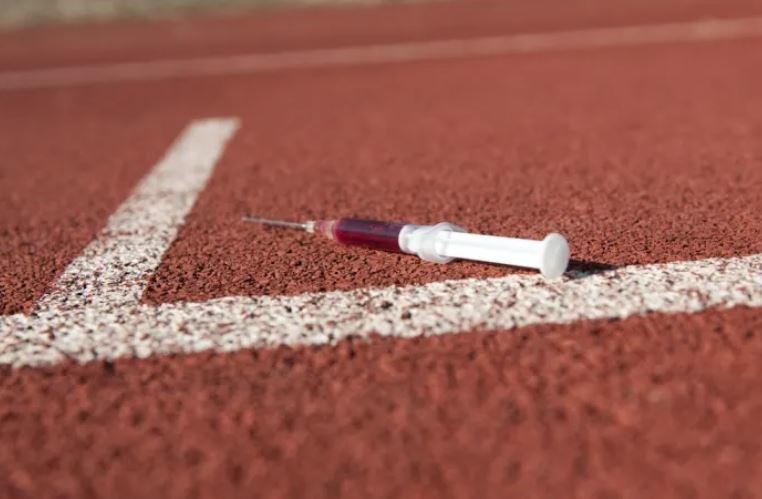
She changed her plea to guilty having initially pleaded not guilty when she was first charged in court last year.
Kenya criminalized doping offenses in 2016 in the midst of a stream of drug scandals among its world-renowned distance runners. The East African nation updated its anti-doping laws late last year.
Chepsoi was initially charged with doping by the Anti-Doping Agency of Kenya in 2017 after testing positive for the banned steroid prednisolone at a race in China. When she appeared before a tribunal, she presented documents she claimed were from a hospital as part of her defense. ADAK found the documents were forgeries and Chepsoi had never been treated at the hospital, leading the anti-doping body to push for her to be prosecuted in a criminal court.
It’s rare for an athlete to face criminal charges for doping offenses, although Chepsoi is not the first worldwide.
Criminal prosecutors normally target people such as doctors and other support staff who facilitate doping in what they refer to as doping conspiracies rather than the athletes themselves. The World Anti-Doping Agency recommends athletes do not face criminal prosecution for doping.
The United States passed a law in December that criminalized doping conspiracies and allows U.S. prosecutors to go after doping schemes at international events in which Americans are involved as athletes, sponsors or broadcasters. The Rodchenkov Anti-Doping Act was named after Grigory Rodchenkov, the former Moscow lab director who helped uncover state-sponsored doping by Russian athletes.
However, the Rodchenko Act makes clear that individual athletes are not subject to prosecution.
ADAK said more athletes would “face the law” for doping in the coming days. Four other Kenyan athletes are facing criminal charges for doping offenses.
(03/14/2021) ⚡AMPKamata and Kobayashi Win National University Half Marathon Titles
Even windier and warmer than in Nagoya, the airfield runway in Tokyo's western suburbs offered no shade or shelter to the men and women competing in the National University Half Marathon Championships Sunday in Tachikawa, keeping times slower than usual and more people in the race late.
In the men's race, Koki Kamata (Hosei Univ.) repeated his run on the Hakone Ekiden's First Stage back in January, kicking hard to drop a pack in the final straight for the win in 1:03:00. Hakone champ Komazawa University's star first-year Mebuki Suzuki was 2nd in 1:03:07 with Yoshinori Shimazaki (Koku Gakuin Univ.) 3rd in 1:03:08 a step ahead of teammate Kota Fujiki and Komazawa 4th-year Ayumu Kobayashi, 4th and 5th in 1:03:09. Kamata, Suzuki and Shimazaki all scored places on the Japanese team for this summer's Chengdu World University Games.

The women's race was even closer up front. 2020 National University Women's Ekiden champion Meijo University teammates Narumi Kobayashi and Yuna Arai worked together to put pressure on 2019 World University Games half marathon gold medalist Yuka Suzuki (Daito Bunka University). In the final kilometers Arai dropped off, but it came down to a photo finish between Kobayashi and Suzuki. Both clocked 1:14:36, with Kobayashi given the title and Suzuki 2nd. Arai was 9 seconds back in 3rd in 1:14:45 to join Kobayashi and Suzuki on the Chengdu team. Suzuki will have a rare opportunity to defend as gold medalist in Chengdu, assuming the Games happen.
(03/14/2021) ⚡AMPby Japan Running News
Matsuda Wins Windy Nagoya in 2:21:51
Going ahead where every other race its level has canceled or postponed, the Nagoya Women's Marathon went off as planned with an elite race, mass-participation field of 5,000, and 9,000 more in the accompanying half marathon. Strong winds reported as high as 14 m/s along the course held back the kind of times organizers had hoped for, but that didn't stop 2020 Osaka International Women's Marathon winner Mizuki Matsuda (Daihatsu) from taking a serious swing at the women-only national record of 2:20:29 set in Nagoya last year by Mao Ichiyama (Wacoal).
Matsuda, 25 km national record co-holder Sayaka Sato (Sekisui Kagaku), 2:24:52 runner Mao Uesugi (Starts) and debuting Ikumi Fukura (Otsuka Seiyaku) were the only ones to go out with a quartet of pacers on sub-2:20 pace. By 13 km that was down to only one pacer, half marathon great Rosemary Wanjiru (Starts), and just after hitting halfway in 1:10:23 only Wanjiru and Matsuda were left.

Matsuda stuck with Wanjiru until the pacer stepped off at 30 km, but while she tried to match Ichiyama's closing speed her time drifted slower and slower as she battled the winds. Bearing down in the home straight to the indoor finish she crossed the line in 2:21:51, just 4 seconds off her best from Osaka last year, gutted, weeping and apologizing on-camera for not having run faster. Her coach Miwako Yamanaka, 4th placer at the 2002 World Cross Country Championships, said post-race, "I know she was really focused on time, but this morning when I saw the conditions I told her that today was about the win, not time. I give her a 100%." Matsuda countered, "She's being too generous."
Completely alone for the last 20 km of the race, Sato held on for 2nd in 2:24:32, just over a minute off her debut last year but a quality time given the wind. The debuting Natsumi Matsushita (Tenmaya) came up from the 2nd pack to narrowly take 3rd in 2:26:26 with the next three finishers all within 30 seconds of her. Despite the conditions three other first-timers besides Matsushita made it under 2:30, and six women inside the top 25 ran PBs. Tokyo Olympic team alternate Rei Ohara (Tenmaya) was only 18th in 2:32:03, with Rio Olympian Mai Ito (Otsuka Seiyaku) 25th in 2:38:07 and London World Championships team member Mao Kiyota (Suzuki) 26th in 2:38:47.
Further back, women's 60+ world record holder Mariko Yugeta (Saitama OIG) likewise struggled with the wind, coming up short of her goal of breaking her own record of 2:52:13 from Osaka in January but adding another sub-3 to her resume with a time of 2:54:31 for 70th overall in her 110th marathon finish.
And behind her, thousands more women did what millions of others worldwide can still only dream of doing, crossing the finish line of a major marathon run through the downtown streets of a big city. Barring any resulting spike in infection numbers later this month, Nagoya was a beacon of hope that this fall will see all those who could only watch from a distance this time get their chances on the streets of Boston, London, Tokyo, and the world's other major cities.
(03/14/2021) ⚡AMPNagoya Women's Marathon
The Nagoya Women's Marathon named Nagoya International Women's Marathon until the 2010 race, is an annual marathon race for female runners over the classic distance of 42 km and 195 metres, held in Nagoya, Japan in early March every year. It holds IAAF Gold Label road race status. It began in 1980 as an annual 20-kilometre road race held in...
more...UTMB Is Back!
The world's most important trail race is driving forward-pandemic or not-and despite a tough year across the board, it seems to only be gaining steam.
While many races struggle to fill their 2021 entry slots, that was not a problem for UTMB, Chamonix, France's Ultra-Trail du Mont-Blanc-now six races from 40 to 300 kilometers, all of which take place during the final week of August in the legendary mountain town at the base of Mont Blanc. Despite a year off due to the global pandemic, interest in the race series remains very strong.


For the 16th time in a row, the UTMB races have sold out, with 10,000 runners slated across all the races. With the pandemic continuing to complicate international travel, the event's mix of nationalities has shifted, with more participants from within Europe and fewer from China and Japan. Despite the long-haul travel involved, U.S. interest in UTMB continues to grow, up slightly to 338 participants.
The UTMB organization is contemplating a number of changes this year, including a streamlined bib pickup system and wave starts with a few hundred runners in each block. Runners will have to wash their hands on their way into aid stations, with social distancing and masks being de rigeur. Shared food bins will be a thing of the past, and it's possible runner assistance areas may be altered or eliminated.
Despite the global uncertainty, 2021's marquee race around 15,774-foot high Mont Blanc looks to be among the most competitive trail races ever, on a par with 2017, which some observers have considered the most stacked trail race in the history of the sport. That year, France's Francois D'Haene edged out Catalonia's Kilian Jornet by 15 minutes, and Spain's Nria Picas won in a down-to-the-wire race, edging out Switzerland's Andrea Huser by under three minutes.
How did such a strong field coalesce? "It was really just organic. We didn't do anything specific to make it happen," says UTMB's Press Officer, Hugo Joyeux. One example is a post by three-time UTMB winner D'Haene, who asked on Instagram, "Who's coming back to take part in the party? I'll be there!" D'Haene went on to tag his top challengers, gently teasing them into showing up at the starting line next to the Mayor's office in the old part of Chamonix this August 27th. Most are in, with Jornet notably absent as he continues to reduce his trail-racing schedule to focus on mountaineering objectives.
The USA's top runners didn't need a social media ribbing from D'Haene to add the race to their calendars. Starting for the women will be Courtney Dauwalter, aiming for a second consecutive UTMB win, along with Katie Schide, Kaytlyn Gerbin, Brittany Peterson and Stephanie Howe. Schide, second in the CCC race in 2018, and 6th in the UTMB in 2019, currently lives in the south of France, in the maritime Alps region, and is easily the most experienced European racer among the U.S. women's elite entrants.
"UTMB reliably draws the most competitive field of the year," says Schide. With top runners coming out of an usual pandemic year-plus, Schide is eager to go head-to-head. "Time trials and personal challenges are fun, but racing is where I'm really able to find the absolute limits."
The U.S. men's delegation is equally competitive-with a dose of angst added, too. In 18 years, no American male has ever won UTMB. It's long since started to be a topic of discussion. Flagstaff, Arizona's Jim Walmsley has started UTMB twice, finishing fifth in 2017 and dropping out in 2019, while Tim Tollefson, from Mammoth Lakes, California, has had four starts, with two third-place finishes. In 2018, he took a serious fall, fileting a quadricep-yet he still managed to run another 90 kilometers before having to drop. The wound ended up requiring eight stitches. The following year, he showed up at the starting line feeling ill, and eventually dropped.
About 2021, Tollefson says, "It's going to be another barn burner," revealing that comparisons with others toeing the start line has been something with which he has struggled over the years. "Contrary to what most may believe, anxiety over who is or isn't in a field has tormented me historically," he explains. "Insecurities over training, fraudulent thoughts of belonging, self punishment and disrupted sleep were commonplace."
For Tollefson, that mix of emotions has added up to sleepless nights and high levels of stress. This past year, counseling has offered him a better perspective. In addition to the usual training, he's working on "becoming mindful in life and believing that the quest to become the best version of myself-which is not dependent on the love, acceptance or applause of anyone else-is the ultramarathon worth mastering."
"I left the Chamonix valley in 2018 full of anger, guilt and shame. What brewed over the next 12 months was a toxic cocktail of unchecked emotions and coping strategies," says Tollefson. "No matter how much I lied to myself and others, I simply did not want to be there."
How will he feel, arriving in Chamonix valley this August? "For the first time in years, the thought of being back in the valley, truly present, is beginning to excite me."
The restart of UTMB this summer is welcome news to this Alps tourist hub, which historically welcomes close to 100,000 guests for the race series at the close of each August. When last August's races were cancelled, the organization refunded 55 percent of the entrance fees for the 10,000 registered runners. The split created grumblings on social-media platforms. Meanwhile, the staff of 30, which includes UTMB's international races, suffered its own share of disruptions. They began working from home starting with the first French lockdown on March 17th, and didn't return to the office until this past December. They now operate with 50 percent of the staff in the office-masks required.
(03/14/2021) ⚡AMPby Trail Runner Magazine
Lifestyle changes that will help you lose weight
Losing weight is the top priority for millions of folks out there today. And rightly so. While aesthetics is an integral part of everyone wanting to have a slim, toned profile, being overweight or obese puts you at the risk of several health conditions such as diabetes, heart disease, high blood pressure, to name a few.
Here are a few lifestyle changes that will help you shed those pounds and achieve lasting weight-loss success.
Get Moving

Your marathon workouts may not be good enough if you spend the rest of the day sitting. Start by establishing a daily jogging routine. It could be as short as half an hour, but it will help you become more physically active. Find any other activity that moves or stretches your muscles. That could also include cycling, dancing, playing with your dog, going up and down the stairs. If your errands are within a mile away, walk to do them instead of using a car.
Ultimately, the goal is to indulge yourself in anything that gets your heart rate up, and you start feeling somewhat breathless. Even adopting changes as minor as taking the stairs instead of a lift can go a long way in your journey to lose weight in the long run. Remember, sitting for extended periods is one of the leading causes of obesity and other chronic health conditions.
Get Enough Sleep

While this may be the last thing on your mind, one of the leading factors that may be hampering your weight loss is not getting enough sleep. Besides eating right and exercising, getting quality sleep each night is an integral part of weight maintenance and a healthy lifestyle. A bad sleep-wake cycle significantly changes the way the body responds to food and thus causes weight gain.
Studies have found that sleep deprivation sets our brain to make bad decisions, leading us to make unhealthy choices throughout the day, like choosing high carb, high fat, sugary foods and indulging in midnight snacking. Not getting enough sleep can also up your stress levels which can increase your likelihood of weight gain. Therefore, make it a point to go to sleep earlier and aim for at least 7-8 hours of uninterrupted sleep each night.
Start Exercising
This one may not come as a surprise, but exercising is the key to maintain good health and lose weight along with a healthy diet. Along with a reduced-calorie intake, exercising creates a calorie deficit in your body by boosting your metabolism, leading to weight loss.
The good news is that you do not necessarily have to necessarily go to the gym and have a brutal workout, as there are plenty of exercises you can do at home without any equipment and achieve the desired results. If that interests you and you are unsure where to start, then we suggest checking out the Play Store. There are plenty of fitness apps that can guide you with customized workouts and nutrition plans.
Choose Healthy Snacks
It is crucial to stop stocking on junk food like chocolates, biscuits, candy, pastries, cookies, and potato chips. Packaged foods tend to be high in fat, sugar, and sodium and are high in empty calories providing you with no nutritional benefit in any way.
Therefore, you must limit or eliminate them from your diet and replace them with healthier alternatives such as nuts and seeds, fruits and vegetables, Greek yogurt, cottage cheese, or nut butter. While some of these foods may be high in fats, it is important to note that some fats are healthier than others. Monounsaturated fats can aid with weight loss and provide several other health benefits.
Stay Hydrated
Often, people confuse thirst for hunger, causing them to eat more food than needed. Therefore it is important to stay hydrated throughout the day by drinking sips of water regularly to curb unnecessary snacking as it is one of the best natural appetite suppressants.
Many people also consume excessive liquid calories by drinking soft drinks, juice, coffee, or tea. While there are many options for what you can drink, water is by far the best liquid you can choose for yourself to quench your thirst. Replace these sugary beverages with water as it is the best energizing liquid for your body and is 100 percent calorie-free. Water not just keeps your body hydrated but also boosts metabolism and improves the digestive process while burning fat consumed from food and drinks.
Losing weight is a daunting journey for many that require long, intense workouts and a deprivation diet that leaves you feeling hungry. While exercising and consuming a healthy diet are the central elements of the process, losing weight does not revolve around these two only. Making small but sustainable lifestyle changes and ingraining some healthy habits can make a big difference and help you shed those pounds effectively.
(03/13/2021) ⚡AMPby Colorado Runner
Olympic Marathon and Race Walk Test Event to Go Ahead May 5th
On Mar. 8 the organizing committee of the Hokkaido Sapporo Marathon Festival 2021 formally decided the final details for the May 5 event, which will serve as the test event for the Tokyo Olympics marathons and race walks. The half marathon will feature a total of around 80 men and women from Japan and abroad including those scheduled to compete in the Olympics, while the 10 km will be geared toward mass participation entrants, with a field of 2500.
The 10 km will be conducted according to guidelines prepared under the supervision of experts, with coronavirus measures including 1 m separation between participants. With regard to spectators along the course, Yasuo Mori, the event's deputy director, commented, "If we want people to stay away from the course we have to communicate that to them, so we must make a final decision by the end of March or early April. It's very important to minimize any concerns or fears the local people may have."

Online entries for mass participation runners open at 10:00 a.m. on Mar. 9 and will be open through Mar. 15. The results of the entry lottery will be announced Mar. 22. The Olympic race walks are scheduled for Aug. 5-6, with the marathons set for Aug. 7-8.
(03/13/2021) ⚡AMPby Japan Running News
Kenyan Florence Jepkosgei Chepsoi sentenced for forging documents
Kenyan long distance runner Florence Jepkosgei Chepsoi has received a one year community service sentence for faking documents as part of her defence on a doping charge, the Anti-Doping Association of Kenya (ADAK) announced.
She becomes the first Kenyan athlete to be found guilty in a criminal court.
The verdict was handed down after the trial in Eldoret following an investigation lasting a number of years.

The 36-year-old marathon runner was banned for two years in 2017 for using performance-boosting drug Prednisolone.

She was found guilty of providing false medical records from Eldoret's Uasin Gishu Hospital to support her defence case when she appeared before the Kenyan Sports Disputes Tribunal.
"The Uasin Gishu district hospital confirmed that those medical documents had been forged, and that the athlete had not been treated at the said hospital," ADAK said in a statement.
Over 60 Kenyan athletes have been suspended in the last five years for doping offences, including whereabout failures, a violation of the World Athletics anti-doping rules.
Kenya's 2016 Olympic women's marathon champion Jemima Sumgong is serving a lengthy ban after she was found to have falsified medical documents in an attempt to tamper with a positive test for EPO.
Sumgong, the first Kenyan woman to win an Olympic marathon, tested positive for the blood-booster in an out-of-competition test five months after winning gold in Rio.
(03/13/2021) ⚡AMPWorld records could be the order of the day at the Antrim Coast Half Marathon as Ethiopia star Yalemzerf Yehualaw confirms spot
World records could be the order of the day at the Antrim Coast Half Marathon with four-time Olympic gold medallist and defending champion Sir Mo Farah set to be joined by Ethiopian distance sensation and second fastest woman of all time Yalemzerf Yehualaw.
Elite race organiser James McIlroy - who himself reached the 800m semi-finals at the 2000 Sydney Olympics - has swooped to sign up Yehualaw for the August 29 showpiece and the athlete's agent has made clear that the opportunity to break the world record of 64 minutes 31 seconds on what is a very fast course is one of the main attractions drawing her there.
The 21-year-old boasts a PB of 64.46 and the Antrim Coast Half Marathon will be one of only four events she will contest this year and the first after the Tokyo Olympics.
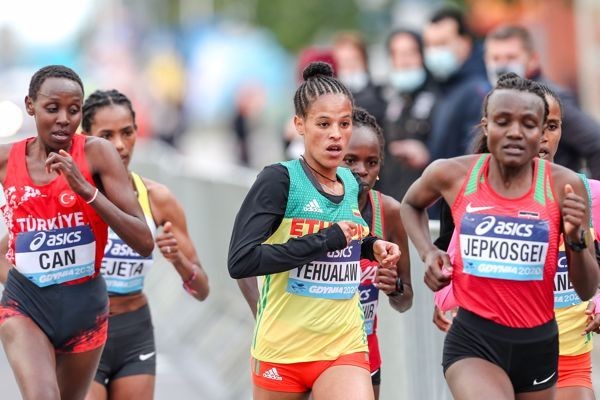
Yehualaw's agent Daan van den Berg said: "Yalemzerf will only do two half marathons this year - Istanbul and the Antrim Coast Half - along with two 10,000m before the Olympic Games.
"The Antrim Coast coming three weeks after the Olympics is perfect timing, and we know if the Irish crowd get behind her she can break the world record as last year's race looked brilliant, with 35 out of 62 runners recording personal bests."
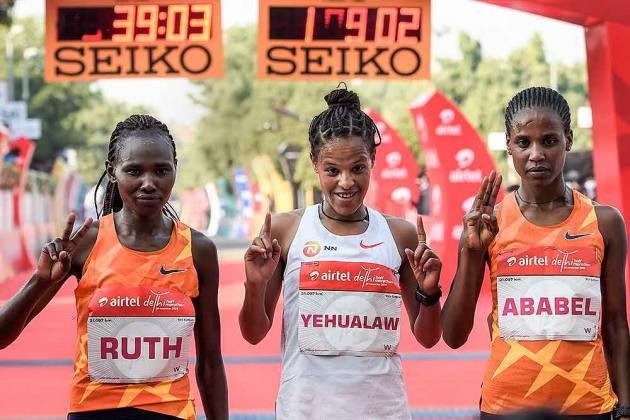
Yehualaw finished third at last year's World Championship after leading for most of the race before tripping on the finishing straight mat, and will be joined at the Larne event by Ethiopian team-mates Yitasyish Mekonnen and Tsehay Gemechu.
The African stars will be joined by early confirmed British internationals Jo Pavey, Sam Harrison, Tracy Barlow and Kirsty Longley.
The men's race will be one of the greatest half marathon fields ever assembled in the UK or Ireland. Race organisers have made no secret of attacking the 60-minute barrier and already have a strong international line-up, with four sub-60 runners already confirmed.
Making their first appearance ever in Ireland will be the African quartet of Tesfahun Akalnew (59.22), Victor Kiplangat (59.26), both from Uganda, Abrar Osman (59.47) of Eritrea and up and coming Kenyan Daniel Mateiko, all of whom will be attacking Sir Mo's course record 60.27 from last year.
It is hoped Sir Mo - coached by Larne-born Gary Lough, who is married to distance legend Paula Radcliffe - could be coming to Larne with Olympic gold number five tucked safely away after Tokyo.
(03/13/2021) ⚡AMPby Frank Brownlow
MEA ANTRIM COAST HALF MARATHON
The MEA Antrim Coast Half Marathon 2022 has been approved by World Athletics as an Elite Event. The World Athletics certified course takes in some of the most stunning scenery in Europe, combined with some famous landmarks along the route. With it's flat and fast course, the race is one of the fastest half marathons in the world. Starting...
more...China is offering vaccines against covid -19 to Olympic and Paralympic athletes
International Olympic Committee (IOC) president Thomas Bach announced recently that the Chinese Olympic Committee has offered COVID-19 vaccine doses to athletes competing at the Olympic and Paralympic Games this summer, as well as the 2022 winter Games in Beijing.
According to the BBC, Bach said that the IOC will be paying for these additional vaccines set aside for the athletes.
“For each of these doses, the IOC will pay for two doses more which can be made available to the population in the respective countries,” he added.

Exactly how many vaccine doses that will require is unclear, because the pace of the vaccine rollout in some countries may be fast enough that their athletes will have already received the vaccine before the Games begin. This could be the case, for example, in the United States.

“The broad base of athletes may have access to the vaccine sooner than we thought initially possible,” said Sarah Hirshland, United States Olympic and Paralympic Committee chief executive.
Some critics believe that China offering to immunize athletes ahead of the Games is nothing more than a PR stunt in response to increasing calls to boycott next year’s Winter Games because of political reasons. Still, the opportunity to vaccinate at least some of their citizens will be a welcome relief in countries where vaccine programs have been very slow.
Despite China’s offering, Olympic committees in countries like the U.K., the United States and Germany have said that their athletes must wait in line like everyone else to receive their vaccinations.
The IOC has made it clear that they’d prefer as many athletes as possible to arrive in Tokyo with both doses, but maintain that it is not mandatory in order for them to compete and are not asking governments to change their vaccination rollout plans.
(03/12/2021) ⚡AMPby Brittany Hambleton
Tokyo 2020 Olympic Games
Fifty-six years after having organized the Olympic Games, the Japanese capital will be hosting a Summer edition for the second time, originally scheduled from July 24 to August 9, 2020, the games were postponed due to coronavirus outbreak, the postponed Tokyo Olympics will be held from July 23 to August 8 in 2021, according to the International Olympic Committee decision. ...
more...Athletics Ireland confirm positive Covid case in team that returned from European Indoor Championships in Torun
Athletics Ireland have confirmed that a member of the Irish team returned a positive test for Covid-19 on Thursday morning after competing at the European Indoor Championships in Torun, Poland at the weekend.
As a result, all team members have been personally contacted and close contacts of the positive case in the travelling party are now self-isolating for a period of 10 days, from last Monday, in line with public health guidelines.
Athletics Ireland is liaising with all relevant authorities to manage this matter and continues to follow all protocols as agreed with the Sport Ireland Expert Advisory Group and the HSE.
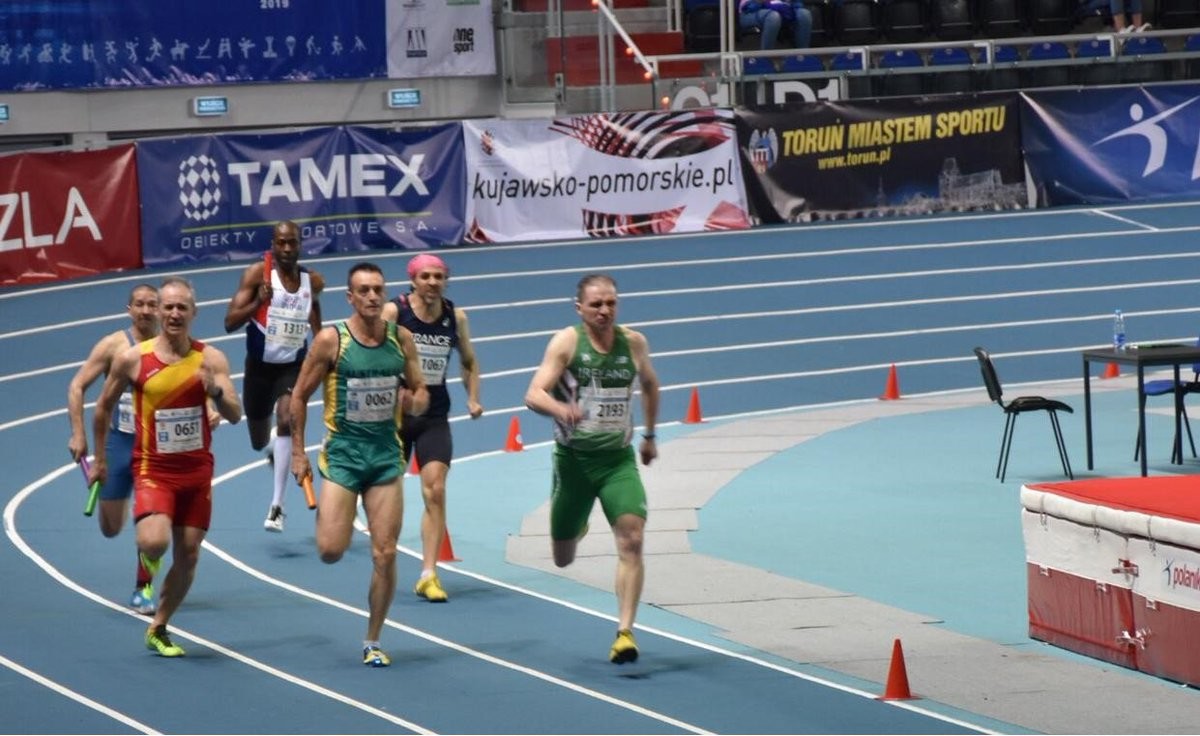
Athlete Darragh McElhinney was a late withdrawal from the team after the 3,000m runner returned a “weak positive” prior to departure, despite several negative tests either side of it.
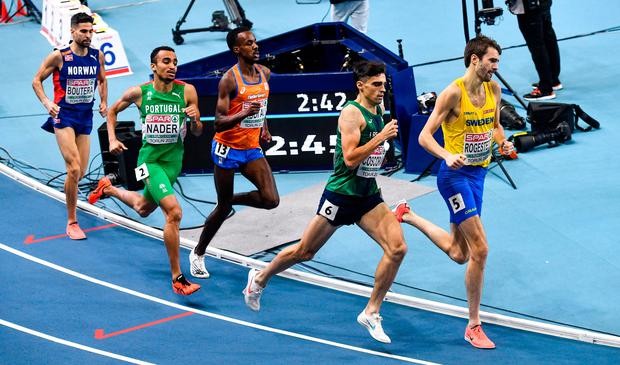
The entire British athletics squad have been also forced to self-isolate after a member of the support staff returned a positive lateral flow test for Covid-19.
British Athletics confirmed the 46-strong squad, who won a total of 12 medals at the Championships, must undertake a period of 10 days in isolation in line with UK government guidance.
Despite strict protocols, all competing athletes required to test negative upon arriving in Poland and again in Torun, as well as submitting to further tests every five days, several positives cases impacted on events.
Poland’s men’s 4x400m squad, fancied to win gold, had to withdraw following an outbreak , and Belgian sprinter Eline Berings also criticized the testing procedure after she was forced to withdraw from the semi-finals of the 60 meters, claiming it was due to a false positive.
(03/12/2021) ⚡AMPby Ian O'Riordan
European Athletics Indoor Championships
Witness six sessions of action-packed sport over three days of intense competition as some of the best athletes in the world compete for prestigious European titles. Don’t miss the opportunity to witness this thrilling event and get closer to the action. ...
more...The Best Ways To Stay Healthy And Fit Even If You Are Very Busy
When you are working it can be hard to fit in time to look after yourself. However, you need to make some time whenever you can, even when you are really busy. If you do not look after yourself now, and you do not follow a healthy diet and lifestyle then you can find that illnesses can quickly catch up with you and slow you down. So, it is important to make changes as soon as you can so that you can start to reap the rewards both now and in the long term.
Food and Diet are Key
It can be hard to cook and plan nutritious meals when you are constantly on the go. However, it is important to stop and eat properly when you can. It is not always possible, but to make it easier on yourself you could try batch cooking. When you cook and freeze meals in advance you always have something healthy and nutritious in the freezer waiting for you, all you need to do is reheat it. This is good for when you know you will be getting home eventually, even if do not know what time.

Supplements are essential

If you are not sure when you are getting home, or if you are even getting home then you need to use supplements. Your productivity levels, energy and concentration will all be affected if you do not get the goodness that you need. There are men’s vitamins and supplements tailored specifically to men’s requirements and needs, and these are what you should be taking.
They feature a natural blend of ingredients that ensure they will be easy on your stomach. In tablet or gummy form, they are easy to swallow even if you are on the go. Supplements also come in a handy size which is ideal to carry around with you, so you can take them with you even when you are away from home and on the move.
Exercise is a must
Any exercise that you get chance for is beneficial. Exercise makes you feel good as you release endorphins in the process. Exercise also keeps your body working efficiently and effectively. When you exercise you increase your heart rate and you strengthen your cardiovascular health in the process. Exercise, whether gentle or high octane gives you a way to release any excess energy you may have, or it can also give you a burst of energy to keep you going.
Rest and sleep are a necessity
You need to rest or you will not be able to sustain your work load. Even when you are super busy you still need to take (or create) some free time within your day to rest. You cannot keep going at the speed or pace you currently are, without heading for a breakdown, especially if you have not had adequate rest or sleep, so make time to rest. Remember that even short power naps can be better and more beneficial to you and your overall health than simply not sleeping at all.
(03/12/2021) ⚡AMPby Colorado Runner
BMW Dallas Marathon Festival Moved to December 10-12 due to pandemic
The Board of Directors and Staff of the BMW Dallas Marathon announced the postponement and new date of the running of the 50th Anniversary of the BMW Dallas Marathon Festival, from April 30 – May 2 to the weekend of December 10-12, 2021.
“Unfortunately, due to the continuance of the COVID-19 pandemic, we are unable to host the BMW Dallas Marathon Festival this spring in a manner that our participants and guests have come to expect and enjoy from our organization” said Paul Lambert, President of runDallas, a nonprofit organization that raises money for Scottish Rite for children through hosting the BMW Dallas Marathon Festival.
Stated Mark Rybczk, Chairman of the Board of Directors “the health and safety of our runners, walkers, volunteers, partners and all guests are of the highest priority while we continue to navigate through this pandemic.”

In addition, “while we are very disappointed in postponing the event, we look forward to hosting our 50th Anniversary in December in the right environment to safely celebrate the running of the 50th Anniversary of the BMW Dallas Marathon Festival.”
Registered runners have these three options to select from during the month of March:
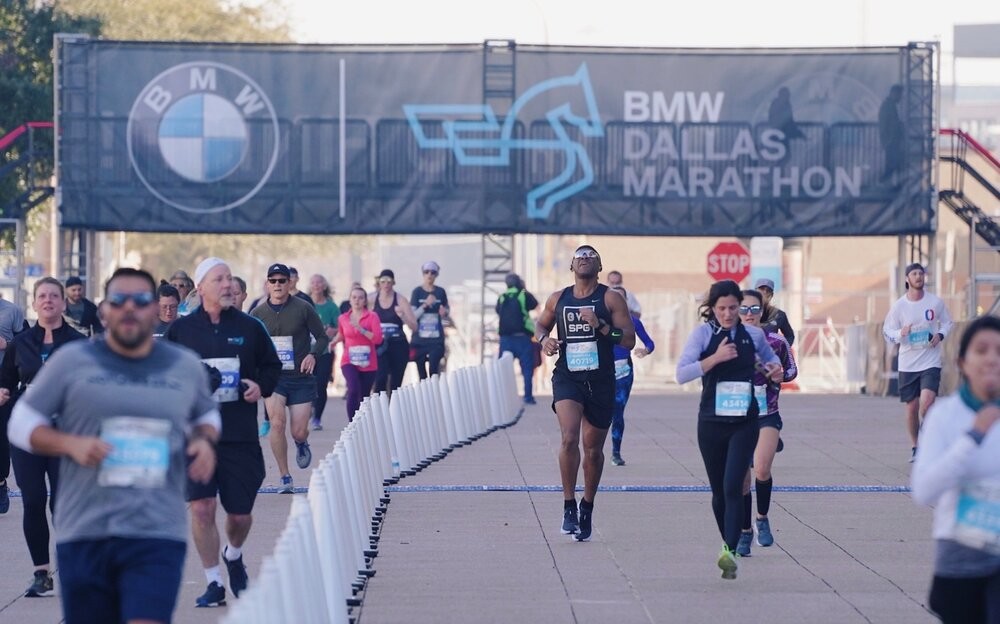
- Take no action and their registration will defer to December- Convert their registration to do the 50th Anniversary Virtual event in May
- Elect to run in both events by entering the BMW Pegasus 50th ChallengeNonregistered runners can register in the month of March for the BMW Pegasus Challenge or the 50th Virtual in May, or through December 10th for the 50th Anniversary in person event.
The BMW Pegasus 50th Challenge is comprised of two 50th Anniversary themed events, the May virtual event (5 individual event distances to choose from) and the 50th Anniversary of the BMW Dallas Marathon Festival in December (10 event distances to select from).
Runners and walkers who participate in both events will receive 50th themed amenities specific to each event distance, plus a bonus 50th running cap, as well as double their chance of winning the 2021 Special Edition BMW car.
All participants who registered for the Virtual event in December of 2020, the Virtual event for May of 2021, and or the in-person event for December of 2021, will be entered into the sweepstakes to win the BMW car to be drawn at the start line of the Marathon on Sunday, December 12th.
We are also announcing today a partnership with Kendra Scott to celebrate our 50th Anniversary. Starting today, participants can purchase a specialty priced 50th Anniversary gold necklace with proceeds benefiting the Scottish Rite for Children.
(03/12/2021) ⚡AMPBMW Dallas Marathon
The BMW Dallas Marathon is the result of the efforts of a pioneering group of brave Dallas runners, who had the foresight to establish an annual 26.2-mile race more than 40 years ago. In 1971, Tal Morrison – the official founding father of the marathon – placed a $25 ad in Runner’s World beckoning runners from around the country to...
more...Gearing up for the Yuengling Shamrock Marathon Weekend for Virginia Beach with all-new, COVID-safe race
The capacity limits will be different, the timing will be different, the courses are new and it will kick-off at King Neptune.
We're coming up on a year of COVID-19 in the U.S.
So many events were canceled in 2020 and already Norfolk called off its 2021 St. Patrick’s Day parade.
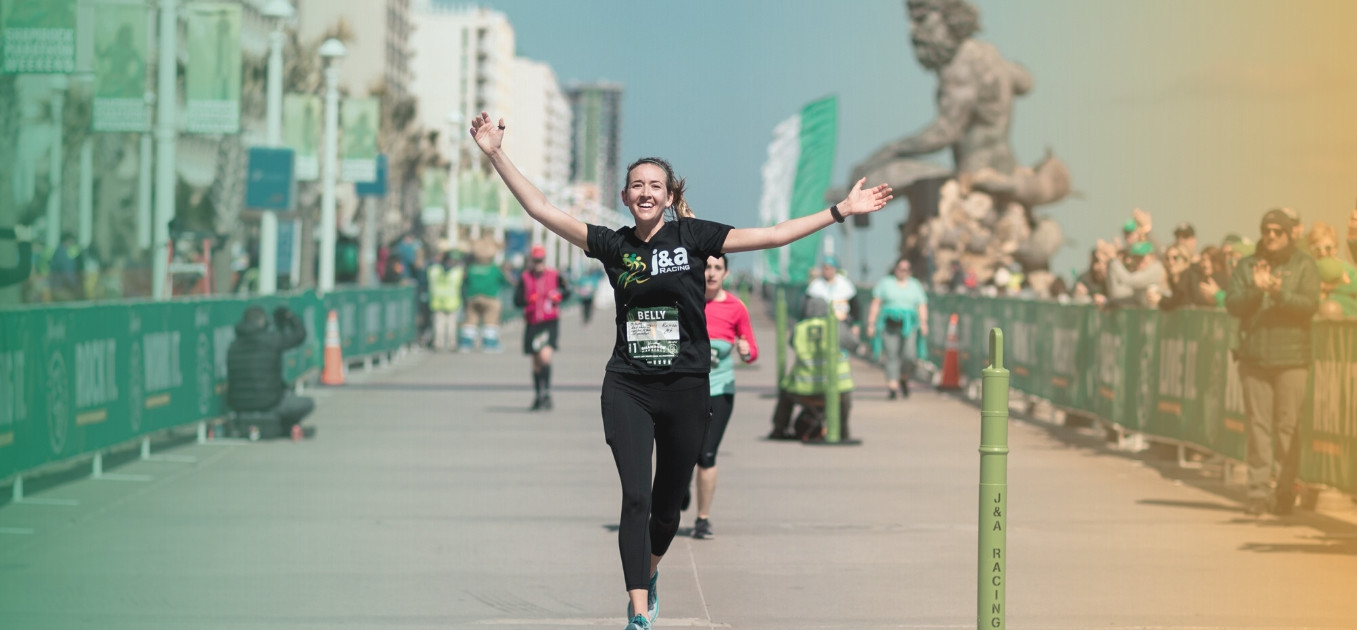
“About 30,000 people show up to watch the parade,” said Norfolk Vice Mayor and parade committee member Thomas Martin. “With current guidance, we just didn’t feel like we could do that safely.”
Still, a lot of organizers are looking at how to not miss out in 2021. That is especially true in Virginia Beach. As the city is seeing more record-breaking COVID case days, the organizer of the Yuengling Shamrock Marathon Weekend has some ideas on how to keep runners safe.
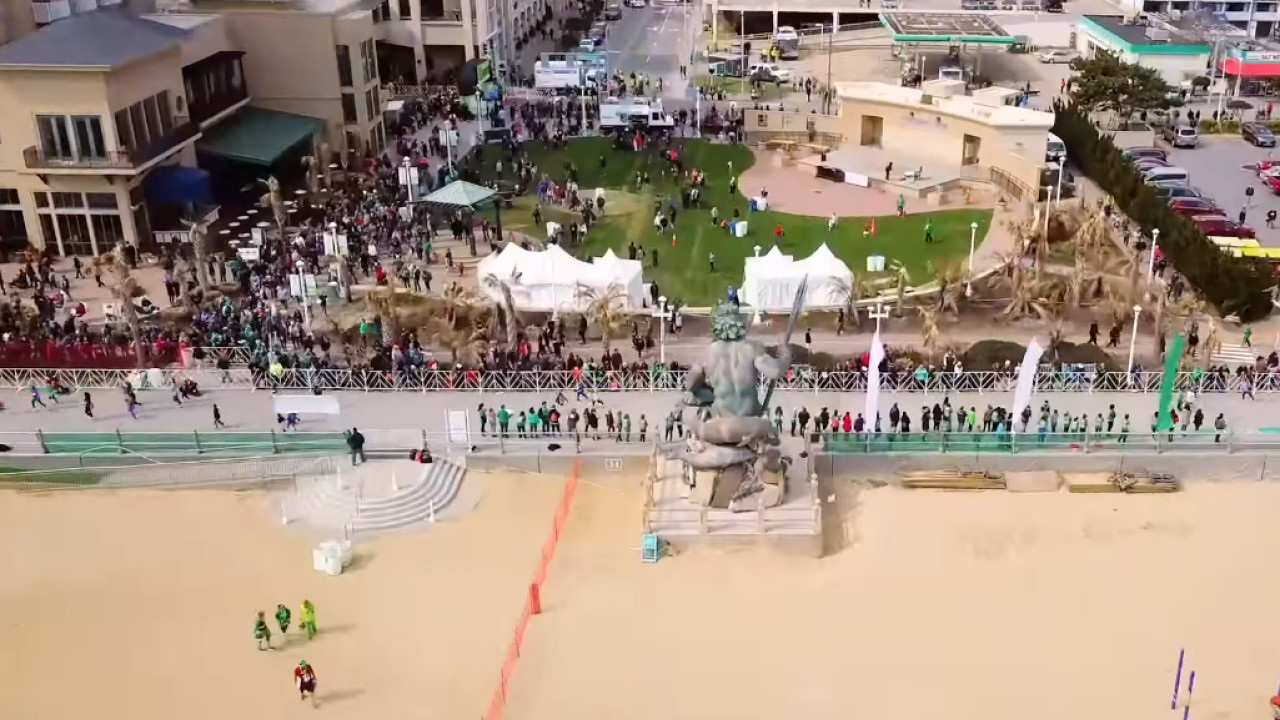
Their luck ran out when COVID forced them to cancel their 48th weekend last year.
“The big tent was already up on the beach; everything was set, and the Governor declared a state of emergency,” said J&A Racing Co-director Jerry Frostick.
The 49th year brings a one-of-a-kind, COVID safe, race.
“There is no, 'On your mark. Get set. Go,'” Frostick said.
To cut the crowds, racers can run the 8K, half or full marathon any time over the weekend between 7 a.m. and 5 p.m. each day.
“You’ve got 10 hours a day that you can go at your own pace,” Frostick said.
The three new courses are spread out around Virginia Beach, along the Boardwalk and sidewalks, not the main roads. Races will still be timed.
The biggest changes of all are the limited capacity, and no party tent to celebrate.
Frostick said their usual 25,000 race count will be between 5,000 and 7,000, with many of those runners doing it virtually.
“It’s a huge difference,” Frostick said.
The tradition jumpstarts the summer season for Oceanfront businesses.
“All the businesses have supported this for 49 years,” Frostick said. “And they’ve had a really tough year, as all of us small businesses have.”
Frostick said running is also just good for the soul, especially during a global pandemic. His team is focusing on positivity and changing luck for their 49th year.
“It’s not the same experience, we acknowledge that,” Frostick said. “But it’s what we can do, instead of what we can’t do.”
(03/11/2021) ⚡AMPby Allison Blaze
Yuengling Shamrock Marathon
The Shamrock Marathon was born in 1973. It was the brainchild of Jerry Bocrie, who along with his wife Lori would serve as race director for 30 years. The inaugural marathon had 59 entrants and 38 finishers, and the weekend also featured 1-mile, 2-mile, and 6-mile races. In 1976, the 6-miler gave way to an 8k, which has remained a...
more...Tips to Make a Strong Comeback to Running After an Injury
Coming back from a running injury stinks. But, it stinks a lot less than the time spent actually dealing with the injury. The first and perhaps most important thing to keep in mind when getting back to running after a long hiatus due to injury or an accident: Be grateful for every mile.
The Slow Build
The second you get the green light to begin running does not mean you can jump full-force back into where you left off. It is important NOT to rush things, as patience pays off in the long haul. Gradually increase the amount of time you spend running and supplement the rest with cross-training.
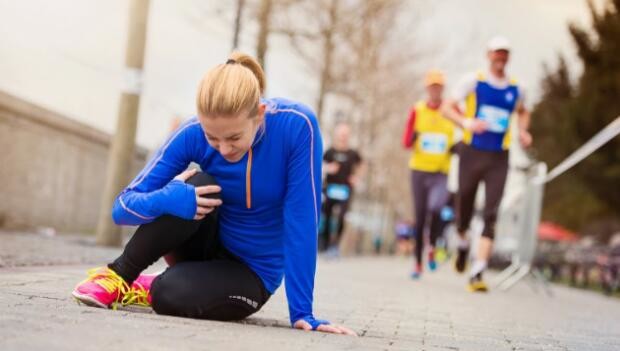
Don't Slack on PT
Many runners, upon getting over their injury, start to get lax on their physical therapy or other rehab exercises. Don't get comfortable and forget that, in order to prevent getting injured again, you still need to keep up on your preventative care.

Post-Injury Comparisons
After a long break, you need to chuck out any and all comparisons to your runner self pre-injury. It will only set you up for frustration and can ultimately derail your comeback. Track the progress you make post-injury and take every victory (ie: extra miles, faster workouts, etc.) as it comes. Eventually you'll return to "old you" workouts and times, but before you hit that realm think of yourself with a totally clean slate.
Miracle of Muscle Memory
Oh how those first few runs will whip your butt! The important thing is to remember that while those first runs will feel like you've got legs that have never run a step in their lives, the good news is, thanks to muscle memory, if you've been a runner for a number of years, you'll snap back into fitness rather quickly. The first couple of weeks will be rough, but stick it out and you'll be motivated by the progress that follows.
One Day at a Time
Being patient is tough for everyone. Sometimes the only way to retain sanity is to take it one day at a time. Rather than focus on how much work you have ahead of you, look at what workouts and goals you can achieve for that day or that week. Set mini goals each week and check them off as benchmarks along your route to making a full comeback to running.
Core, Strength and Flexibility
Make the most of the time you're not able to run by focusing on other weaknesses. Gain flexibility, improve your core and overall strength; not only will this make you feel like you're being productive despite not being able to run much, but it will also pay dividends when you are back and running at your optimal level.
Baby Steps Back
If you start to notice old injury symptoms or new injury symptoms creep up, reassess right away. It may mean not increasing your running for that week, or even taking a few baby steps back for the week. Cut back on the amount of time spent running and do more cross-training. Don't think of this as a sign of defeat; typically, if you catch it and take steps back early, you'll avoid anything serious and be back on "schedule" the next week.
Positivity and Perspective
I'll say it again: The biggest deciding factor in how well you can come back from an injury is perspective. Even on the days when you'd like to burn the elliptical or bike to the ground, give yourself a little window of time to vent. But, in the end, get on the cross-trainer and get it done. Look forward to the runs and more miles as they come and do not forget that each mile is NOT a given. Be grateful for them and, as you are able to run more and are back to full training mode, remind yourself not to take them for granted. This will help you remain patient and keep your eyes focused on the long term.
(03/11/2021) ⚡AMPby Caitlin Chock
2021 Bolder Boulder Cancelled Again
The organizers of the Bolder Boulder 10K road race say that COVID-19 restrictions prevent them from running the event in 2021. It’s the second year in a row that the coronavirus pandemic has led to the cancellation of the event which had taken place in Boulder on Memorial Day since the 1970s.
“The bottom line after talking daily with public health officials, the city of Boulder and the University of Colorado is that safety restrictions and our timeline prevent us from holding the traditional BOLDERBoulder,” the race organizers wrote on the Bolder Boulder website.
As an alternative to the timed race of 50,000 or so participants, organizers have announced plans to allow for runners and walkers to experience alternative timed 10K options over the Memorial Day weekend.

They’re calling it Bolder on The Run 10K.
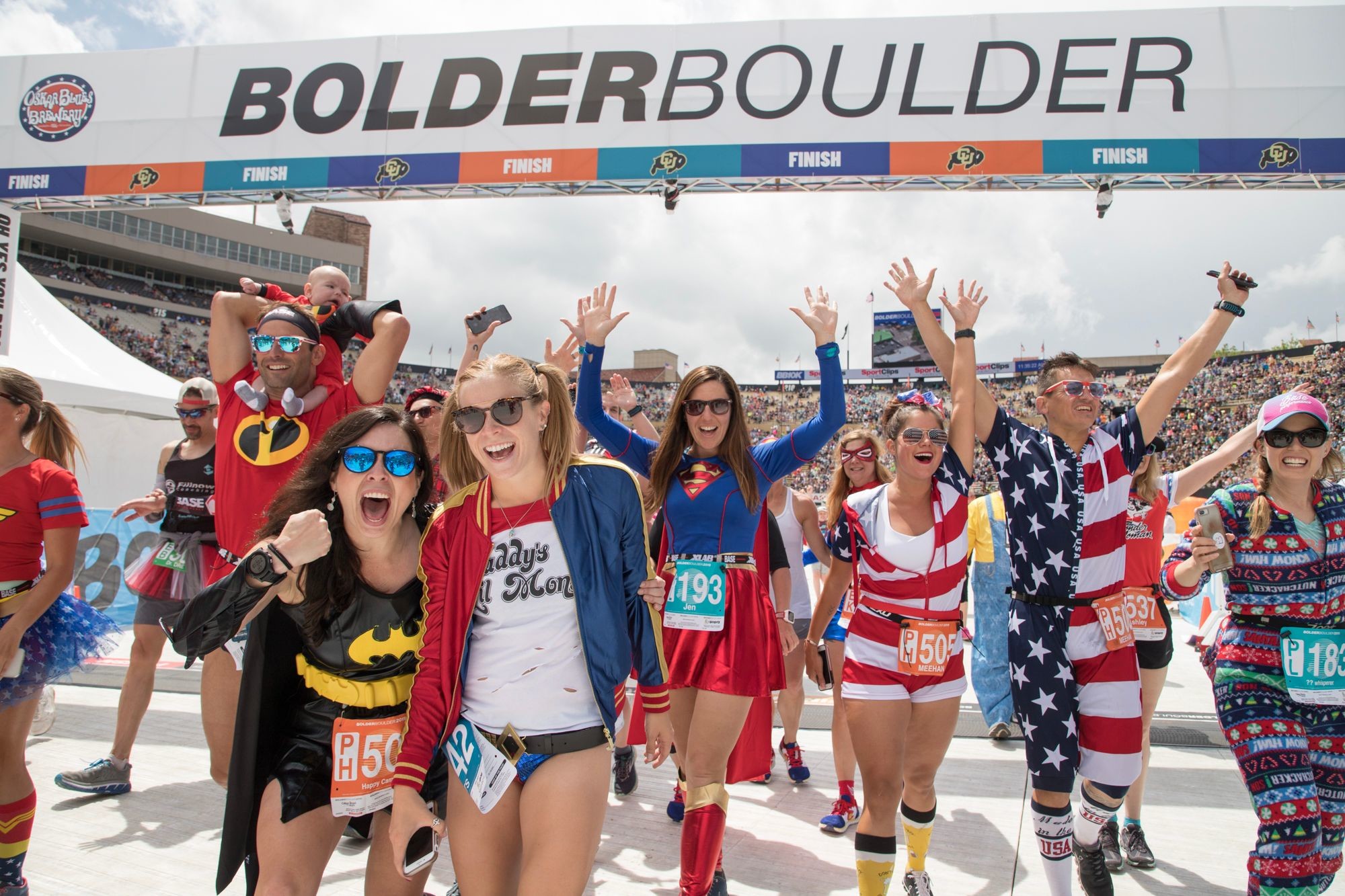
Racers will be given the opportunity to line up during various time slots at five different locations across Colorado’s Front Range, and there will be a cap on the number of participants allowed.
According to the website, “All courses will be marked, measured and timed using RFID tags on the bibs.” The five different courses are as follows:
– Mary Carter Greenway Trail, Littleton/Denver– Firestone Trail, Firestone– Interlocken, Broomfield– The Ranch, Loveland– Coal Creek Trail, Erie.
(03/11/2021) ⚡AMPby Colorado Runner
BOLDER BOULDER
In 1979 we dreamt of attracting a few hundred of our friends to race though the streets of Boulder, Colorado to celebrate Memorial Day with our families. Fast forward almost 40 years and the Bolder BOULDER has grown to become one of the largest and most highly acclaimed 10K’s in the world. Almost 1.2 million runners, joggers, walkers and spectators...
more...Ruth Chepng'etich believes lack of foreign fans at the upcoming Tokyo Olympics will affect many athletes' performances
On Tuesday, Kyodo News Agency reported that the organisers are planning to lock out foreign supporters from the Games due to the ongoing coronavirus pandemic, leaving many to ponder what this will mean for the global show.
Chepng'etich said the presence of fans, especially Kenyans, is an added impetus for her — as well as other Kenyan athletes — especially when the going gets tough in the road races.
"Many times, your legs are weak and tired and that's when the fans come in. There are many races in which the sound of fans cheering me on and screaming my name has fueled me to give my all and repay them by crossing the finish line first. With the ban on foreign fans at Tokyo, am afraid that performances will be slightly impacted especially at vulnerable moments," Chepng'etich said.
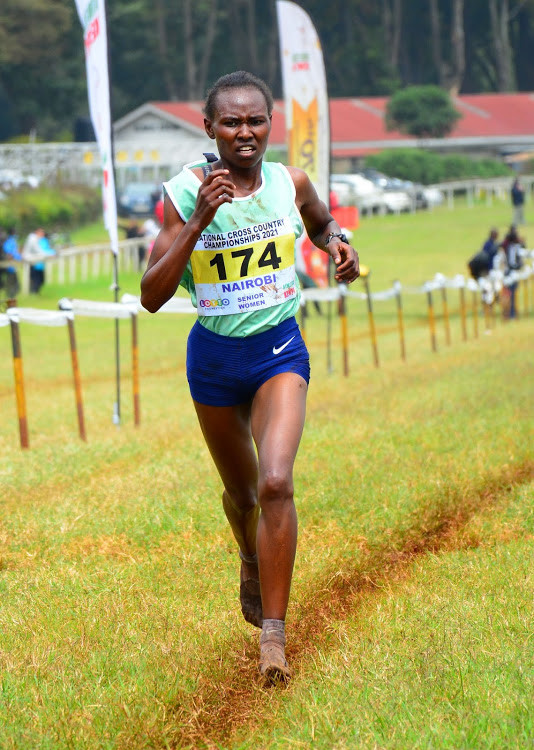
Chepng'etich hopes that training in solitude at her Ngong' base will however give her a psychological edge when she hits the Tokyo roads alongside other marathoners during July 23-August 8 event.
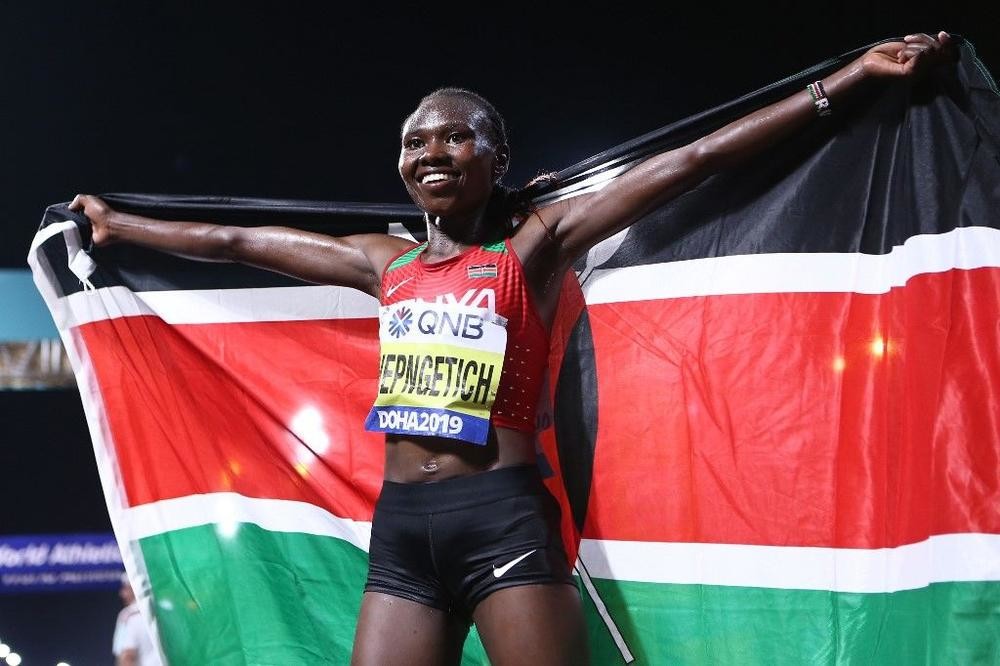
"I have been training exclusively in Ngong' rather than my home area in Kericho due to the Covid restrictions and the need for quarantine. Regardless, I have put in a lot of work with a focus on securing an Olympic gold medal to add to my world marathon champion collection," she said.
The fourth-fastest female marathoner has set her sights on breaking the world marathon record currently held by her Team Kenya teammate Brigid Kosgei.
However, she concedes this will not be a walk in the park considering Kosgei has severally expressed her desire to reduce her record to 2:13.00.
"The competition will not be easy; I am not expecting it to be considering the prestige that comes with competing in the Olympics. This is a once-in-a-lifetime opportunity for which all athletes have been preparing for many years. Therefore, I expect a tough competition not only from my able compatriots but also from other nations because every one will give their all," she said.
Despite this sobering assessment, Chepng'etich is still bullish that the Kenyan quartet of Peres Jepchirchir, Vivian Cheruiyot, Kosgei and her can produce a 1-2-3-4 finish in Tokyo.
(03/11/2021) ⚡AMPby Omondi Onyatta
Tokyo 2020 Olympic Games
Fifty-six years after having organized the Olympic Games, the Japanese capital will be hosting a Summer edition for the second time, originally scheduled from July 24 to August 9, 2020, the games were postponed due to coronavirus outbreak, the postponed Tokyo Olympics will be held from July 23 to August 8 in 2021, according to the International Olympic Committee decision. ...
more...Athletes could be required to undergo more COVID-19 testing at Tokyo 2020 due to the the spread of more transmissible variants
Tokyo 2020 President Seiko Hashimoto has suggested the number of times athletes are tested for coronavirus could be increased amid growing fears over the spread of more transmissible variants.
Plans are in place for competitors to be tested once every four days during their time at this year’s rescheduled Olympic Games.
But Hashimoto is now considering increasing the testing frequency after the emergence of variants first identified in the United Kingdom, South Africa and Brazil which are continuing to spread worldwide.

Speaking to Japanese media, Hashimoto revealed that International Olympic Committee (IOC) President Thomas Bach had called on organisers to implement a stricter testing protocol to combat the virus.
"From the athletes' perspective, I think it's better that testing rules are strict to begin with rather than having a change in protocols announced midway through [the Games]," said Hashimoto in a report by Kyodo News.

"We do need to think about [increasing testing frequency)."
Hashimoto spoke to Bach during a recent meeting involving the Tokyo 2020 Organising Committee, the IOC, the International Paralympic Committee, the Tokyo Metropolitan Government and the Japanese Government.
Around 11,000 athletes are expected to compete at the Olympics in Tokyo.
But the number permitted to march in the Opening Ceremony is set to be restricted with Hashimoto suggesting it will be around a third of the amount that took part in the event at Rio 2016 which exceeded 12,000.
"Hopefully we can send the world a movie that provides a ray of light as we agonise and suffer from the coronavirus," Hashimoto about the staging of the Opening Ceremony.
"Given the situation, it might not be an Opening or Closing Ceremony where many people gather."
Hashimoto also indicated that changes could be made to the scheduling of events should an outbreak of coronavirus occur at the Games.
"We need to simulate for any potential scenarios," said Hashimoto.
"It's hard to think there won't be anything happening.
"Having no spectators is not totally ruled out."
The Games were originally scheduled to take place last year before being postponed to 2021 due to the coronavirus pandemic.
The Tokyo 2020 Olympics are due to open on July 23 and conclude on August 8.
(03/10/2021) ⚡AMP
by Geoff Berkeley
Tokyo 2020 Olympic Games
Fifty-six years after having organized the Olympic Games, the Japanese capital will be hosting a Summer edition for the second time, originally scheduled from July 24 to August 9, 2020, the games were postponed due to coronavirus outbreak, the postponed Tokyo Olympics will be held from July 23 to August 8 in 2021, according to the International Olympic Committee decision. ...
more...London Marathon funding will benefit 29 British runners
London Marathon Events will offer funding to 29 of Britain’s leading endurance athletes this year as part of its ongoing commitment to support distance running.
Among the athletes on the funding list are Amy-Eloise Markovc and Verity Ockenden, who won gold and bronze in the 3000m at the European Indoor Championships in Poland last weekend, plus Marc Scott, who went No.2 on the UK all-time 10,000m rankings last month.
This is the third year London Marathon Events has offered direct support to athletes who sit just outside British Athletics’ World Class programmes and Futures programme, but who still have the potential to star at major competitions.
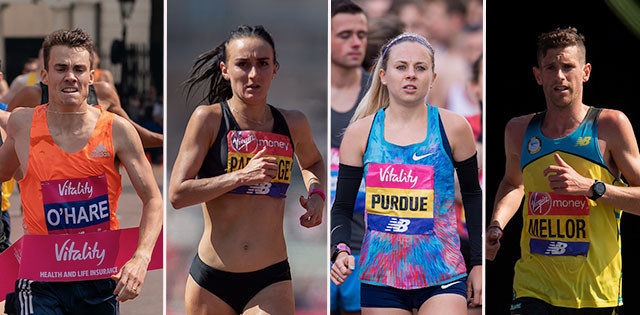
When it comes to helping develop up-and-coming endurance athletes, London Marathon Events also helps support the two new talent hubs in Leeds and Birminingham, The Daily Mile for primary school children in London and of course the Virgin Money Giving Mini London Marathon.

The impact of this funded pathway is already showing results, as seen in Poland last weekend. Medallists Markovc and Ockenden are on the current elite athlete funding programme while two graduates from the programme, Piers Copeland and Neil Gourley, made the 1500m final.
Meanwhile, four athletes from the talent hubs were competing in Poland, led by Keely Hodgkinson plus Isabelle Boffey, Amelia Quirk and Phil Sesemann.
Hugh Brasher, Event Director of London Marathon Events, said: “Since the London Marathon was founded in 1981, we have worked to improve endurance running in this country. We are committed to providing a pathway from the playground to the podium for athletes in this country, from The Daily Mile to our elite athlete funding programme and it is really encouraging that the Great Britain team at the European Athletics Indoor Championships included so many athletes who have been, or are part of, the London Marathon Events funding system.
“It was wonderful to see Amy-Eloise Markovc, one of our funded athletes, and Keely Hodgkinson, supported by one of the talent hubs, win gold medals over the weekend and we will continue to work to support the success of future British international athletes.”
All athletes who were on the 2020 programme have been offered funding for 2021, with the exception of Copeland and Jake Smith who have both graduated to British Athletics’ Futures Academy programme.
There has been one addition to the funding list for 2021 with US-based Sam Atkin, who 27:26:58 for 10,000m in December.
Brasher said: “Last year was an incredibly difficult year for everyone, including our elite athletes. With the lack of races and the difficulties they faced in accessing both training and support facilities, we believe it is right and fair that those who were on last year’s programme have the same opportunity in 2021.
“Even with all the challenges of last year, athletes on our funding programme had an extremely successful 2020, winning a total of 13 British Athletics championships medals and that has continued into 2021 with Marc Scott’s phenomenal run in California and the great performances at the European Athletics Indoor Championships.
“This shows that our plan to provide a bridge to British Athletics’ funding is working and we hope the class of 2021 continue that progression and we see as many of them as possible competing in the Tokyo Olympic Games.
(03/10/2021) ⚡AMPby Jason Henderson
Akron Marathon confirms return this year
After a year of isolation due to COVID-19 and months of cold weather, it's time to start running again.
The Akron Marathon on Tuesday announced there are 200 days to go before the main event in September. The first event is set for June, and slots are filling up. Half of the September marathon registrations already have been spoken for as well.
Summit County Public Health approved the plans in a letter to the nonprofit back in November, stating the protocols established were, "very thorough and well thought-out," according to Tonia Burford, environmental health director.
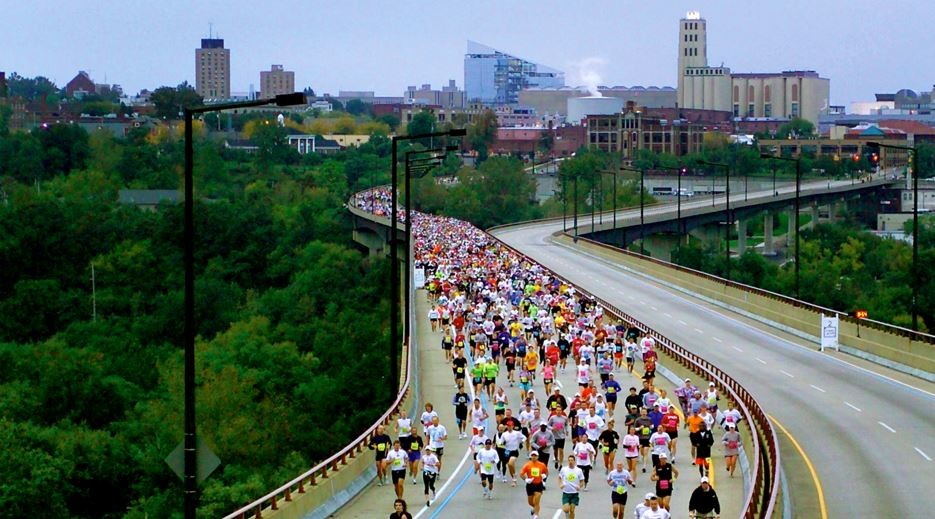
"With the staggered start and bracelet system you have implemented to limit capacity in the races that end in stadiums, there is no need to apply for a variance at this time under the current sports directors' order," Burford wrote.
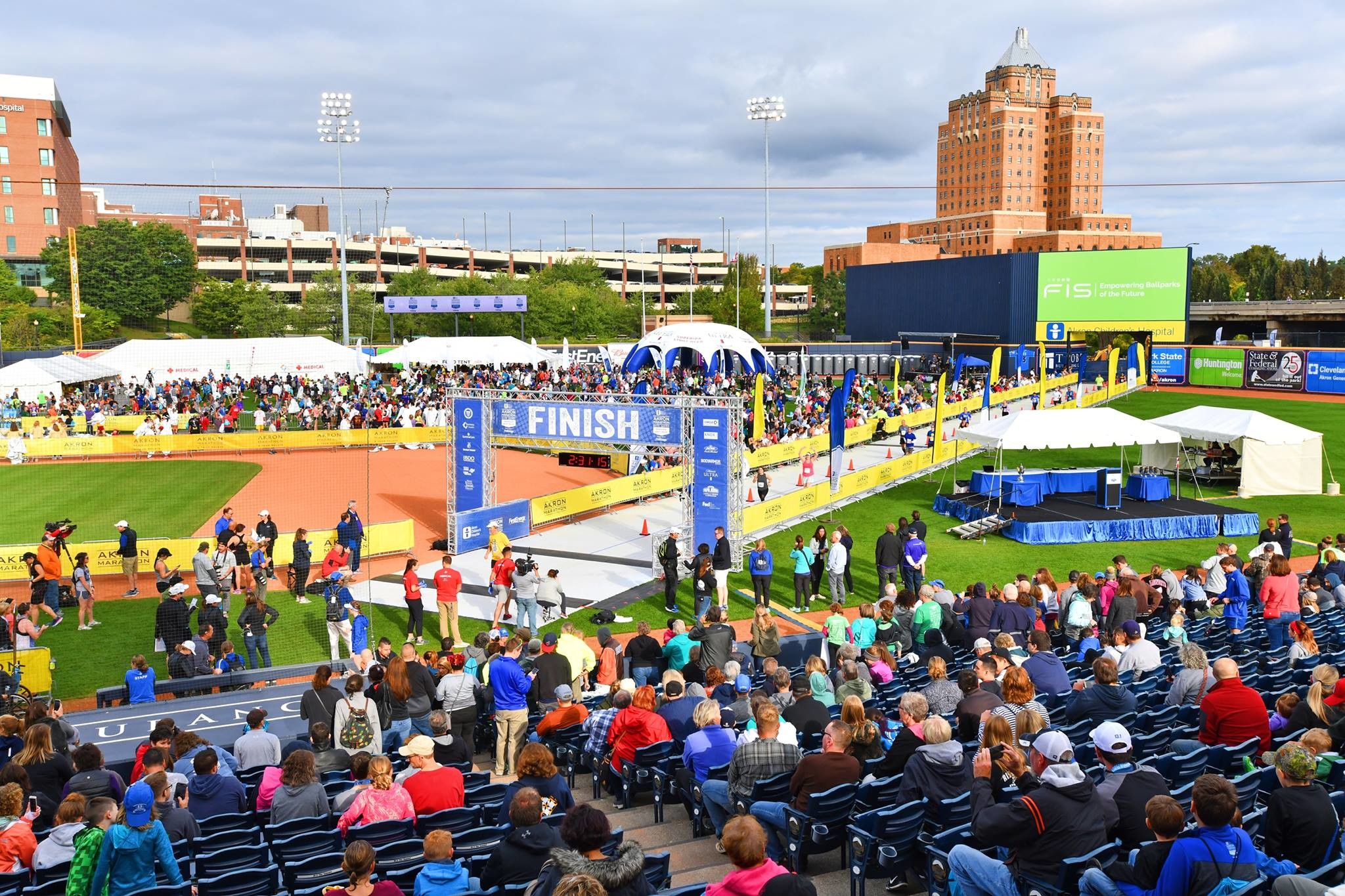
Plans for the Expo remain pending, race officials said.
After canceling the first two races last year, the Akron Marathon hosted a virtual race last September.
The city of Akron approved plans for this year's in-person race series at the end of February.
The city will continue to follow the guidance of Summit County Public Health regarding health and safety protocols necessary for race days with the understanding that these are subject to change based upon the restrictions and orders in lace at the time of the races," Mayor Daniel Horrigan wrote Feb. 24, adding the city will provide security and safety forces to support the event.
The Akron Marathon announced the approvals Tuesday on social media, inviting the community to start training for the signature event, scheduled for Sept. 25 at FirstEnergy Stadium.
(03/10/2021) ⚡AMPby Eric Marotta
Akron Marathon Race Series
The marquee event of the Akron Children’s Hospital Akron Marathon Race Series, the Akron Marathon, Half Marathon, & Team Relay presented by First Energy receives a fresh new look ! Runners will experience an unforgettable start inside the historic grounds of Stan Hywet Hall & Gardens before taking an exclusive foot tour of the City of Akron. The Goodyear Half...
more...Des Linden will be looking to break the 50K world record next month
Boston Marathon champ Des Linden is officially entering the world of ultramarathoning, as she has announced that she will attempt to break the 50K world record next month.
In mid-April at an undisclosed location (details are intentionally vague because of pandemic concerns), she will take a crack at U.K. runner Aly Dixon‘s record of 3:07:20, which she set in 2019.
In October, Linden invited runners to participate in a challenge she called Run Destober, in which each day, participants ran the number of kilometers (or miles) that corresponded to the date. For example, on October 1 participants ran one kilometer, and on October 31 they ran 31. In total, the challenge worked out to be either 496K or 496 miles.
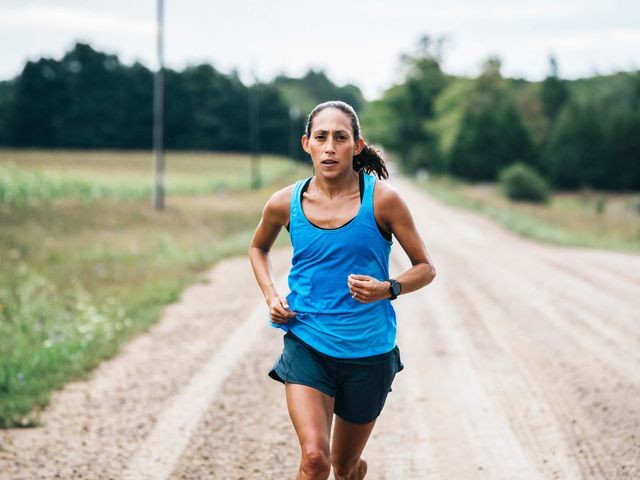
While this was a great way to engage the running community, it was also an effective way for Linden to slowly ramp up her weekly mileage and see how her body responded to the increased volume.
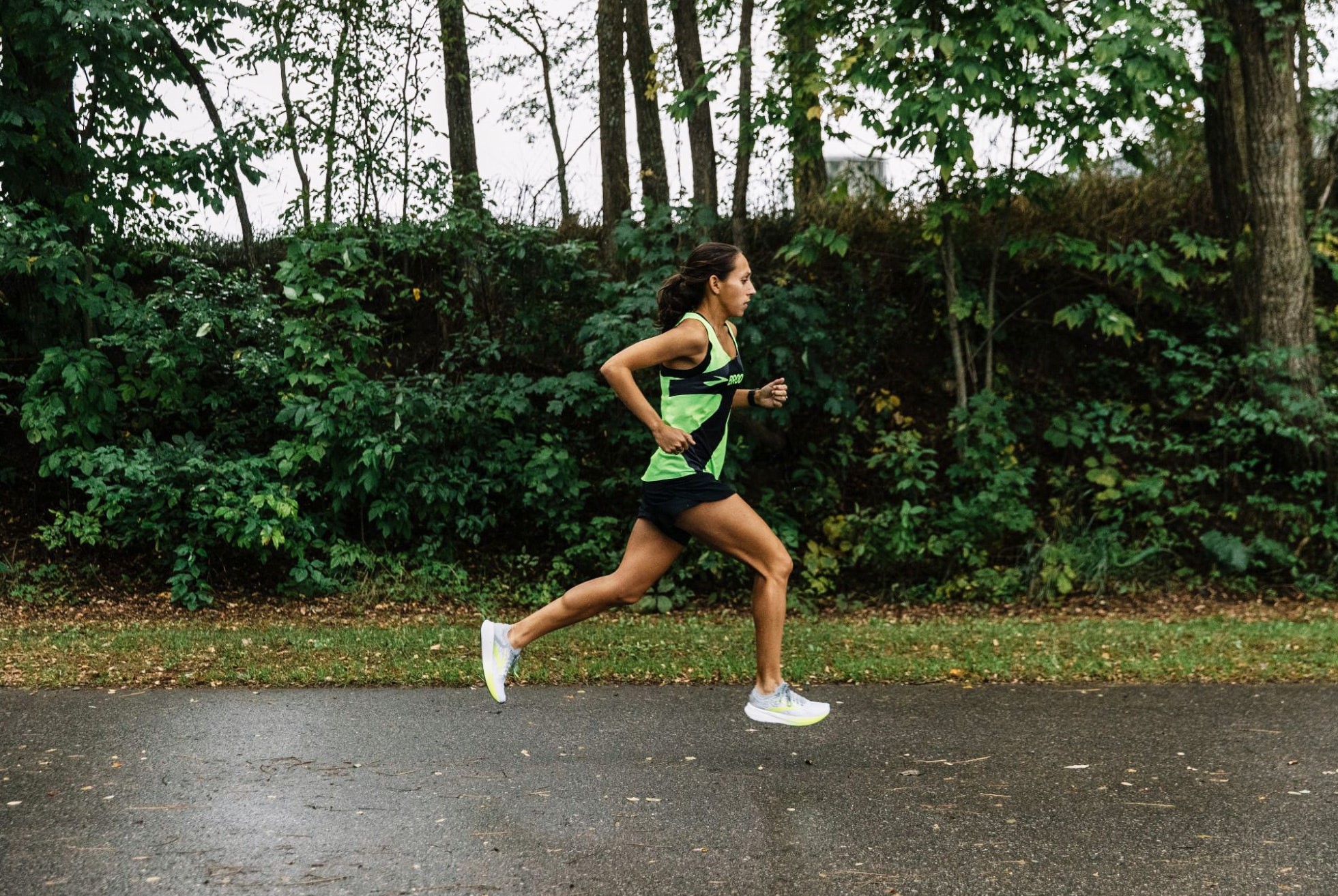
Back in August, Linden also expressed interest in ultramarathoning when she said in an interview that the Comrades Marathon and UTMB were on her bucket list. It is unclear whether this run will take place on the road or the trails, but either way, her result next month will be a good indicator of how she’ll fare when she finally decides to tackle the trails.
The headphone company Jaybird is supporting Linden during her record-breaking attempt, and the official announcement was made on their Instagram page on Tuesday. In order to beat Dixon’s time, Linden will need to maintain a pace of 3:44 per kilometer.
Given that she ran approximately 3:22 per kilometer for her marathon personal best of 2:22:38, this pace doesn’t seem unattainable, but of course, in a 50K race, it’s hard to say what could happen in the last 8K. We will be waiting for her result in April, and if she accomplishes her goal we expect to see Linden attempt more ultras in the future.
(03/10/2021) ⚡AMPby Brittany Hambleton
2021 Los Angeles Marathon date moves to the fall
For the first time in its 35-year history the Los Angeles Marathon Presented by Asics will take place in the fall and will use an updated course, organizers announced yesterday.
Since its inception in 1986, the race was held in March every year but two (May in 2009 and February in 2016), and this year it will be held on Sunday, November 7. That's the same day as the TCS New York City Marathon, the world's largest, which is traditionally held on the first Sunday in November.

In addition, organizers modified their "Stadium to Sea" course, which begins at Dodger Stadium and finishes at the Santa Monica Pier, with a new "Stadium to the Stars" route which retains the previous start location but will finish instead on the Avenue of the Stars in Century City.
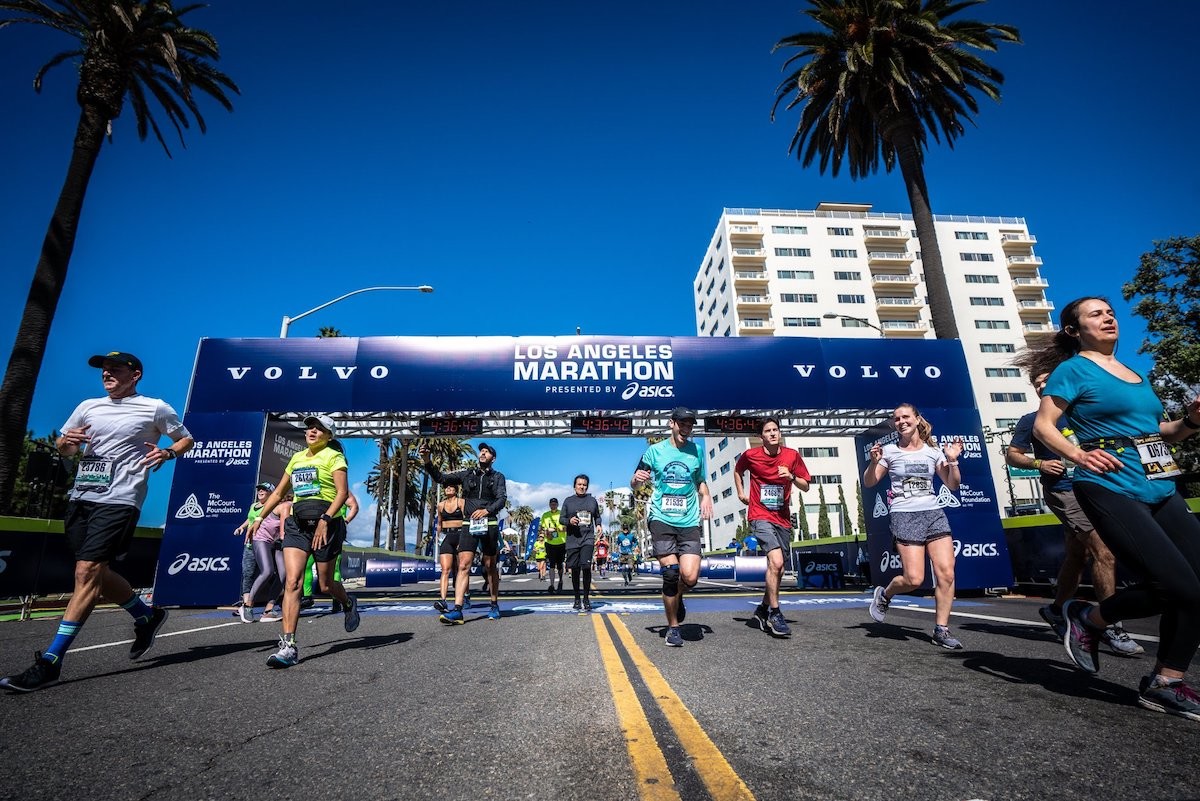
"We've been thinking about the next evolution of the marathon for a few years," said Murphy Reinschreiber, the chief operating officer of The McCourt Foundation which owns and operates the race. He continued through a statement: "Finishing on Avenue of the Stars allows for a more vibrant and exciting finish experience than previously possible. We expect the closing miles and finish line to be the highlight of the must-do, world-class experience that is the Los Angeles Marathon."
Organizers had originally selected Sunday, May 23, for the 2021 edition of the race, but with the trajectory of the pandemic still uncertain the decision was made to move to the fall. Other large marathons traditionally held in the spring are planned for the fall of 2021, too, including Boston (Oct. 11), Hamburg (Sept. 12), London (Oct. 3), Rotterdam (Oct. 24), Tokyo (Oct. 17), and Taipei City (Nov. 21).
Unlike most large road races in the United States, the Los Angeles Marathon was held in the normal format in 2020 on Sunday, March 8. The race recorded 20,989 finishers and was the last truly large road race held in the United States before the pandemic took hold.
(03/09/2021) ⚡AMPLos Angeles Marathon
The LA Marathon is an annual running event held each spring in Los Angeles, Calif. The 26.219 mile (42.195 km) footrace, inspired by the success of the 1984 Summer Olympic Games, has been contested every year since 1986. While there are no qualifying standards to participate in the Skechers Performnce LA Marathon, runners wishing to receive an official time must...
more...

